NBA training camp storylines: Western Conference

With training camps opening across the country, the official start of the 2015–16 NBA season is upon us. This is an uncertain time: optimism runs rampant, as it should, but every team faces ambiguities that could develop into serious problems. On Monday, SI.com’s Rob Mahoney previewed the top storylines facing all 15 Eastern Conference teams. Now, it’s time to take a look at the Western Conference landscape.
Dallas Mavericks
Will a rough summer and a host of injuries produce the first losing season of Mark Cuban’s tenure?
It’s easy to overlook the Mavericks’ run of consistent success when the Spurs continue to roll along in even more impressive fashion just a four-hour drive away. Sure, Dirk Nowitzki isn’t quite Tim Duncan and Rick Carlisle’s one championship leaves him four shy of Gregg Popovich, but stop for a moment and appreciate the full scope of what Dallas has put together. In the 15 full seasons since Mark Cuban took over as owner, the Mavericks have made the playoffs 14 times, they’ve advanced to the second round seven times, they’ve made two Finals appearances, they’ve won 50+ games 12 times, they’ve won 60+ games three times, and they’ve never had a losing season, not not even in 2012–13, when Nowitzki missed nearly 30 games due to injury.
NBA training camp storylines: Eastern Conference
This year could be different, as a losing season is a distinct possibility. Aside from the always brutal nature of the West, there are two major sources of concern: 1) Dallas saw a whole lot of talent go out the door this summer, and 2) Dallas has a whole lot of talent tied up with medical issues.
On the first point, the sum total of outbound talent got lost in the insanity of the DeAndre Jordan affair. In addition to not landing Jordan, Dallas lost Tyson Chandler (its leading rebounder and interior defender), Monta Ellis (its leading scorer and backcourt playmaker), Al-Farouq Aminu (possibly its top perimeter defender), Rajon Rondo (an ill-fitting but experienced point guard), Richard Jefferson (an occasional starter and veteran presence), and Amar’e Stoudemire (a rotation big scooped up off the Knicks’ trash heap), among others.
On the second point, Dallas had the impact of its incoming pieces blunted by injuries. Wesley Matthews, the Mavericks’ top signing, could be out until Christmas as he recovers from an Achilles tear. Deron Williams, the Mavericks’ new starting point guard, has seen his production diminish for three straight seasons as he battles ongoing ankle injuries. Those concerns are compounded by the uncertain status of starting small forward Chandler Parsons, who reportedly underwent a microfracture-like surgery on his knee. Somehow, this leaves Dirk Nowitzki, even at age 37, as the team’s surest bet, which is a real problem considering Nowitzki’s age-induced slippage.
Absent quick returns from Matthews and Parsons and an unexpected revival from Williams, the Mavericks look overmatched against their conference foes. Carlisle’s deserved reputation as a miracle worker will get a strong test this season.
Denver Nuggets
Will Emmanuel Mudiay emerge as the Rookie of the Year?
It’s hard to settle the table better for a rookie point guard than the Nuggets have for Emmanuel Mudiay. GM Tim Connelly told reporters on Monday that Mudiay, 19, will start. There will be no real depth chart pressure, as last year’s starter, Ty Lawson, was shipped out in an off-season trade. Instead, Mudiay will be able to learn from, and play alongside, veteran Jameer Nelson as he acclimates to the NBA game after spending his post-prep year in China. From an expectations standpoint, Mudiay will enjoy a clean slate, as Denver is looking to turn the page with new coach Michael Malone after two disastrous seasons under coach Brian Shaw. Even better, Mudiay won’t need to go it alone: veterans like Danilo Gallinari, Wilson Chandler, Kenneth Faried, and Randy Foye are in place to provide an element of stability.
• MORE NBA: Mudiay will start at PG for the Nuggets
This all amounts to a no-lose proposition for Mudiay, a strong on-ball player who enjoyed a nice showing at Las Vegas Summer League. He gets to familiarize himself with running an offense with some talented pieces around him, but he doesn’t need to stress out about making a playoff push. He gets enough room and space to put up numbers (and miss shots and commit turnovers) without worrying about looking over his shoulder. And he gets to do it all without the large-market scrutiny that will surely follow the Lakers’ D’Angelo Russell or the Knicks’ Kristaps Porzingis.
Given the opportunity in front of him, Mudiay should be viewed as one of the top Rookie of the Year candidates, and perhaps the favorite to win the award. Unlike Russell or Porzingis, there’s no question about the size of his role. Unlike Minnesota’s Karl-Anthony Towns and Philadelphia’s Jahlil Okafor, Mudiay should be in control of his own fate on every offensive possession. A strong rookie year for Mudiay would fall somewhere between what Brandon Knight (12.8 points, 3.8 assists, 11.7 PER) and Derrick Rose (16.8 points, 6.3 assists, 16 PER) managed as full-time starters in their first seasons. Brandon Jennings (15.5 points, 5.7 assists, 14.5 PER), who made a similar prep-to-international-to-NBA journey, makes for an easy comparison and an ambitious target.
Golden State Warriors
Is starting center Andrew Bogut at risk of being further marginalized?
You need a telescope to spot any potential drama with the Warriors right now, as a magnifying glass or even a microscope just won’t do. The defending champions are sitting so pretty: they bring back their top nine guys by minutes played last season, their roster has no immediate injury concerns, and their projection rotation is comprised entirely of players who are 32 and younger. Something will eventually go wrong, but they enter camp with a talented, deep, and balanced squad that is fully capable of running off 67 wins again and claiming a second straight title. The Thunder, Spurs, Clippers, and Cavaliers should all be better than they were last season, but the Warriors can fairly argue that they still possess the highest ceiling of any team in the league.
If there’s one spot to watch, it’s clearly in the middle. While Andrew Bogut, last year’s starting center, garnered All-Defensive recognition and finished sixth in Defensive Player of the Year balloting, the Australian 7-footer averaged a career-low 23.6 minutes per game and is facing challenges from all sides. Most obviously, there’s the temptation to go small with Draymond Green in the middle, an approach that posted an obscenely strong +21.8 net rating during the regular season and helped the title run in 2015 Finals. Then, there’s the ongoing emergence of Festus Ezeli, a 25-year-old center who came on well down the stretch and is eligible for a rookie extension this fall. Finally, there’s Marreese Speights and newcomer Jason Thompson, two deeper reserves who possess greater mobility and a little more individual offensive potency than Bogut. There’s not enough time for everyone, and while Bogut remains near the front of the line, it wouldn’t be a surprise if the organization made it a priority to work in Ezeli to a greater degree, especially in light of Bogut’s long injury history.
Although Bogut struggled early in the Finals and played less than three minutes total in Golden State’s final three wins, coach Steve Kerr will obviously be in no rush to shove him aside. The Bogut/Green pairing is crucial to the Warriors’ success against traditional frontlines, and some measure of Golden State’s smallball success is due to how seamlessly they can shift between various looks. All told, the Warriors’ 2014–15 starting lineup of Stephen Curry, Klay Thompson, Harrison Barnes, Green, and Bogut went 51-7 (.879) in their 58 appearances together, a 72-win clip over a full season. That type of dominating performance surely lands in the “If it ain’t broke, don’t fix it” category for now, but it’s worth remembering that Kerr has multiple options at his disposal if he decides it’s time to pivot away from Bogut.
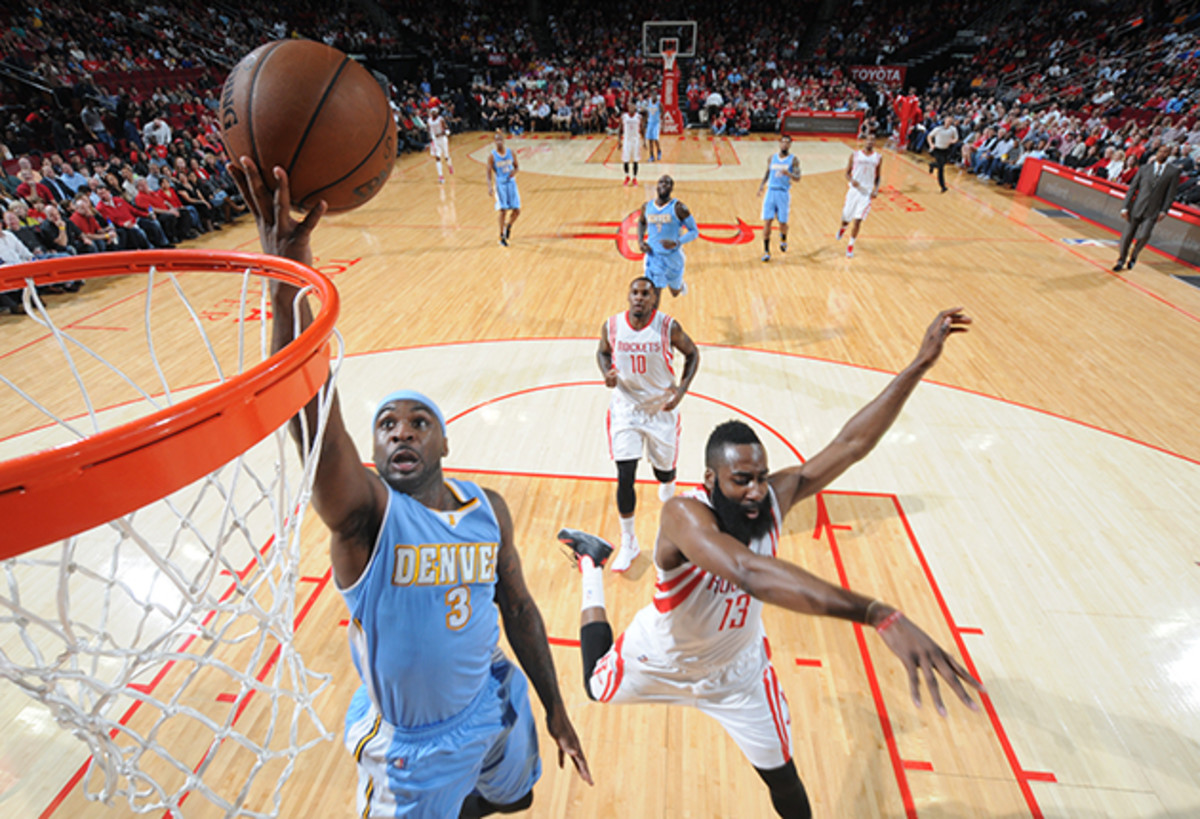
• MORE NBA: Rockets seize opportunity, land Lawson
Houston Rockets
Can Ty Lawson transform from Public Enemy No. 1 to game-changing addition?
Here’s a quick rundown of the biggest additions to contending teams this summer: LaMarcus Aldridge and David West to the Spurs. (A big freaking deal.) Paul Pierce, Josh Smith, and Lance Stephenson to the Clippers. (Meaningful upgrades.) Brandan Wright and Matt Barnes to the Grizzlies. (Overlooked role players.) Tiago Splitter to the Hawks. (Addresses a clear weakness.) Mo Williams and Richard Jefferson to the Cavaliers. (Classic hole-pluggers.) Jason Thompson to the Warriors. (Probably won’t matter.) Rookies Cameron Payne to the Thunder and Bobby Portis to the Bulls. (Check back later.)
And then there’s Rockets guard Ty Lawson who, on pure talent, is better than everyone on the list above besides Aldridge. In terms of fit, Lawson and the Rockets might actually be the best player/team pairing: he helps fill a position of weakness, he complements Houston’s superstars well, and his skills mesh perfectly with Houston’s preferred up-tempo style and efficiency-focused offense. At 27, he’s in his prime, he’s aligned age-wise with the other key members of the team, and he brings playoff experience to a team with championship aspirations.
To further sweeten this scenario, Lawson arrived without costing Houston a major rotation piece in the trade and his addition didn’t require parting with last year’s starting point guard, Patrick Beverley. One could even make the case that the Lawson addition was a cleaner net positive for Houston than Aldridge was for San Antonio, given that the Spurs had to part with Splitter, Aron Baynes, and Cory Joseph—three guys who played 1,000+ minutes last season—so that they could fork over max money to Aldridge.
All of this sunniness, of course, depends entirely on Lawson’s ability to make progress on the off-court issues that made him available to Houston in the first place. Although he won’t need to be the face of the franchise, like Denver wanted him to be, Lawson will face real pressure to deliver given the Rockets’ success last year. If he settles in and makes the most of what he’s called a “fresh start,” Lawson could emerge as the biggest X-factor in the NBA. If things go south, it could get ugly, quickly. Perhaps that’s why both team and player seem to be proceeding cautiously as training camp opens.
Los Angeles Clippers
Do the Clippers finally have the bench they need to make a deep run?
It’s disorienting to mention “depth” in a write-up about the Clippers without the long-mandatory “total lack of” preface. As recently as L.A.’s first-round series against San Antonio, coach Doc Rivers was doing his best to stick to a seven-man rotation despite obvious signs of exhaustion from his stars. During the seven-game series, the Spurs’ bench nearly doubled the Clippers’ bench in scoring, 299–156, and L.A.’s leading reserve scorer, Jamal Crawford, shot a paltry 38.4%. Does L.A. collapse against Houston in the second round if Blake Griffin, Chris Paul, and J.J. Redick weren’t all stuck logging monster minutes throughout the postseason?
DeAndre Jordan: Game in Dallas will be ‘like any other road game’
Kudos to Rivers for getting creative in reassembling his bench unit with limited flexibility this offseason. Honestly, he pulled out every trick in the book, scooping up a bought-out player on the cheap (Josh Smith), trading for a fallen “star” with some headaches (Lance Stephenson), calling on an old friend (Paul Pierce), re-signing his own flesh and blood (Austin Rivers), and making logical use of their minimum deals (Pablo Prigioni, Wesley Johnson, and Chuck Hayes).
To be clear, Rivers still has his work cut out when it comes to assembling his lineups. He hasn’t yet decided whether to start Pierce or Johnson in the small forward hole vacated by Matt Barnes, and trying to find a way to mix together Rivers, Crawford, Stephenson, and Smith on a second unit might very well require a PhD in Chemistry. It’s always better to have too many options, though, and the Clippers no longer look like a team that’s too thin to withstand the West’s grueling playoff bracket.
Los Angeles Lakers
Will Byron Scott coach for the present or the future?
Let’s cut to the chase with the Lakers: only their most delusional diehard fans are holding out hope for a playoff push. The top-end talent just isn’t there, there aren’t enough quality defensive pieces, and Kobe Bryant just isn’t as effective as he needs to be if he’s going to shoot 20 times a game. L.A.’s 2015–16 season should be geared around showcasing recent draft picks Julius Randle, D’Angelo Russell, Jordan Clarkson, and Larry Nance Jr. If you can’t win now, lay some real groundwork.
Nothing is ever quite that simple for the Lakers, who missed out on splashy signings this summer but did add multiple veterans in Roy Hibbert, Brandon Bass, and Lou Williams. Those additions should help the Lakers put a slightly more respectable product on the floor: all three are proven commodities, even if they aren’t A-listers. The danger here is that Scott, a key piece for multiple Lakers championship teams, chases the elusive flicker of short-term success at the expense of playing the long game. Bass might be more ready right now than Randle, but there’s no question who should be the higher priority. Russell might struggle to adapt to the NBA game, as many rookie point guards do, but he needs to have the space to make mistakes. He shouldn’t be pitted against Clarkson in a fight for minutes, either.
• MORE NBA: Bryant among top 10 comebacks
Given Bryant’s possible retirement next summer, the Lakers’ poor showing last season and the intense scrutiny that follows the franchise, Scott is surely feeling some hot-seat pressure. Self-preservation simply isn’t a good enough reason to restrict L.A.’s young core in any way. Last season, Scott played Bryant 34.5 minutes per night, a heavy load, and he’s made noises already about cutting down on Bryant’s time. That’s a promising start, assuming he follows through and delivers when Bryant inevitably pushes back.
The trick for Scott is to admit that while the Lakers are “Bryant’s team,” they are also deep in the midst of a multi-year rebuilding process. A true rebuild of this premier franchise requires a forward-thinking view in all aspects, but especially when it comes to divvying up minutes and shots during an otherwise forgettable season.
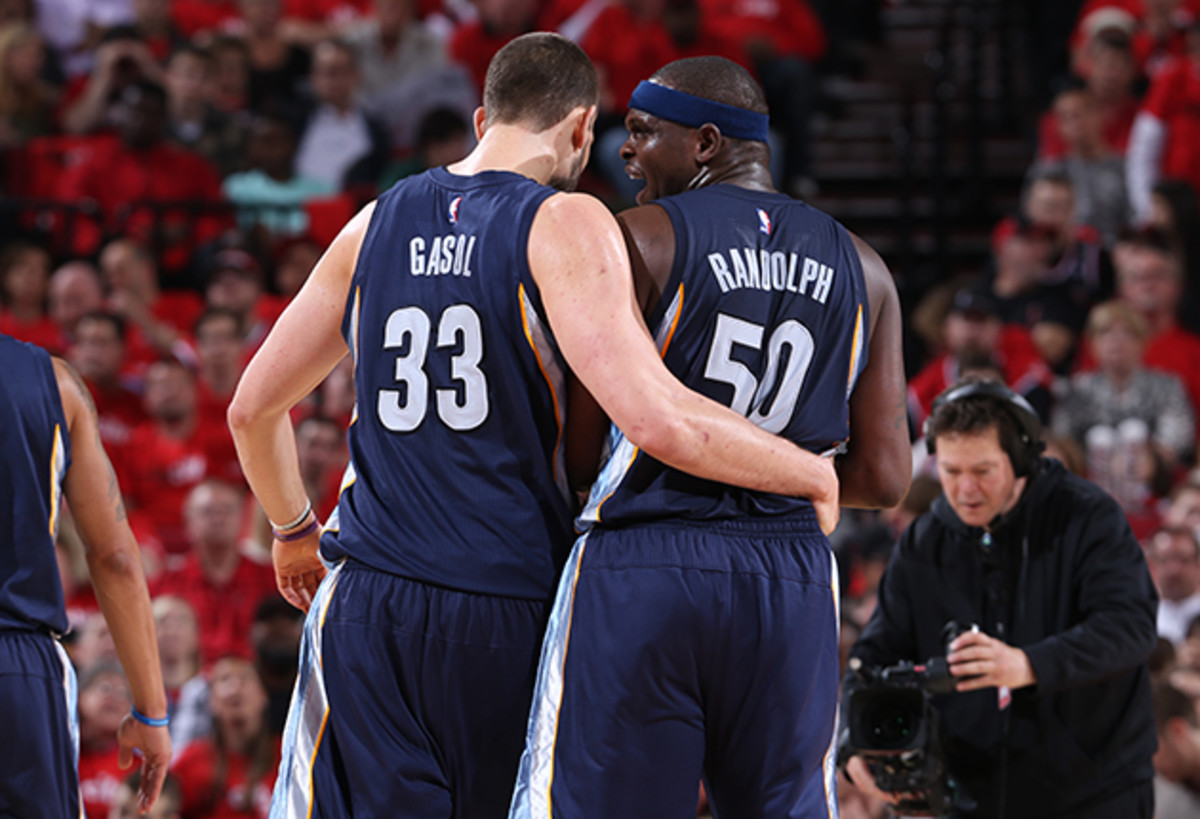
• MORE NBA: Off-season grades: Southwest Division
Memphis Grizzlies
Did the Grizzlies do enough this summer to increase their ceiling?
Memphis will bring back the guts of its 2014–15 roster, and rightfully so. The Grizzlies pushed the Warriors to six games in the second round, and they were the only team that held the eventual champs to fewer than 100 points in the playoffs (97.8 points to be exact). As in playoffs past, Memphis couldn’t keep up when it came time to play the adjustment game, and Golden State swiped the series with three straight double-digit wins by picking at the Grizzlies’ perimeter weaknesses.
With a re-signed Marc Gasol, Zach Randolph, and Mike Conley all playing at a high level, there was never any doubt that the Grizzlies would take another crack at it with this veteran core. That trio, which led a starting lineup that posted a +7.4 net rating last season, is flanked by veterans Tony Allen, Courtney Lee, Jeff Green, and newcomers Brandan Wright and Matt Barnes. Given the franchise’s half-decade track record of success, the team’s clear identity, and this roster’s wealth of experience, Randolph didn’t sound crazy this week when he said the Grizzlies were “thinking ring.”
The addition of Barnes looks like a potential swing move. In a best-case scenario, the hard-nosed Barnes fits in with the grit-and-grind Grizzlies and becomes the knockdown, release-valve shooter the team has needed for years. Indeed, coach Dave Joerger could finally have some plausible small ball options at his disposal if both Barnes and Green can hit shots. In a worst-case scenario, the 35-year-old Barnes find it harder to get clean looks without Chris Paul and Blake Griffin doing all the hard work for him, or he starts fading like aging teammate Vince Carter. If that happens, 2015–16 could be déjà vu all over again for the Grizzlies, who would likely find themselves stuck without the necessary potency to keep up with the Warriors, Thunder, Clippers, Rockets, and Spurs. Put simply, Barnes, Green, and the potential lineup flexibility they represent could be the difference between Memphis being “the team no one wants to play (but beats anyway)” and “the team that sends everyone else packing.”
Minnesota Timberwolves
Will this year actually be fun?
At this time last year, there was a big rush to peg the Andrew Wiggins-led Timberwolves as one of the NBA’s most exciting, must-watch up-and-coming young teams. A laundry list of injuries kept the “exciting” part from ever materializing. With the obvious exception of Wiggins’s Rookie of the Year campaign and Zach LaVine’s Slam Dunk Contest title, Minnesota was downright depressing as it slogged to just 16 wins. More often than not, the Timberwolves failed to look like a professional team, let alone a “fun” one. Not even Wiggins’s vast individual potential could compensate for a badly outdated approach to offense and a downright incompetent defense.
Anthony Bennett signs one-year deal with Raptors after clearing waivers
The 2015–16 season should be better, and not just in an “it couldn’t be any worse” kind of way. Wiggins and 2015 No. 1 overall pick Karl-Anthony Towns are arguably the NBA’s most intriguing young duo since Oklahoma City snagged Kevin Durant and Russell Westbrook in back-to-back drafts, and both have the capacity to thrill with their offensive games. Serbian forward Nemanja Bjelica enjoyed a nice EuroBasket and could provide some pop as a versatile stretch option, too. The ringmaster, as always, will be Ricky Rubio, who missed significant time last season with an ankle injury. If Rubio is back, and a healthy Kevin Martin can help keep defenses from loading up on the youngsters, Minnesota might finally be on to something.
There are still a few good reasons to exercise caution before getting too worked up about the Timberwolves. Unfortunately, Sam Mitchell was thrust into the coach’s chair when Flip Saunders was forced to take a leave of absence earlier this month. That type of transition is never easy, and the situation is even trickier because the roster Mitchell is inheriting is loaded with teenagers and geezers, and little in between. There’s also the very real possibility that injuries could strike again, given the injury histories of guys like Rubio, Martin, and Nikola Pekovic and the age of guys like Kevin Garnett and Tayshaun Prince.
Even though this season will likely produce Minnesota’s 12th straight lottery trip, the meaninglessness that defined last season should remain in the past. Only an unreasonably large dose of bad luck will keep the Wiggins/Towns/Rubio trio from being entertaining in defeat.
New Orleans Pelicans
Can the Pelicans’ offense take off without a healthy Jrue Holiday?
It’s hard not to salivate at the Pelicans’ potential under new coach Alvin Gentry. Take a quality core composed of all-world forward Anthony Davis, Tyreke Evans, and Jrue Holiday, and then hit the fast-forward button like Steve Kerr, Gentry’s old boss, did in Golden State. That’s bound to work, right? Even Evans himself hopped on board with the comparisons to the reigning champs, saying in a recent interview that he doesn’t “see [the Pelicans] any different from the Warriors.”
The stick in the mud, at least for the time being, is Holiday’s health. The 25-year-old point guard will reportedly be on a minutes limit through January, as he continues to deal with a stress-related leg injury, and Evans will be forced into a greater ball-handling role to help pick up the slack. Gentry’s offensive approach relies on applying constant pressure, and a huge part of that pressure is the threat of a dynamic point guard who can shoot the rock, a la Phoenix’s Steve Nash and Golden State’s Stephen Curry.
• MORE NBA: Holiday's minutes limited until January
Holiday obviously isn’t in the conversation with those two floor generals, but he’s a solid all-around offensive threat with dependable three-point range and an All-Star selection to his name. Evans, meanwhile, is fully comfortable taking off in transition -- honestly, sometimes a little too comfortable – and going downhill in pick-and-roll scenarios, but the court often closes around him because he has tunnel-vision tendencies and isn’t a reliable outside shooter. Back-up Norris Cole won’t be much help when it comes to drawing attention and creating spacing for others when he has the ball in his hands, either.
Maybe Davis’s singular talent will be able to totally make up for this roster deficiency, but maybe not. As the NBA saw last year, Davis is often at the mercy of his ball-dominant guards, and Gentry will surely make it a priority to involve his star player in as many new ways as possible. Even if Davis takes his already eye-popping production to new heights, the corresponding jump in the standings that many are forecasting for New Orleans might not take place until Holiday is all the way up to speed. Golden State succeeded because it used an excellent system to maximize a superior talent base, after all, and their coaches would be the first to admit that the talent made the system work, not the other way around.
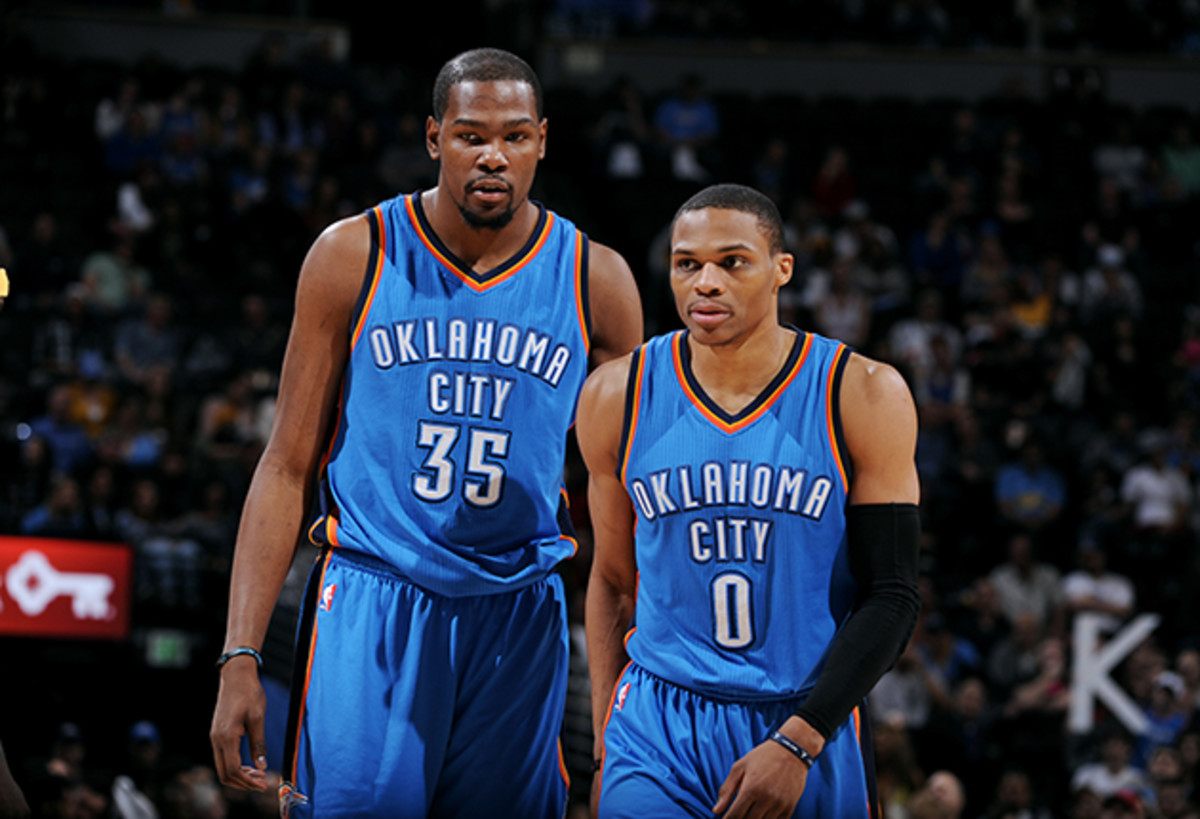
• MORE NBA: Durant cleared for Thunder training camp
Oklahoma City Thunder
Is Kevin Durant back?
This season is loaded with comeback stories, and none is bigger than Kevin Durant’s. Over the last six seasons, the Thunder are 285–130 (.687) when their franchise forward takes the court. That translates to an average of 56 wins over an 82-game slate, which would have tied for the NBA’s third-best record last season. In other words, Durant, who turned 27 this week, has played at a bona fide contender’s clip since he ascended to All-Star status as a 21-year-old in 2009–10.
That’s a long, convincing track record of success that should give the Thunder an automatic berth into the “serious contenders” conversation, even though Durant still has just one Finals appearance to his name, even though he is coming off three foot surgeries in less than a year, even though he is playing for a rookie NBA coach in Billy Donovan, and even though his upcoming free agency will hang over the franchise all year.
The story of the Thunder’s season will be the story of Durant’s season, because team and player are one and the same, at least until July 1. Over the summer, the four-time scoring champ appeared rested and rejuvenated at USA Basketball camp, and he’s returning to a deep roster that now features an improved Russell Westbrook, a low-post scorer in Enes Kanter, an extra shooter in Kyle Singler, and a solid frontcourt rotation that includes Serge Ibaka, Steven Adams, and Nick Collison. There’s a lot to like here, including Oklahoma City’s flexibility to shift between big lineups aimed at controlling the paint and smaller looks aimed at creating space around Durant. It’s a safe bet that the fiery Durant is taking note of all the preseason attention paid to Golden State and San Antonio, too.
Phoenix Suns
Have the Suns evolved into a defense-first team?
This might be the season that a Suns organization long known for prioritizing points over stops turns that reputation on its head. Phoenix has been home to high-scoring outfits for decades, from Paul Westphal to Mike D’Antoni, from Kevin Johnson to Steve Nash to Goran Dragic, and from Charles Barkley to Amar’e Stoudemire. But GM Ryan McDonough has struggled to craft a clear identity in his tenure, cycling through players at a rapid pace and losing core pieces, including Dragic, along the way.
Markieff Morris on Suns training camp: ‘I want to be here’
A mediocre 2014–15 season produced a more balanced showing than usual—Phoenix ranked 14th on offense and 17th on defense—and coach Jeff Hornacek is now preaching a defense-first mentality as he enters camp. That approach makes sense. Eric Bledsoe, the team’s best player, is one of the top on-ball defenders in the league. The team’s biggest off-season addition, center Tyson Chandler, is a former Defensive Player of the Year who amounts to a massive upgrade over Phoenix’s interior defenders last season. Markieff Morris and P.J. Tucker both bring physicality and versatility to the forward positions. With the exception of point guard Brandon Knight, Phoenix’s projected starters all finished last season as plus defenders, according to Defensive Real Plus-Minus.
Hornacek, who is entering the final guaranteed season of his contract, will have his hands full making this work, in large part because his roster from spots six-to-15 just isn’t anything to get excited about. If Chandler, 32, misses time, as he did in both 2012–13 and 2013–14 in New York, Hornacek will be forced to turn to the as-yet-unproven Alex Len inside. If Knight can’t show major progress, Hornacek will essentially have to live with the results because his other options are wild youngster Archie Goodwin and the aging Ronnie Price. There’s also the (crucial) matter of molding a cohesive, selfless team from a bunch of new and unfamiliar faces (again). Continuity is a critical element for truly elite defenses, and that’s a luxury that Hornacek doesn’t have at his disposal.
As many executives and coaches have learned over the years, wanting to be a defense-first team isn’t the same as actually doing it. Will Phoenix get added to that list?
Portland Trail Blazers
Is dumpster-diving a viable roster-building strategy?
Neil Olshey has consistently sought bargains since taking over as Portland’s GM in 2012. That approach made sense when he was looking to build around a core group that included LaMarcus Aldridge, Damian Lillard, Wesley Matthews, and Nicolas Batum. He plucked Robin Lopez in a three-way trade. He took fliers on Thomas Robinson, an apparent draft bust, and Eric Maynor, who was recovering from a major knee injury. He brought over budget friendly foreign players like Victor Claver and Joel Freeland to see what they could do.
Those moves led to varying degrees of success—many, frankly, didn’t pan out—but they kept Olshey in a position of relative flexibility as he looked to build around that core. Unfortunately for the Blazers, that core is now gone and there was no short-term back-up plan in sight. Rather than spend for the sake of spending this summer, Olshey opted to continue his low-risk, no-commitment approach by accumulating as many unfinished products, up-and-comers, and outright projects as possible. Instead of plunking down the American Express on 5th Avenue, Olshey bought out a cul-de-sac’s worth of garage sales in hopes of finding some treasure in the wreckage.
• MORE NBA: Off-season grades: Northwest Division
He upgraded Al-Farouq Aminu and Ed Davis from minimum contracts to real deals. He saved Mason Plumlee from the wrath of Lionel Hollins. He traded the NBA equivalent of a Canadian penny to the Magic for Moe Harkless. He made sure to get back a former lottery pick in Noah Vonleh for Batum. He looked past the red flags to give former prep standout Cliff Alexander a shot. Throw in former lottery picks Meyers Leonard and C.J. McCollum, who showed progress last season, and the Blazers just might lead the league in, “This guy could really turn into somebody some day!”
The problem for Olshey and coach Terry Stotts: it’s unclear how many of these guys, aside from Lillard, can be positive contributors in the near future. Can a roster of long and long-ish shots produce anything better than a tantalizing, but ultimately frustrating, final product? And, importantly, how many of these guys need to turn into real players to justify the pain that could conceivably stretch over into multiple seasons?
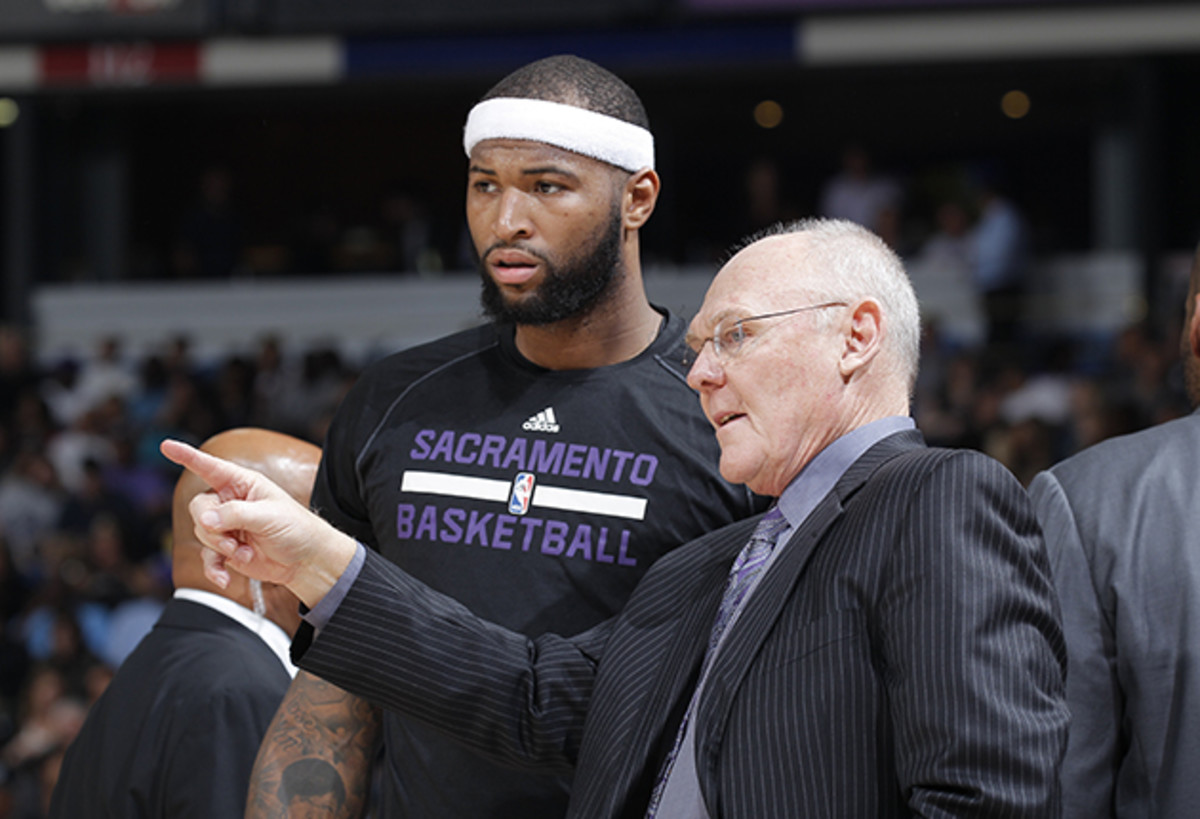
• MORE NBA: The NBA journey of Seth Curry
Sacramento Kings
How, exactly, does Rajon Rondo fit?
It’s been popular to compare the Kings to a reality show this summer, and this group certainly looks destined to produce an unscriptable, and possibly wacky, season. Coach George Karl, franchise center DeMarcus Cousins, and free-agent signing Rajon Rondo all stand as major wild cards entering training camp. When and where those three key figures are able to reach compromises on basketball matters and personality differences will determine how functional the 2015–16 Kings can be. Even Miss Cleo would pass at the opportunity to take a stab at how that process will play out.
One rival talent evaluator insisted to SI.com earlier this month that Rondo, whom Cousins called a “flat out genius when it comes to basketball” this week, should be used as a low-minute starter who doesn’t close games. The idea would be to keep Rondo invested in the team by starting him before turning over the show when it matters to Darren Collison, who is a better shooter and a better fit in Karl’s preferred style. By taking this approach, Karl could close games with a four-out lineup built around Cousins in the middle, Rudy Gay at the four, and three shooters (probably Ben McLemore, Marco Belinelli, and Collison). The upsides are numerous: Cousins has maximum space to operate, Gay has mismatches to exploit, and Sacramento’s complementary players should enjoy fairly clean looks with Collison keeping the ball moving. Karl is happy, Cousins should be happy, ownership is happy that Rondo’s $9.5 million contract isn’t going to waste on the bench, and Rondo is (hopefully) at least somewhat happy.
Barring a remarkable and unlikely bounceback season from Rondo, who bailed on the Mavericks during the playoffs, it’s hard to imagine a better, realistic compromise. Karl is unlikely to give the keys to Rondo, who kills spacing and prefers a deliberate style. Rondo is unlikely to transform his game to play Karl’s style well. Cousins and Rondo might very well be able to find a connection on and off the court, but Rondo’s track record in leading high-powered offenses is nonexistent, and that will eventually show through given this roster’s talent level.
Even in a hypothetical best-case scenario, Sacramento’s situation already feels far too delicate, and we’re barely past media day. Throw in an impatient owner (Vivek Ranadive) and an unpredictable rookie GM (Vlade Divac), and the potential for roster fireworks remains sky high.
San Antonio Spurs
Can Tony Parker turn it around or will San Antonio be forced to work around him?
“How does LaMarcus Aldridge fit?” seems like a fairly easy question for Spurs coach Gregg Popovich to answer, all things considered. Aldridge is one of the best players at his position, he’s played for winning teams, he’s been the centerpiece of efficient offenses, he’s coexisted with multiple stars, he’s expressed a desire to go deep in the playoffs, and he’s idolized Tim Duncan for his entire career. Honestly, he represents more answers than questions, even as he changes zip codes for the first time in his career.
A tougher question for Popovich is what to do with Tony Parker, whose game has slipped significantly since the 2012–13 season. Parker generally disappointed last season, he suffered through a poor showing in San Antonio’s first-round series loss to the Clippers, and he endured a rough EuroBasket for France. His shooting has been pretty erratic, he’s struggled to get to the rim, and he’s never been known as a lockdown defender. These are real concerns for a Spurs team hoping to get through a West field that includes Stephen Curry, Russell Westbrook, Chris Paul, Ty Lawson, and Mike Conley.
Becky Hammon leading revolution for women in men's professional sports
Popovich has some options if he wants to de-emphasize Parker’s role, even though backup point guard Cory Joseph headed to the Raptors this summer. He can continue to turn over greater offensive responsibility to Kawhi Leonard, who bloomed down the stretch of the 2014–15 season. He can open the floodgates for the speedy Patty Mills, who played well during San Antonio’s run to the 2014 title before taking a step back last season due to a shoulder injury. He can try using Kyle Anderson as a point forward, hoping that the second-year player can build on his Las Vegas Summer League MVP success. He can try running more offense through Duncan, Aldridge, and Boris Diaw, three big men who are all capable passers. He can take one last ride on the Manu Ginobili Psychedelic Experience.
None of those options are as desirable as Parker simply returning to form, which must be considered as a possibility given his long injury history. One way or another, Popovich should be in position to further ease the regular-season load on Duncan, Parker, and Ginobili thanks to a strong off-season that has left him with a deep bench. That should help. Still, it’s hard to envision Duncan claiming his sixth title without better point guard play than what we’ve seen from Parker over the last 12 months.
Utah Jazz
Will Dennis Lindsey secure an upgrade at the point guard position?
Perhaps the most exciting quote to come out of this year’s media day extravaganza was delivered by Jazz GM Dennis Lindsey, who was asked about his ability to add to his roster. Lindsey said, via KSL.com: “If we're not getting those results, we've got close to $7 million in cap [space] that we are authorized to use, but we want to use that well. We have a significant pick and asset base built up that we can address a deficiency as it comes up on the roster, whether that’s at point guard or any of the other positions moving forward.”
After a summer in which Lindsey mostly sat on his hands, this public approach should be music to the ears of Jazz fans. In essence, Lindsey is sending two messages to Trey Burke: 1) we’re giving you another shot to prove you’re our floor general, but 2) we’re not necessarily going down with you if you sink the boat again.
Perfect. The momentum has building for long enough in Utah, where Gordon Hayward, Rudy Gobert, and Derrick Favors combine to form what is probably the NBA’s most underrated core trio. Burke has the potential to drag this group down like an anchor if he doesn’t show substantial progress in year three, and the loss of Dante Exum took away coach Quin Snyder’s most obvious in-house alternative. A bunch of point guards moved around in midseason deals last year—Reggie Jackson, Brandon Knight, Michael Carter-Williams, Goran Dragic, Rajon Rondo, Isaiah Thomas, and Jameer Nelson, among others—and there’s no good reason Lindsey should remain on the sidelines if the trade market action picks up again. The time is now for the Jazz to turn the corner and make a serious run at the playoffs.
Best NBA Players by Jersey Number
00 — Robert Parish
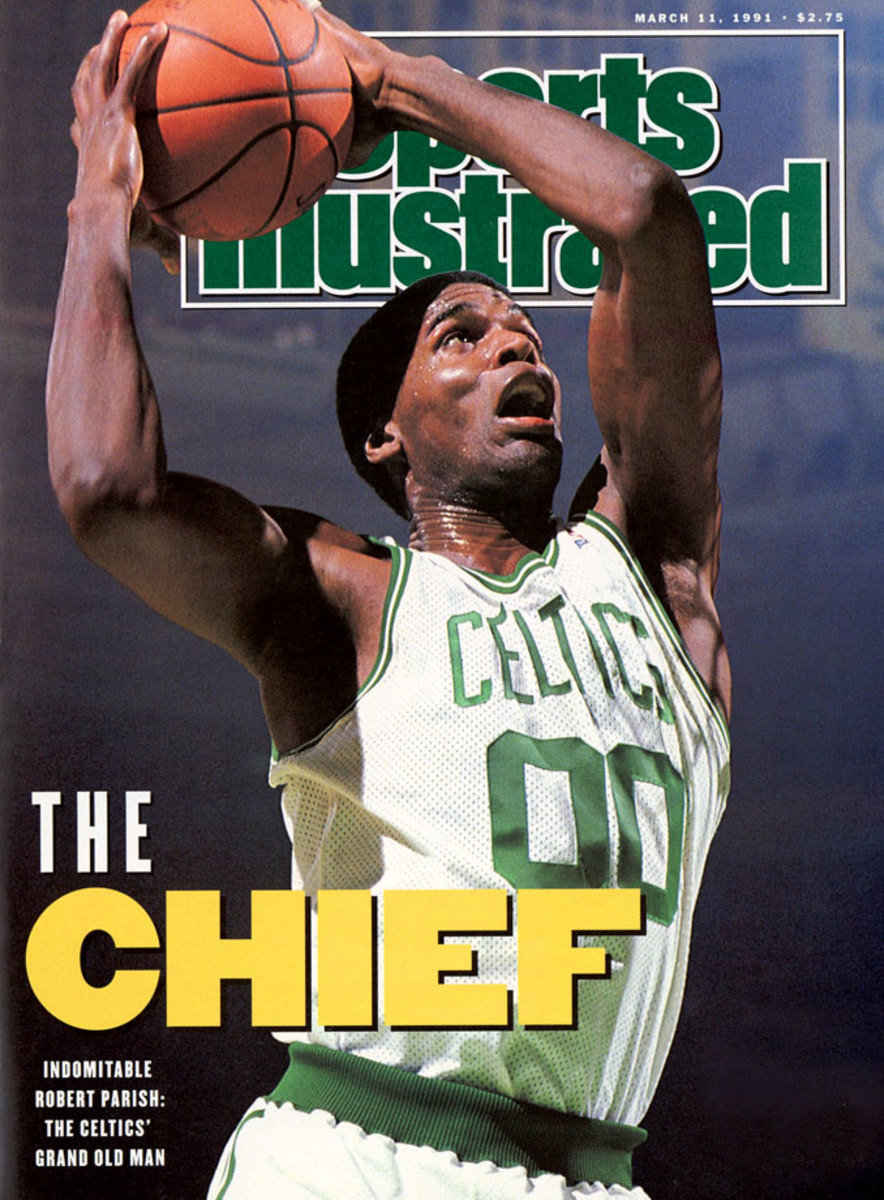
Best known as the defensive anchor of the Larry Bird-led Celtics teams of the 80s, Parish was also outstanding on the offensive side of the ball, a smooth jump shooter who hit at a nearly 54% clip from the floor in his 21-year career and averaged 14.5 points. A four-time NBA champion and nine-time All-Star, Parish’s athletic ability and utility on both ends as a 7-foot center foreshadowed the direction in which his position would head decades later.
0 — Russell Westbrook
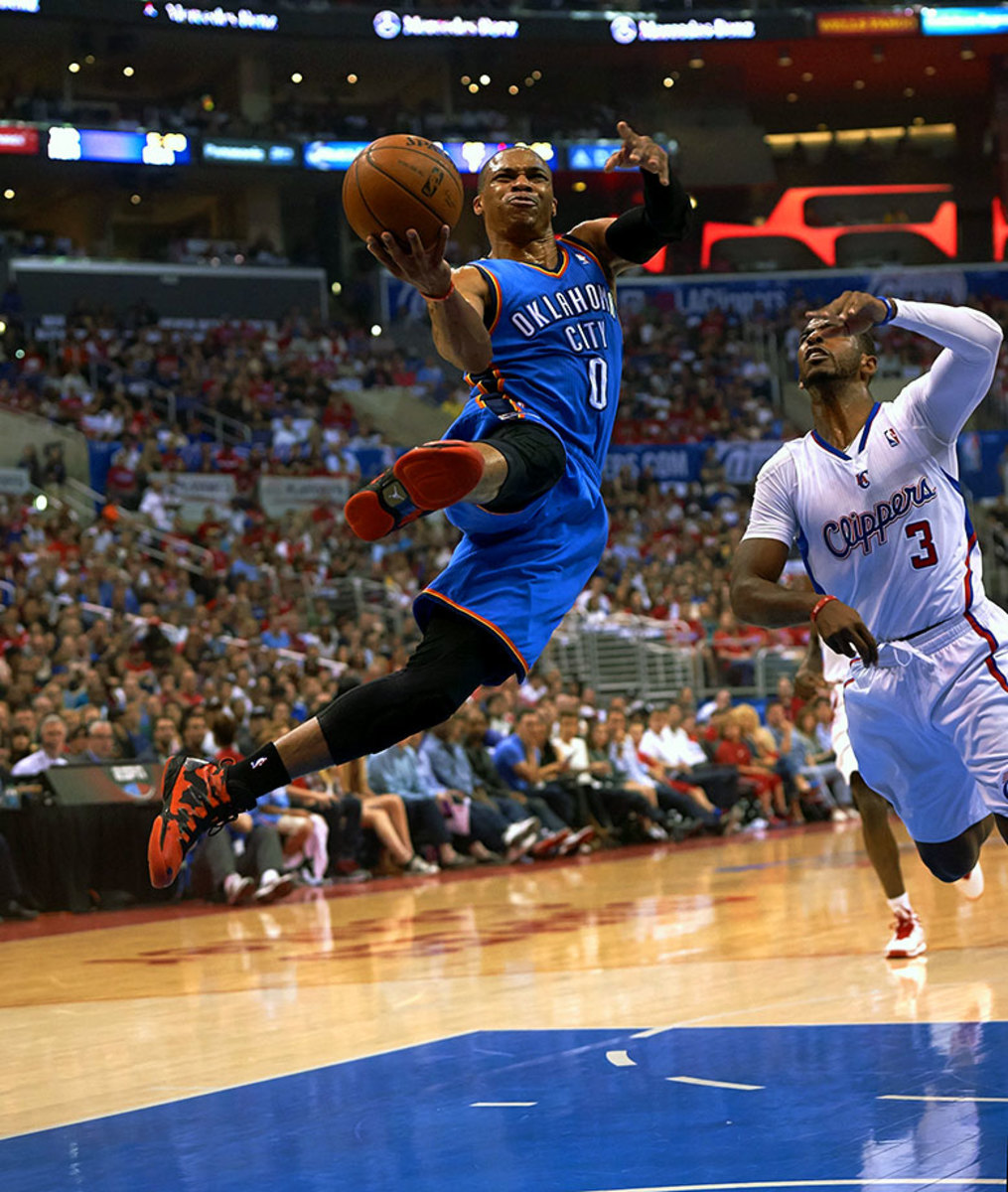
The best may still be to come for Westbrook, Oklahoma City’s dynamic point guard who continues to reshape his position and push the limits after a career season in 2014-15. At 26, Westbrook averaged 28.1 points, 8.6 assists and 7.3 rebounds, single-handedly carrying the Thunder when they needed it most. With Kevin Durant returning to the fold, Westbrook’s numbers may dip, but his efficiency could improve accordingly. His all-around game gives him the nod over Arenas. — Runner-up: Gilbert Arenas
1 — Oscar Robertson
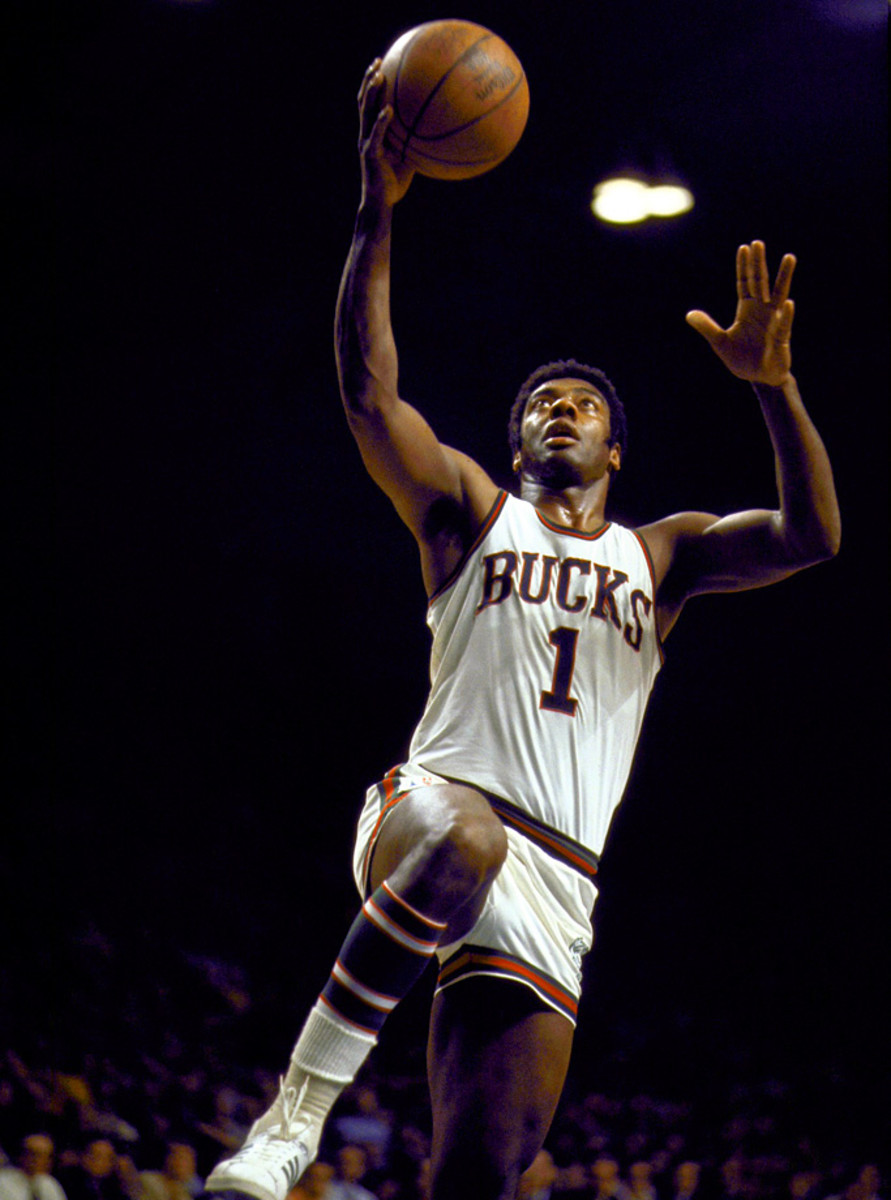
Everyone knows the Big O is the only player in NBA history to average a triple-double for an entire season. What’s lost is the specific stats from Robertson’s most incredible year, in which he posted nightly figures of 30.8 points, 12.5 rebounds and 11.4 assists at age 23, just his second season in the league. — Runner-up: Tracy McGrady
2 — Moses Malone
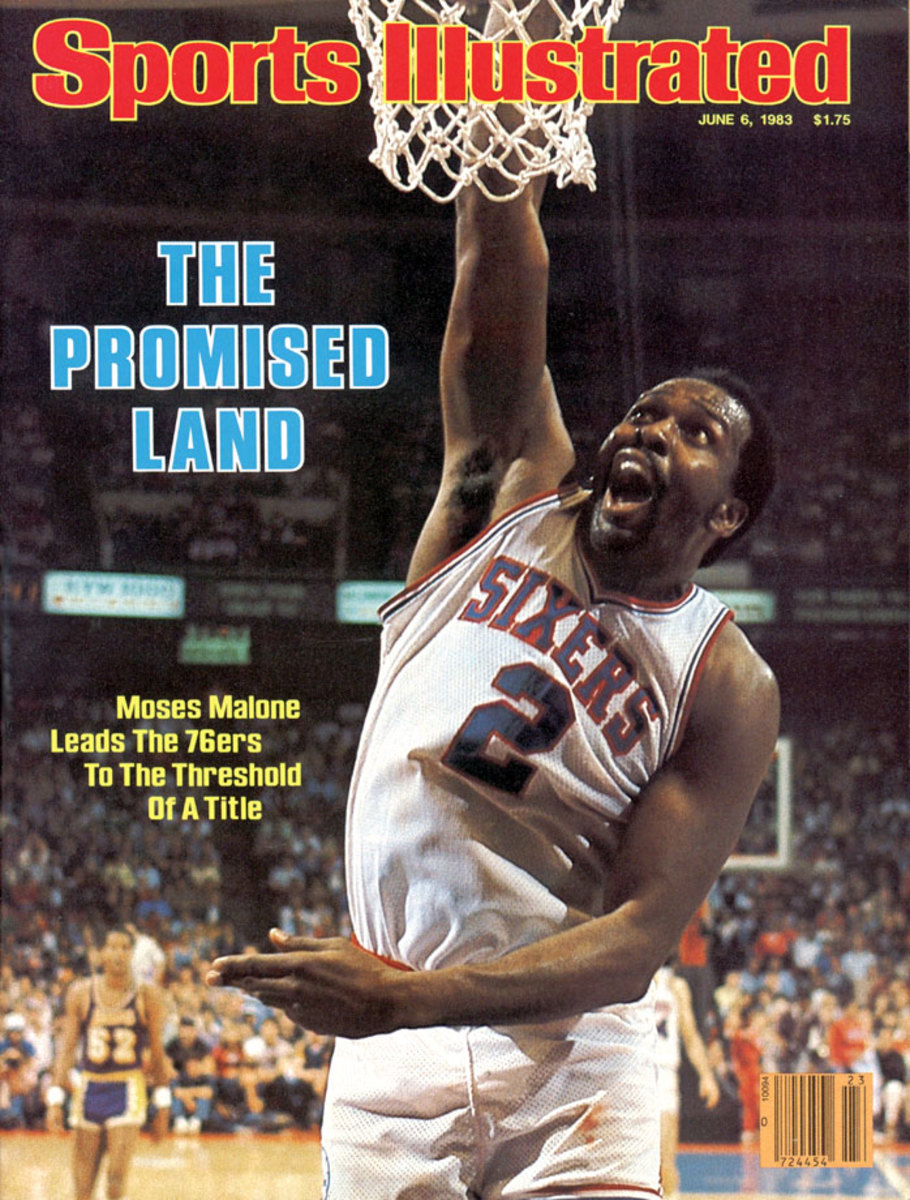
Malone was a statistical behemoth, averaging a double-double as a rookie and never looking back while making several stops around the NBA. A three-time MVP, Malone peaked as a Rocket with a 31.1 point, 14.7 rebound campaign in 1982, the year before signing with the Sixers and subsequently leading them to the ‘83 title as Finals MVP.
3 — Dwyane Wade
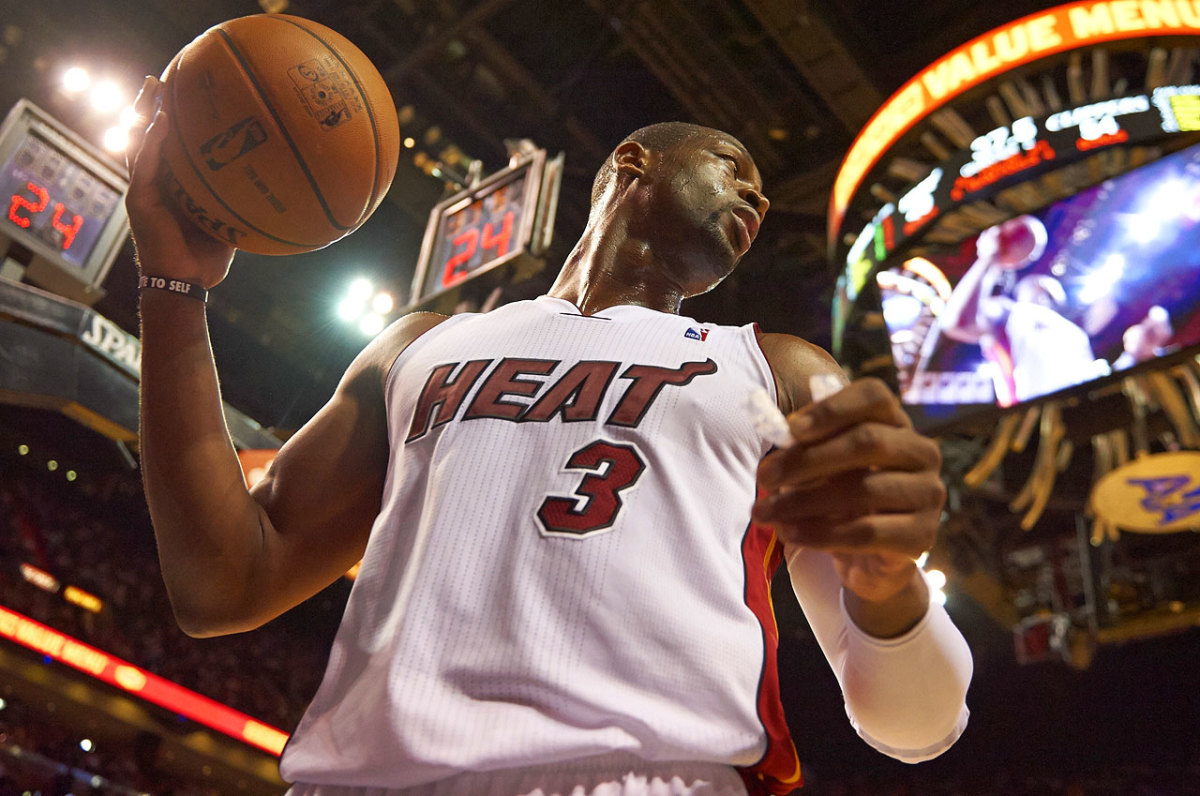
Before Wade annually sat out half of each season to rest and nurse injuries, “Flash” was one of the most electric players in the league. It takes a special player to lead an NBA franchise to its first championship in just his third season. Wade also played at an MVP level over the course of his 2008-09 campaign. — Runner-up: Allen Iverson
4 — Adrian Dantley
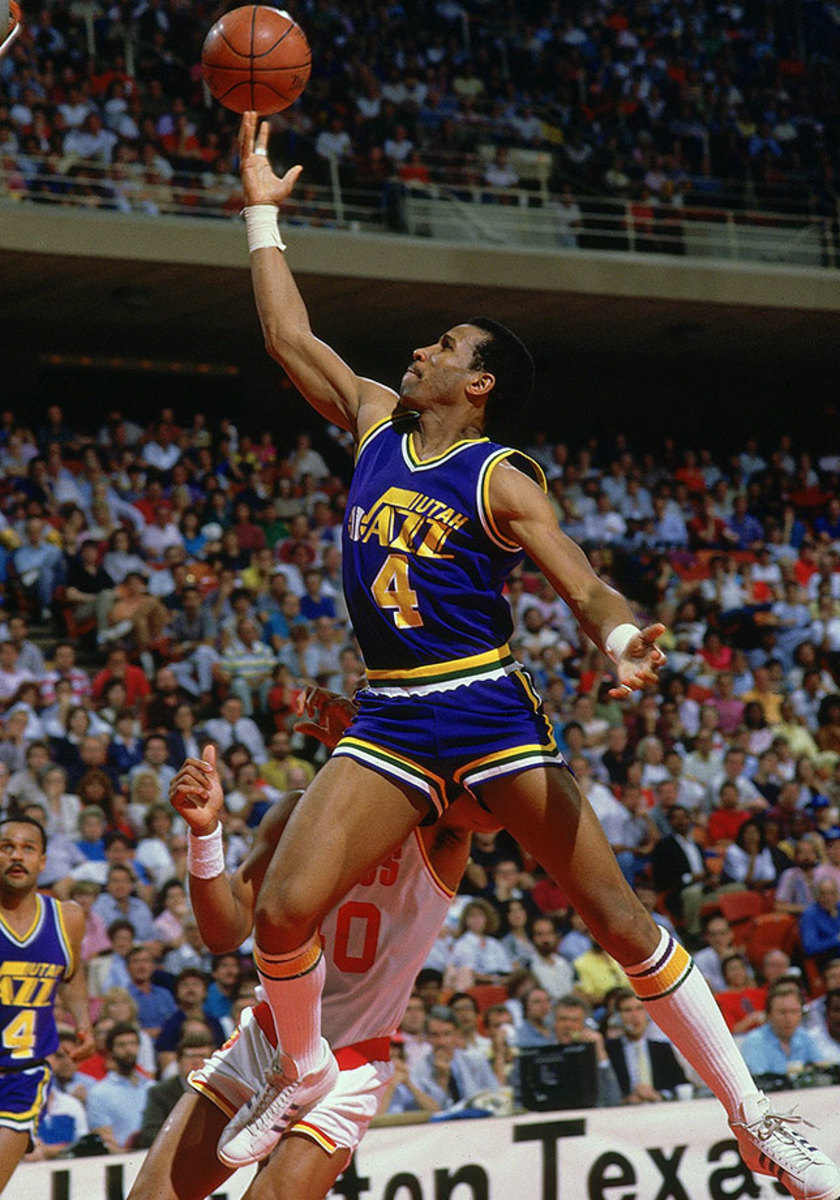
Dantley was one of the league’s most explosive scorers for a long time, making six All-Star games and stringing together four straight 30-plus point-per-game seasons in the early ‘80s, twice leading the league in scoring. Though he almost never shot three-pointers, Dantley finished his career with an average of 24.3 points per game on 54% shooting, working creatively to get buckets from the midrange and around the rim. — Runners-up: Joe Dumars, Dolph Schayes
5 — Kevin Garnett
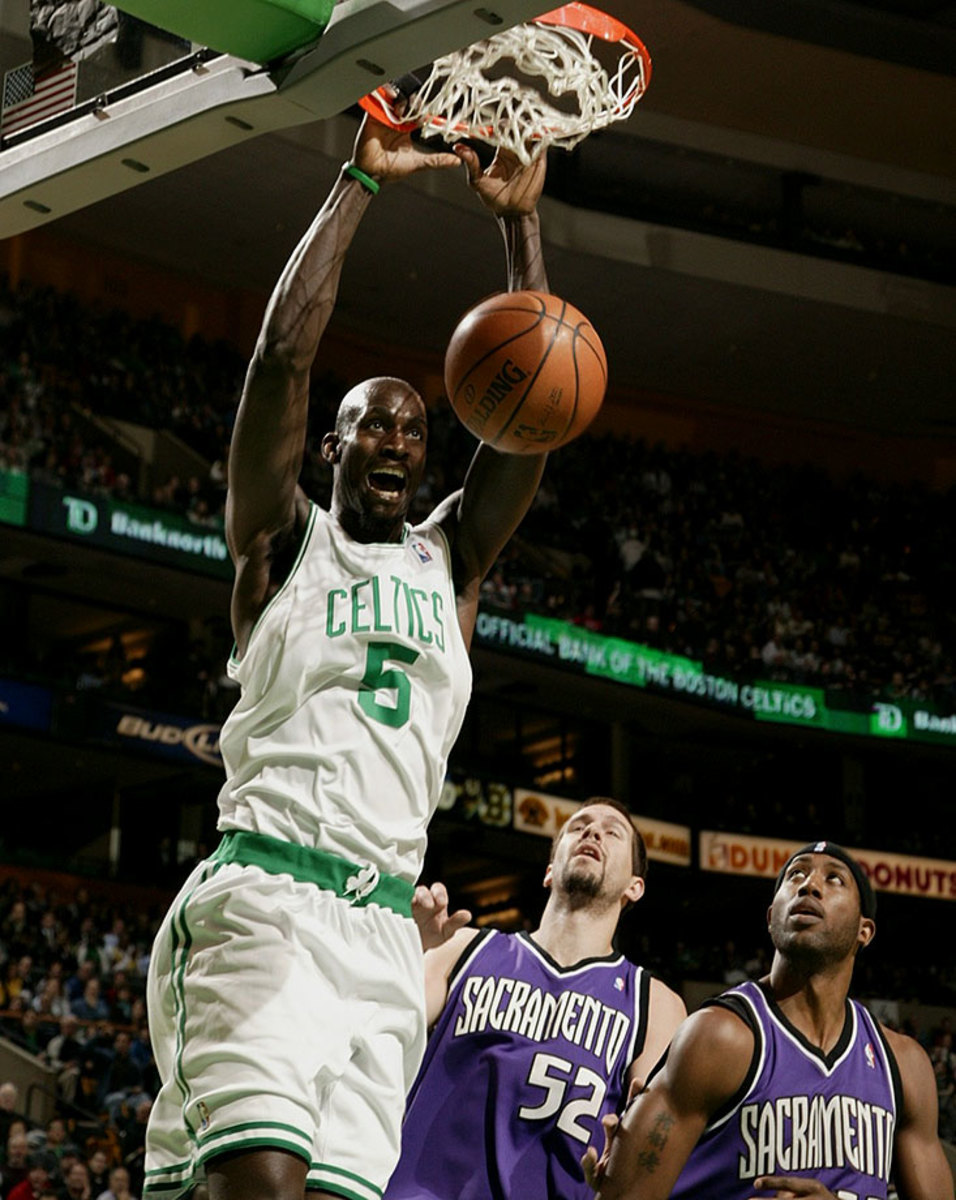
Anything was possible for defenses anchored by Garnett in his prime. One of the greatest prep-to-pro cases of all time and a perennial All-Star and All-NBA selection, Garnett transcended the game with his intensity and antics. Whether getting on all fours to bark like a dog or banging his head against the stanchion, KG always made his presence felt. — Runner-up: Jason Kidd
6 — Bill Russell
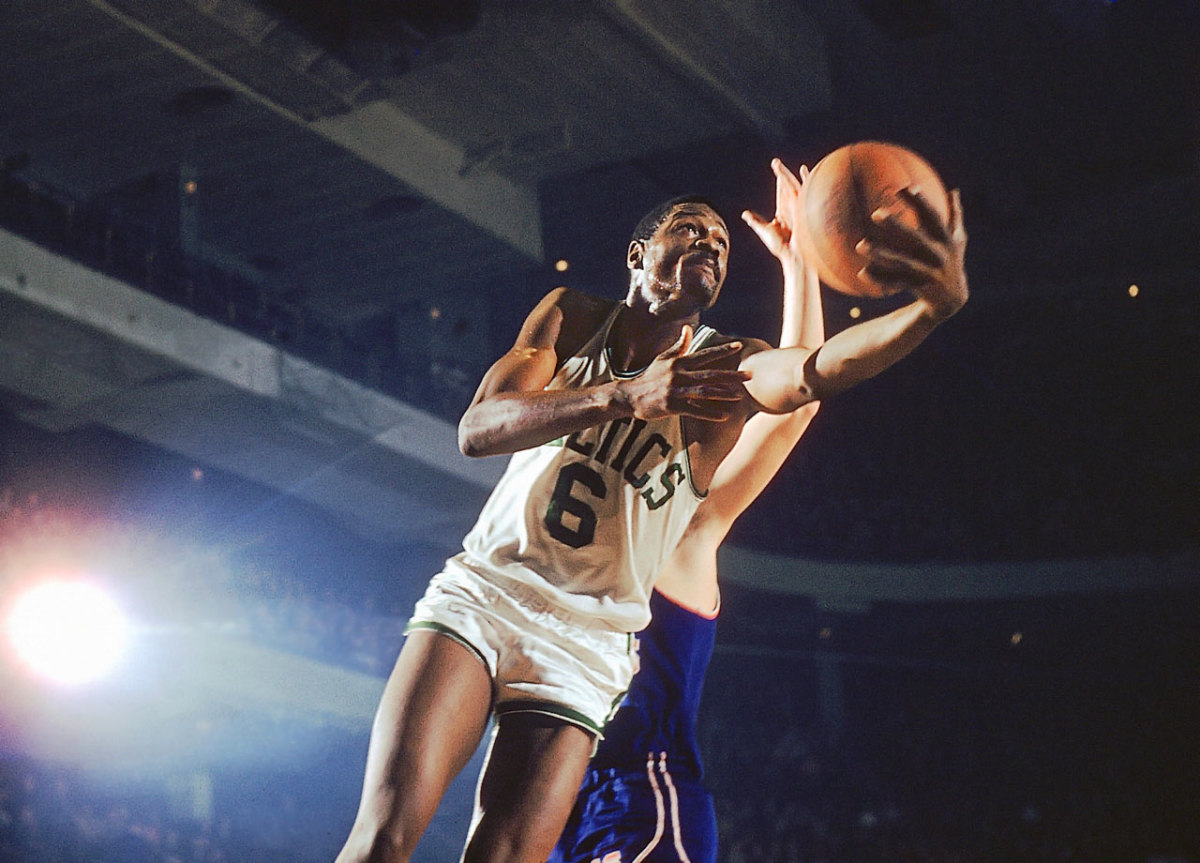
Though another No. 6 continues to make his case in Cleveland, Bill Russell’s 11 championship rings in 13 seasons are impossible for all but the most irrational to argue against. No athlete in the history of major team sports has ever sustained individual dominance and team success quite like Russell, who retired at age 34 before transitioning into coaching and leading Boston to two more titles––like clockwork. — Runner-up: LeBron James
7 — Pete Maravich
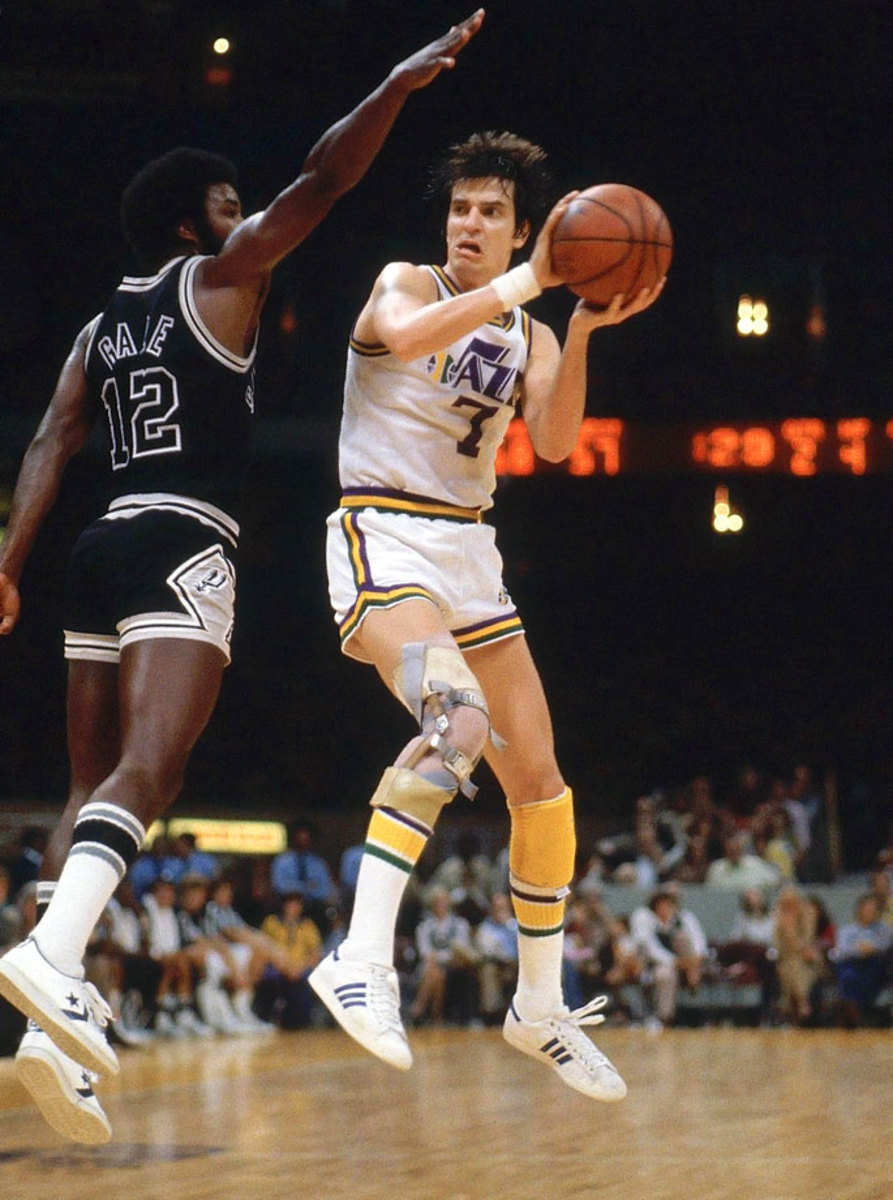
One of the NBA’s greatest scorers and the all-time leading scorer in NCAA history, “Pistol Pete” put up points in style. Ever the showman, Maravich brought a streetball-style game to the NBA. His flashiness helped build basketball’s popularity in the city of New Orleans before the Jazz moved to Utah. — Runners-up: Kevin Johnson, Carmelo Anthony
8 — Kobe Bryant
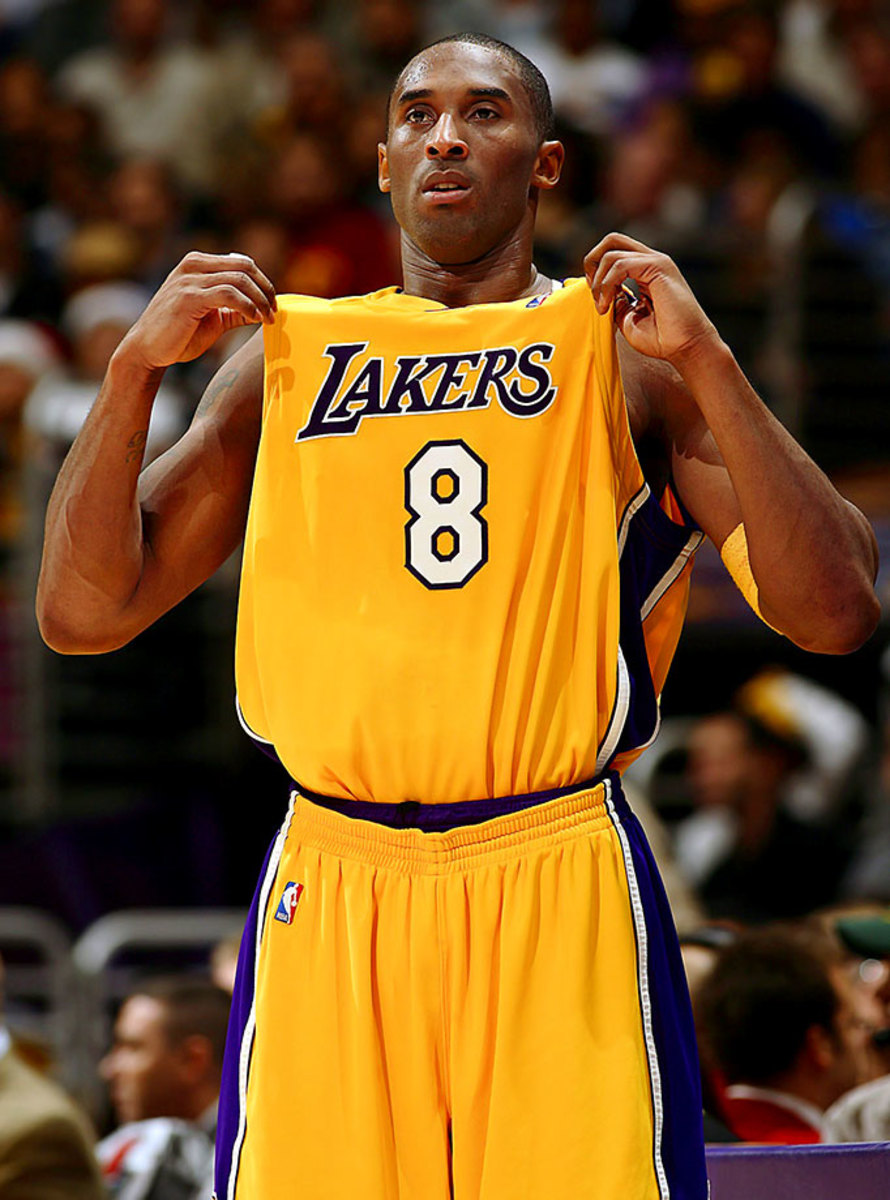
Younger basketball fans may not remember Kobe Bean donning No. 8 early in his career, but the results were prolific, peaking in 2005-06 when he averaged 35.4 points per game. Before there was No. 24 Kobe, the older and wiser Mamba we now know, there was the dynamic slasher who won three titles alongside Shaquille O’Neal, demanded the ball just as much, and demolished defenses in the process.
9 — Bob Pettit
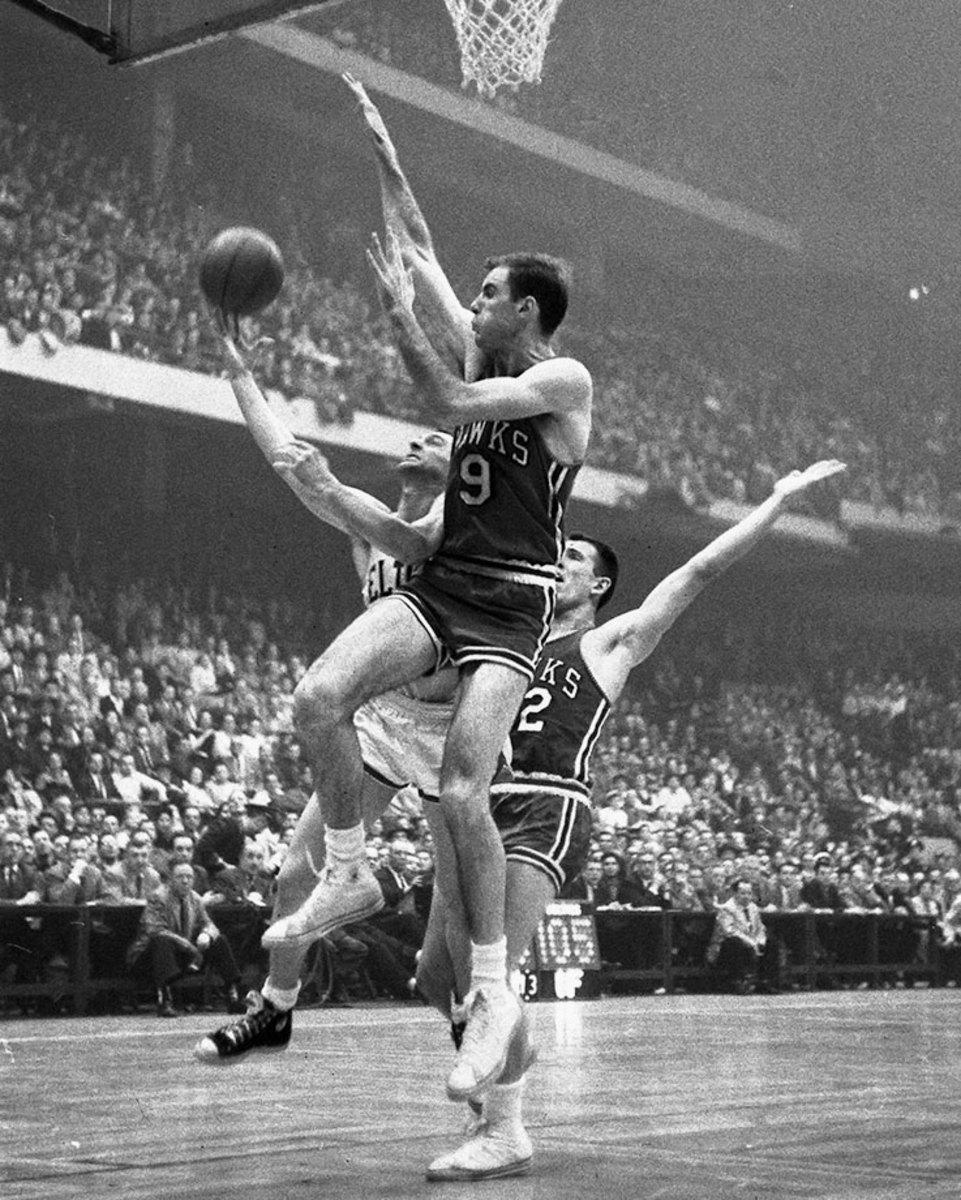
The St. Louis Hawks were the only team to defeat the Bill Russell’s Boston Celtics in an NBA Finals series, with Pettit leading St. Louis to the 1958 title. Pettit took home regular season MVP honors in 1955 and 1959 and led the Hawks to four Finals appearances. He was an All-Star in each of his 11 seasons. — Runner-up: Tony Parker
10 — Walt Frazier
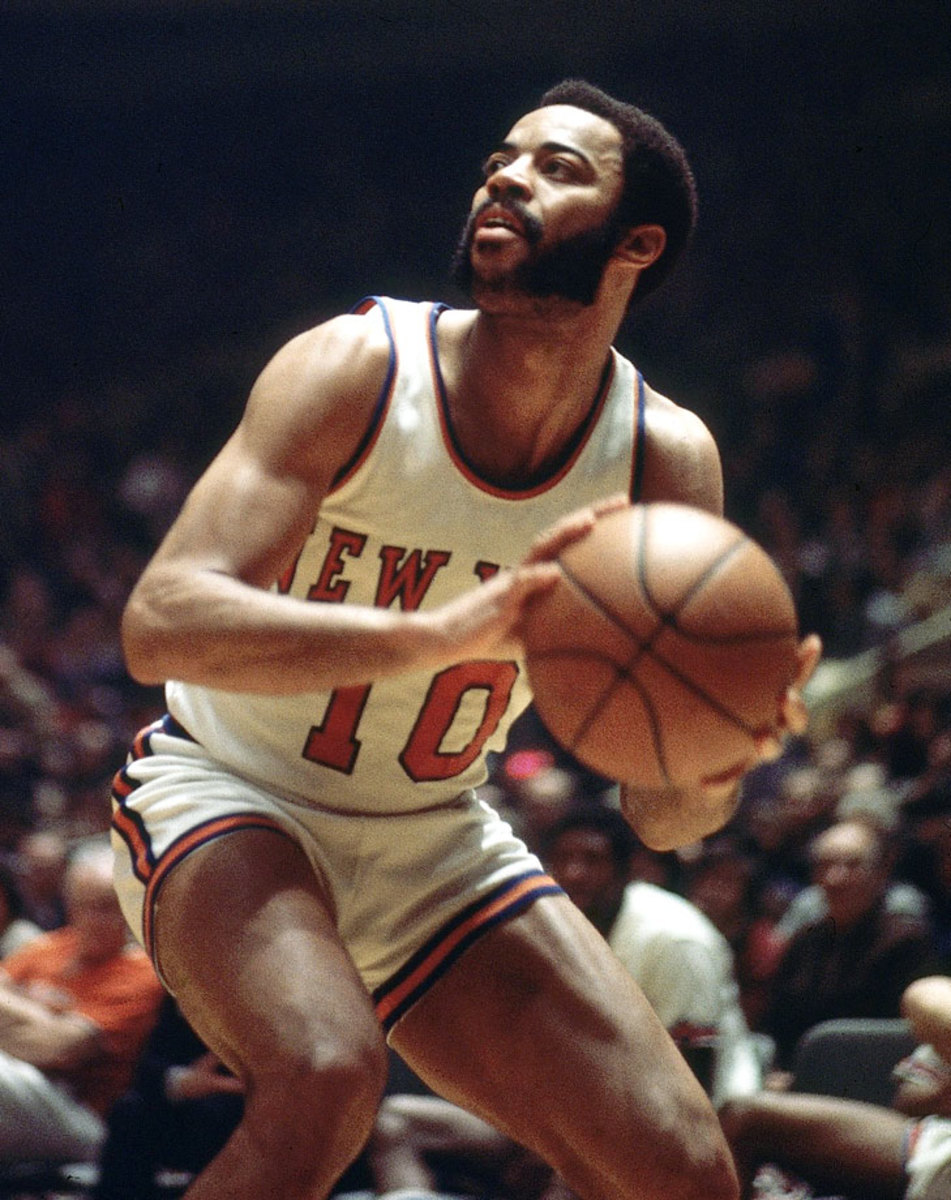
Teaming with Earl “The Pearl” Monroe, “Clyde” helped bring the dazzle and New York style to the Knicks, one of the first truly effective dual-point guard combinations and one of the greatest backcourts ever. A two-time NBA champion, Frazier now sits as one of the greatest Knicks of all-time and one of the league’s most stylish men, even in retirement. — Runner-up: Tim Hardaway
11 — Isiah Thomas
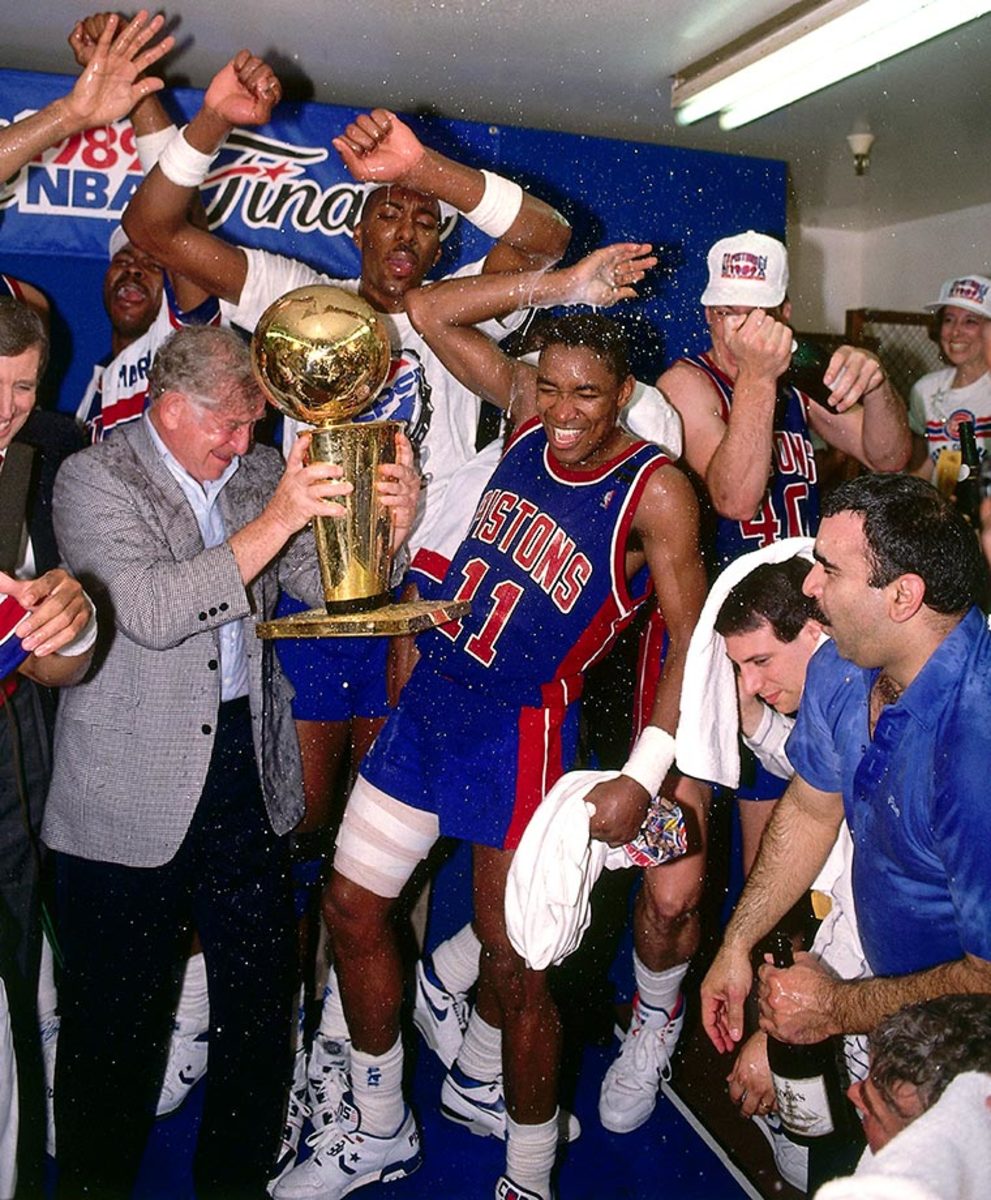
Before Thomas’ front office failures, the feisty Chicago product led the “Bad Boy” Pistons to back-to-back championships in 1989 and 1990. The 12-time All-Star appeared in every mid-season classic during his career save for his final season in 1993-94. He also piloted Detroit to the playoffs in all but two of his seasons. — Runner-up: Elvin Hayes
12 — John Stockton
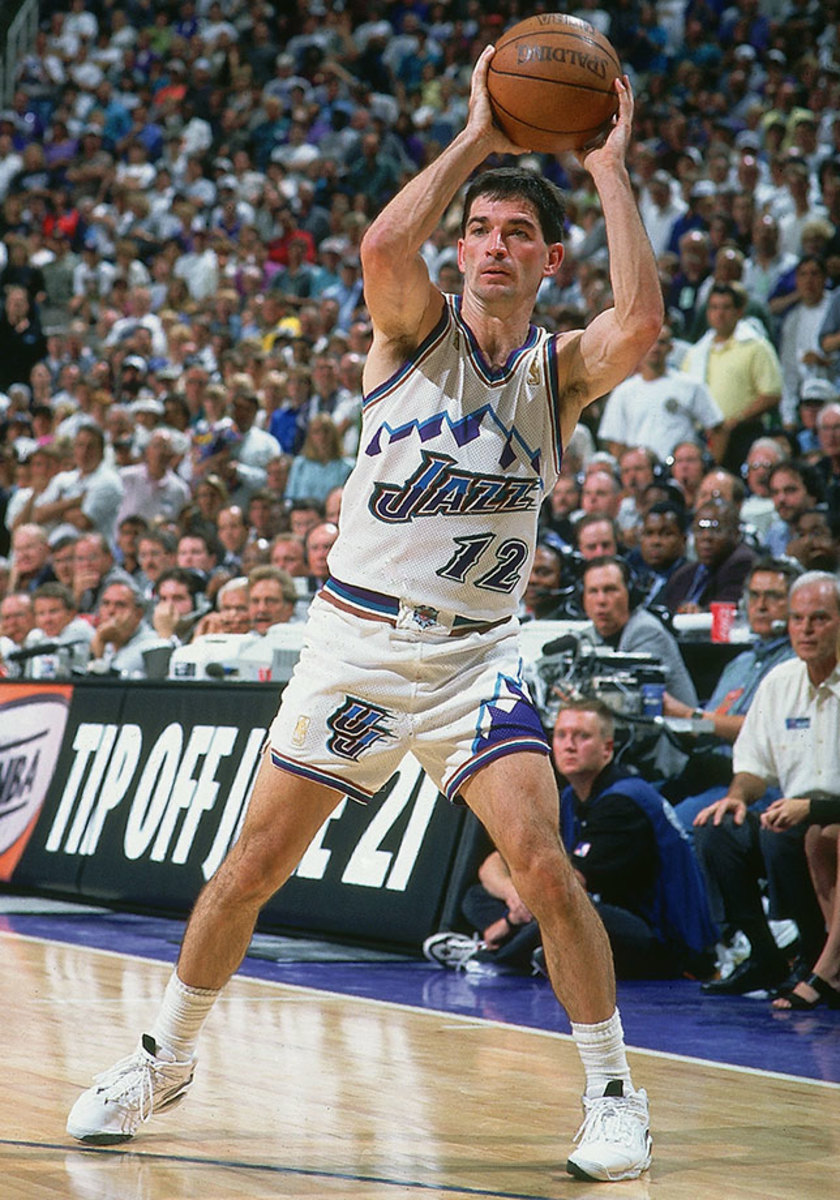
A 10-time All-Star and half of perhaps the most prolific guard-post tandem ever, John Stockton remains the NBA’s all-time leader in assists and steals. He dominated games at a slender 6’1”, with incredible know-how, a hard-nosed approach on both ends and unbelievable consistency all the way until his retirement at age 40. For the definition of a pure point guard, look no further.
13 — Wilt Chamberlain
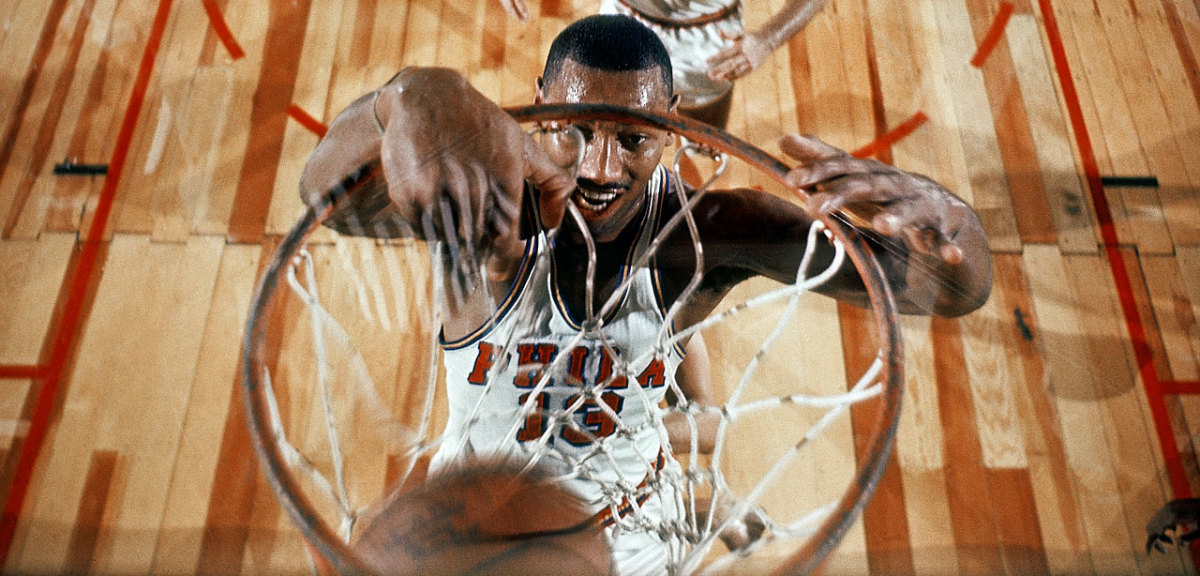
The Big Dipper, of course, is the only player in NBA history to score 100 points in a single game. Few players have forced the league to change the rules in order to make games fairer for opponents. The NBA had to widen the lane, institute offensive goaltending and amend the inbounding and free throw regulations because of Chamberlain. Beast mode. — Runner-up: Steve Nash
14 — Bob Cousy
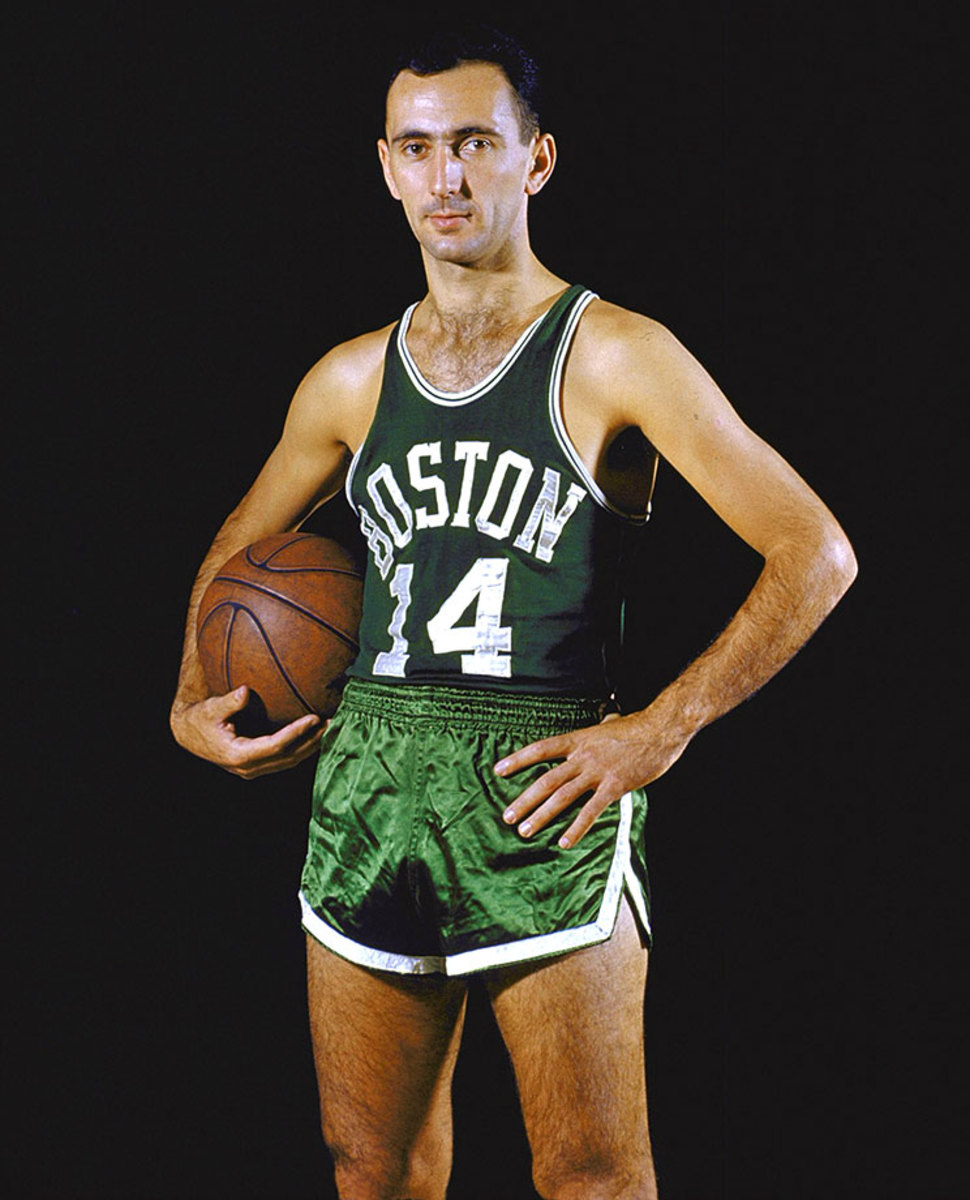
An All-Star in every single one of his seasons (save for a seven-game return to boost ticket sales for the Royals, the team he coached, in 1970), Cousy was a six-time NBA champion and the 1957 MVP. He was the man in Boston until the arrival of Bill Russell, with whom he teamed to build the NBA’s first dynasty.
15 — Vince Carter
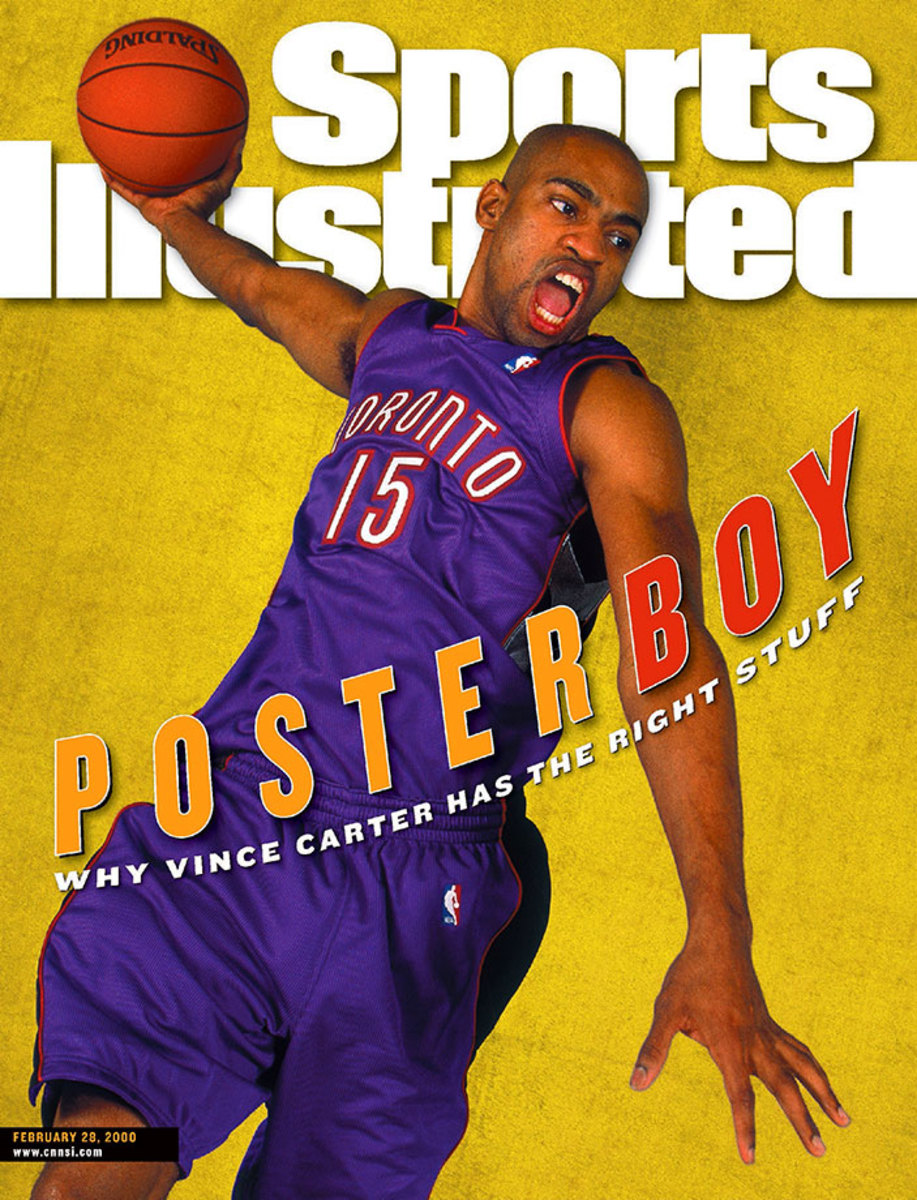
The reputation of “Vinsanity” for acrobatic dunks doesn’t do his overall game enough justice. Carter currently ranks 30th all-time in career scoring and will likely pass Charles Barkley in 2015-16. His incredible play was key for an upstart Toronto Raptors franchise in the early 2000s. — Runner-up: Hal Greer
16 — Bob Lanier
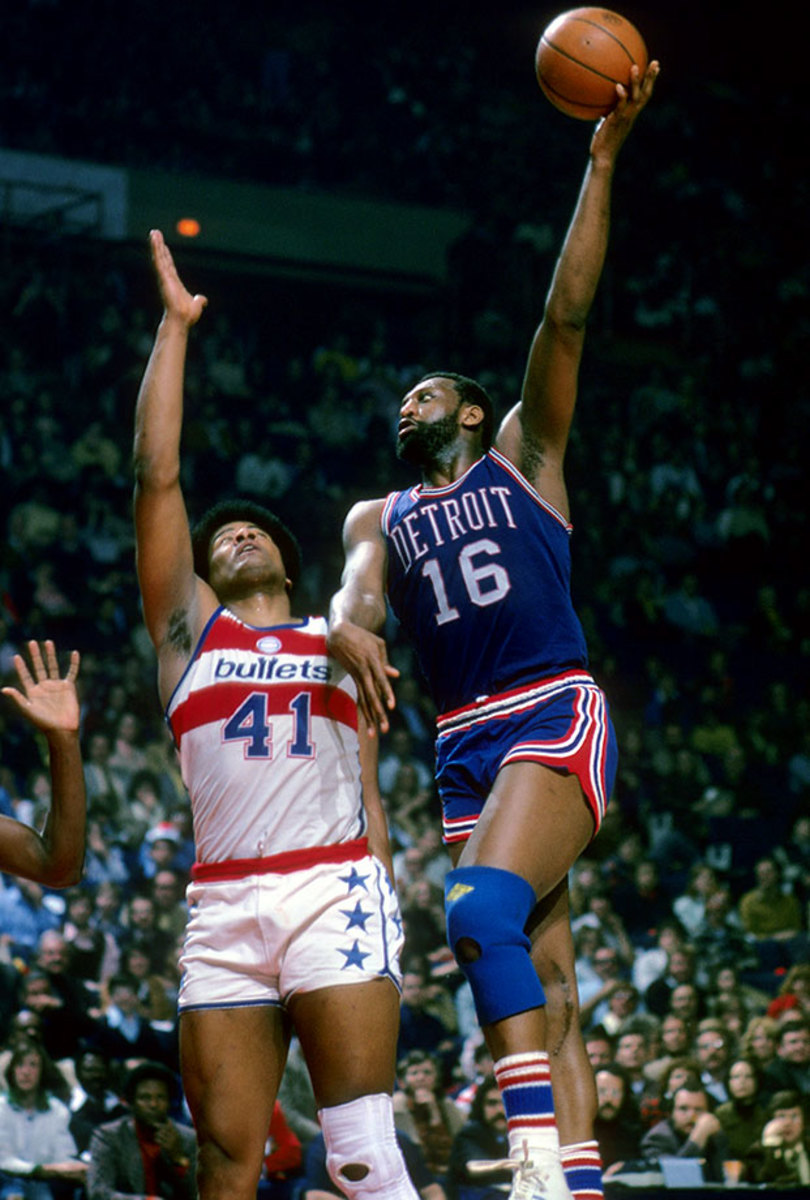
A force in the middle for the Pistons and Bucks, Lanier retired in 1984 with career averages of 20.1 points and 10.1 rebounds. A well-rounded post man who was a strong free-throw shooter (76.7%) and in his prime, a shot-blocker, Lanier lived up to his selection as the No. 1 pick in the 1970 draft, playing for 15 strong years and finishing with five consecutive division titles as a Buck. —Runners-up: Pau Gasol, Jerry Lucas, Cliff Hagan
17 — John Havlicek
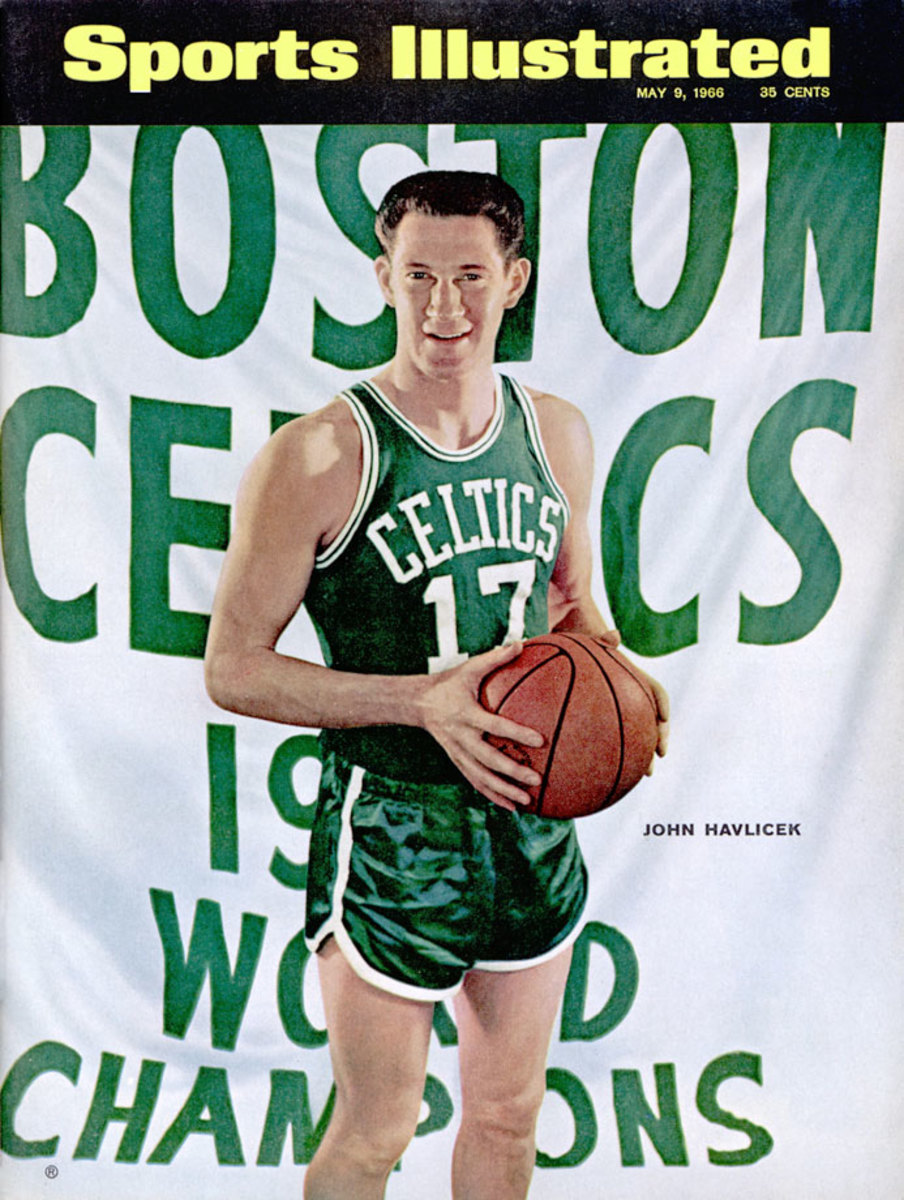
One of the most well-rounded players ever, Havlicek’s Celtics teams won eight championships in his 13 seasons. Hondo bridged the gap between the Bill Russell era and the Celtics’ successful run into the 1970s. In his prime, Havlicek posted numbers strikingly similar to LeBron James, averaging 28.9 points, 9.0 rebounds and 7.5 assists per game in 1970-71. — Runner-up: Chris Mullin
18 — Dave Cowens
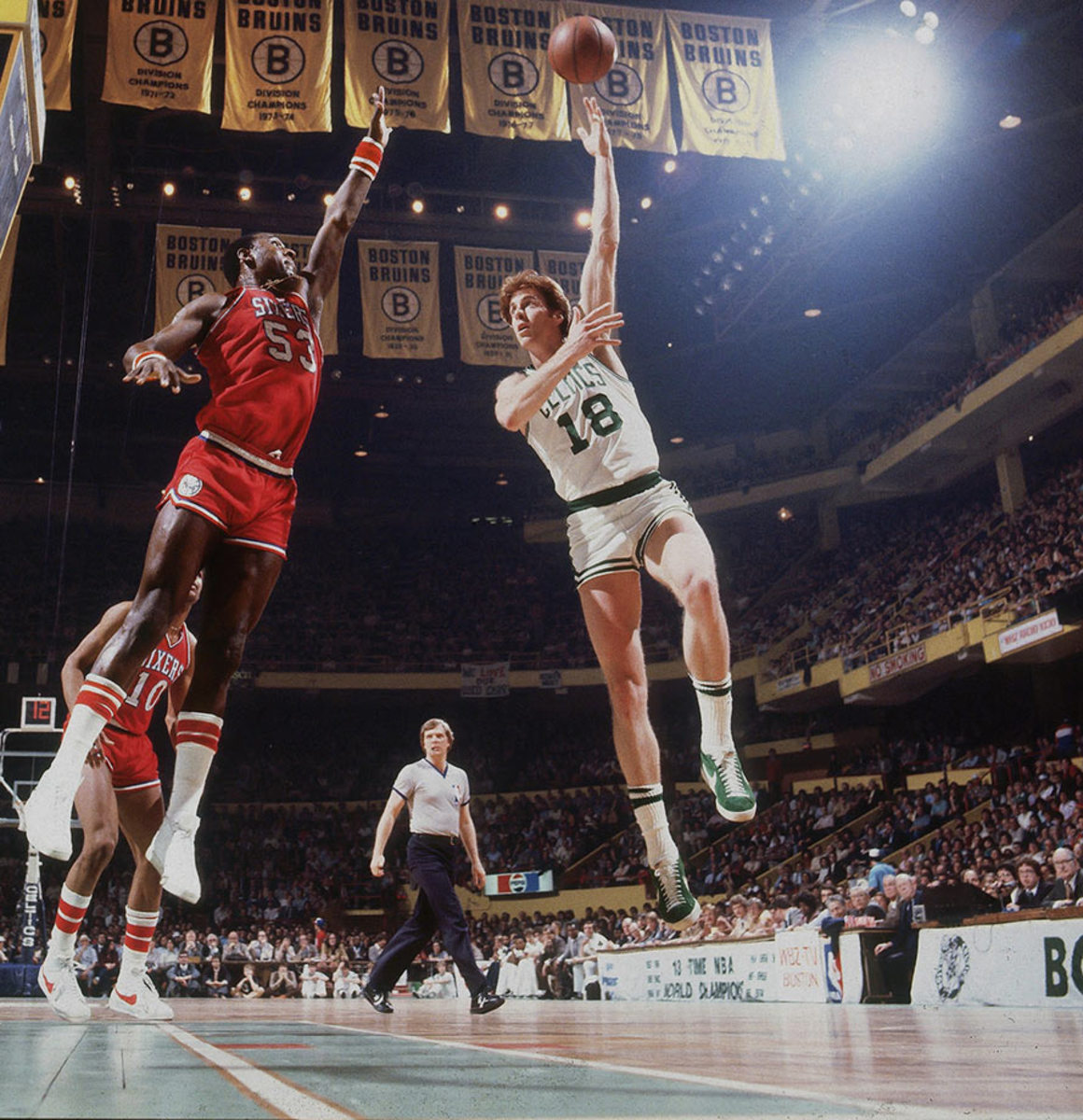
Best known for his all-out approach on every play, Cowens was a stalwart for the Celtics in the ‘70s, winning titles in ‘74 and ‘76 and MVP honors in ‘73, on the back of a 20.5 point, 16.2 rebound campaign. Also a strong passer, Cowens retired averaging 3.8 assists per game to go with 17.6 points and 13.6 boards. An eight-time All-Star, Cowens is one of only four players (including Scottie Pippen, LeBron James and Kevin Garnett) to lead his team in points, rebounds, assists, blocks, and steals for an entire season.
19 — Willis Reed
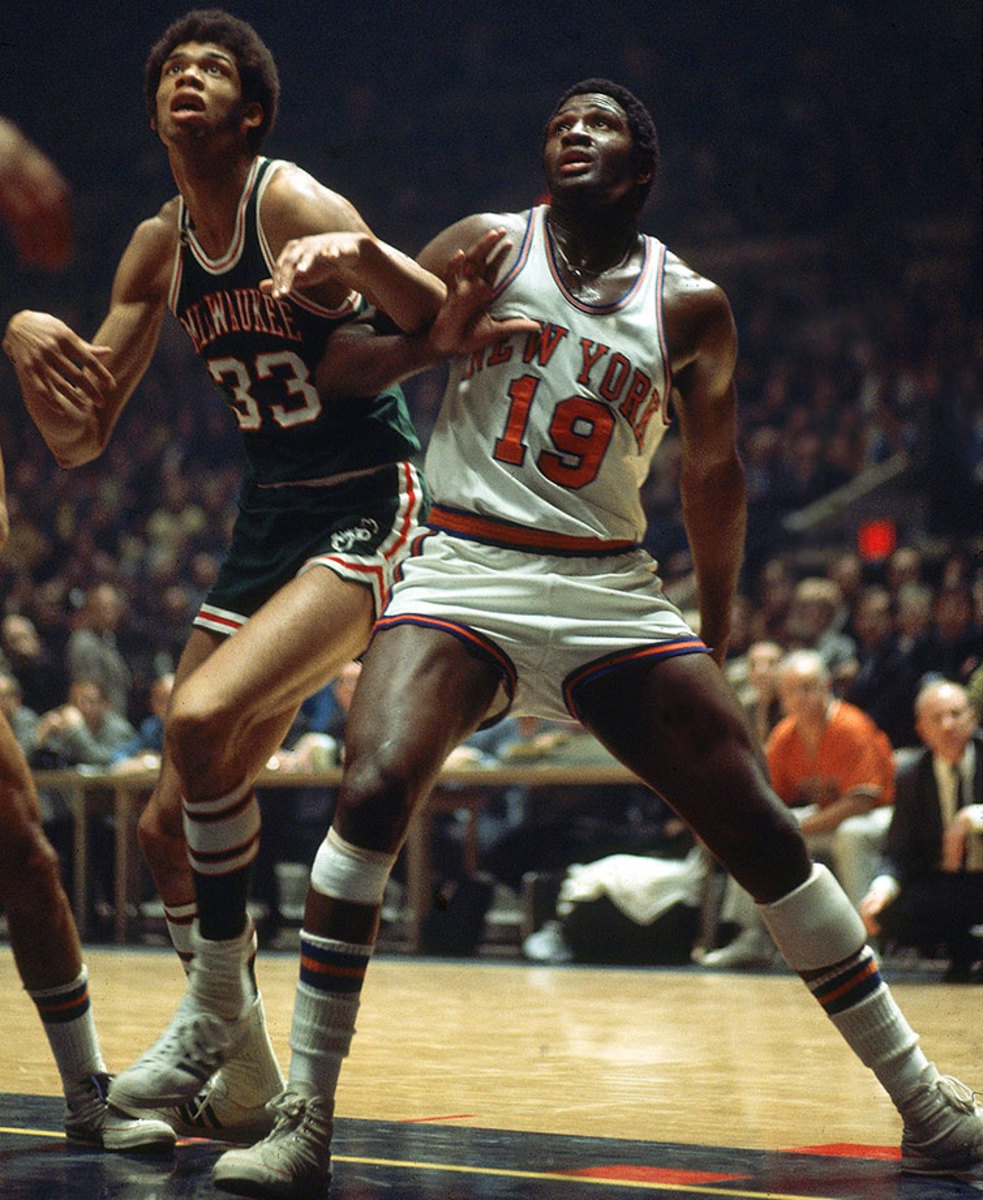
The Knicks haven’t won an NBA title since Reed helped clinch the 1973 championship. Reed will forever be remembered for his magical return to Game 7 of the 1970 Finals against the Los Angeles Lakers, delivering the Knicks’ first title in franchise history. He averaged 23.7 points and 13.8 rebounds per game during the 1970 playoffs. — Runner-up: Don Nelson
20 — Gary Payton
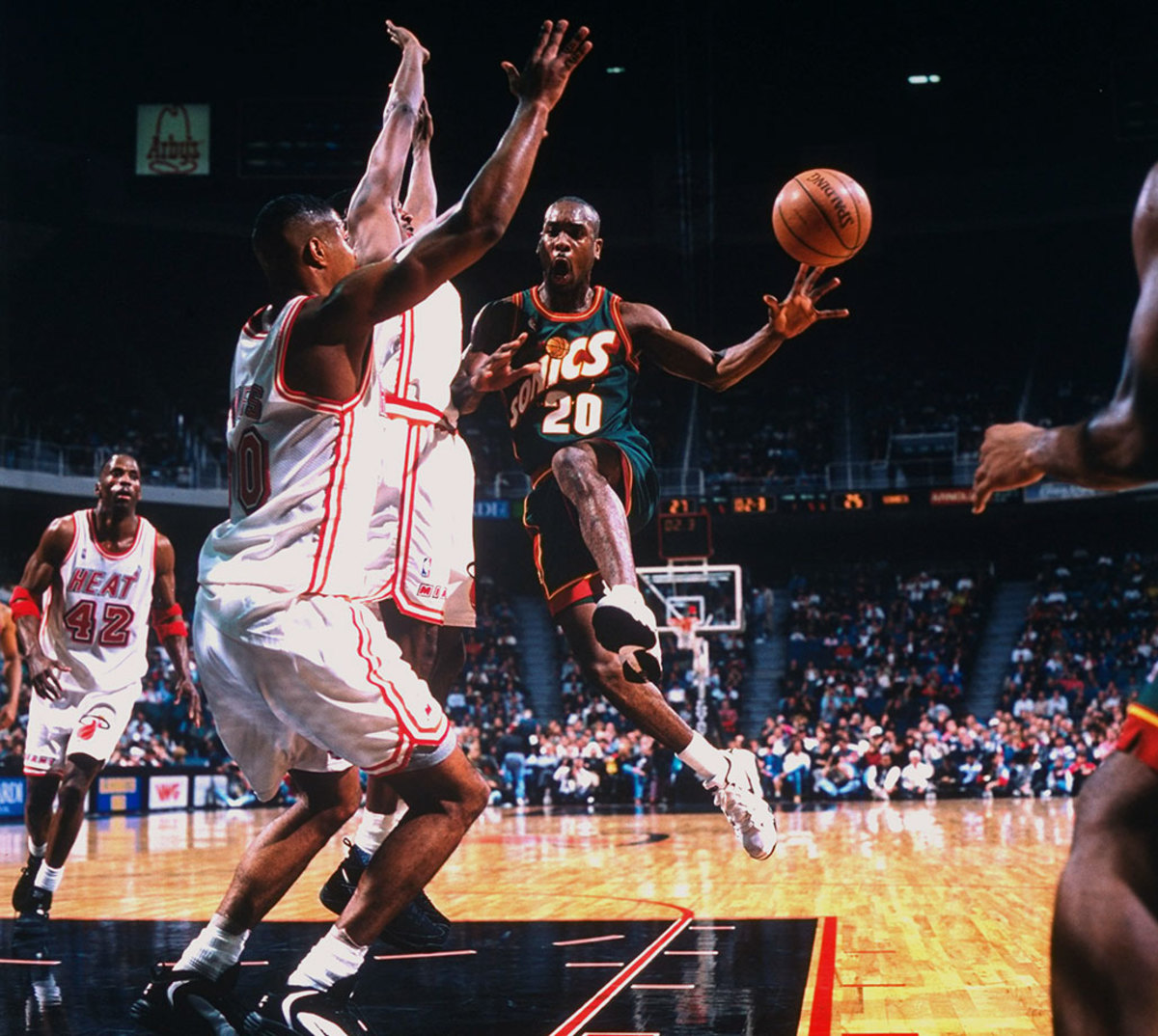
‘The Glove’ earned his nickname thanks to a reputation as the NBA’s toughest defensive point guard, bolstered by nine straight All-Defensive first team selections from 1994-2002. Payton, a nine-time All-Star, was no slouch on the offensive end, either, with a well-rounded game and the ability to create for others and get buckets when needed. One of the iconic players in the history of the Sonics, Payton would hit a huge shot as a member of the Heat in Game 5 of 2006 Finals to help Miami seize the title, his lone championship. —Runner-up: Manu Ginobili
21 — Tim Duncan
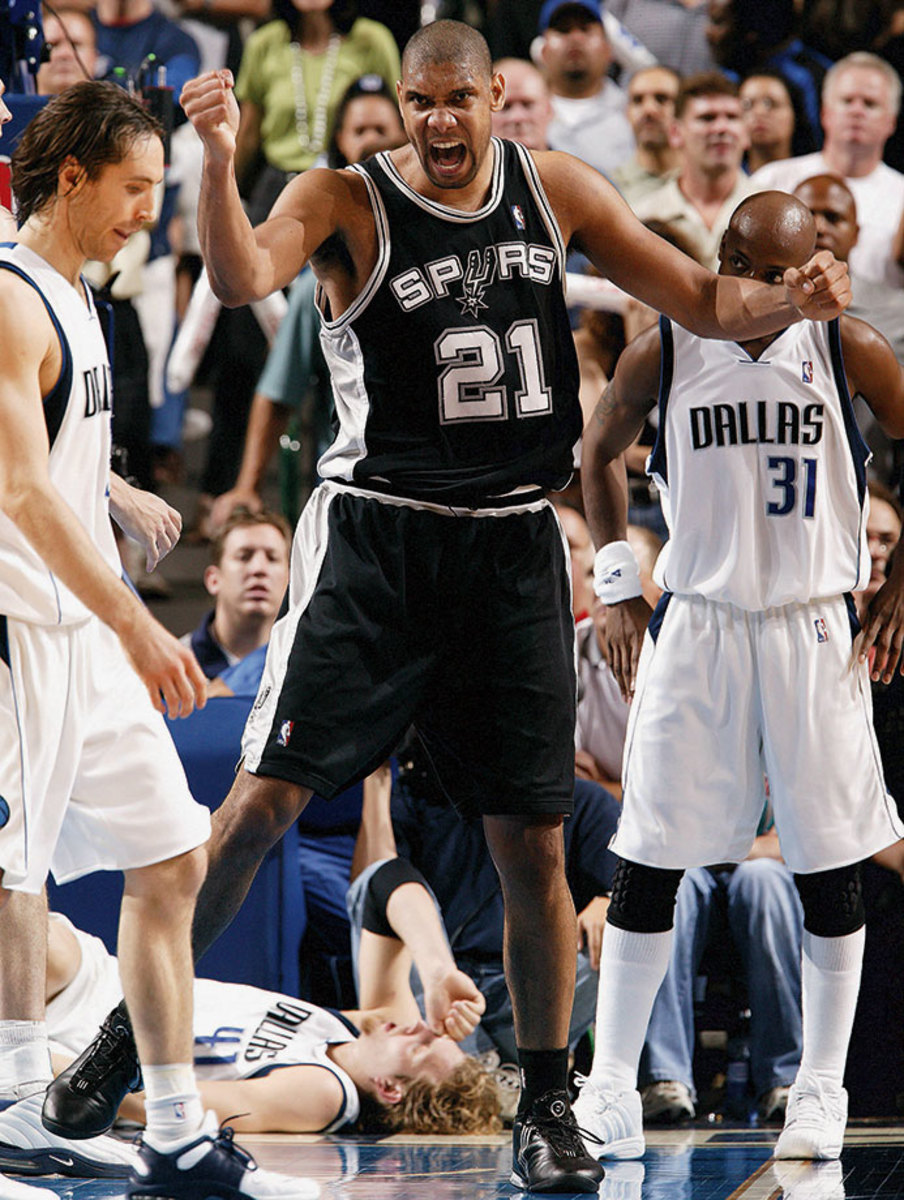
As he prepares for his 19th season, it’s hard to argue against Tim Duncan as the greatest player of his generation, bridging the gap between Michael Jordan and LeBron James. The four titles and 15 All-Star appearances are incredible on their own. Factor in his unfathomably consistent numbers and Duncan’s resume is one of the greatest all-time. Period. — Runner-up: Dominique Wilkins
22 — Elgin Baylor
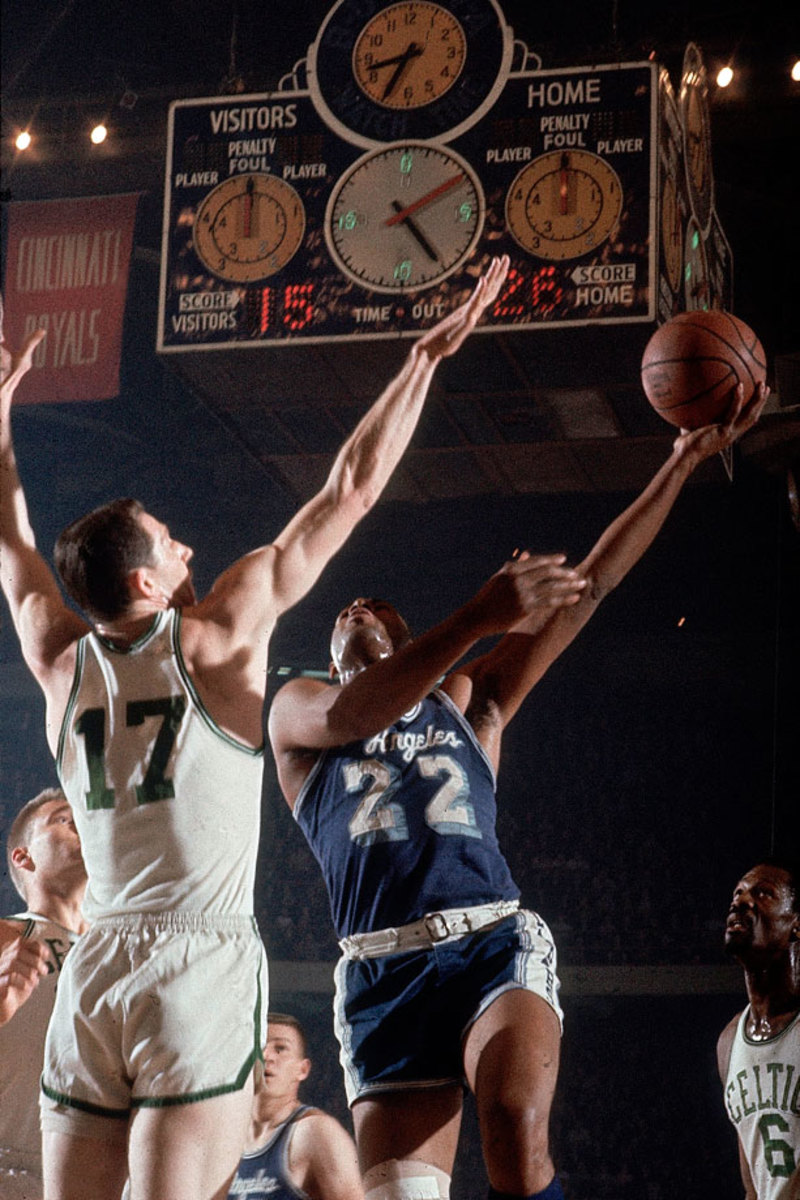
One of the NBA’s first high-flyers, Baylor was an unbelievable scorer in the pre three-point era, averaging 38.3 points per game in 1962. The 11-time All-Star appeared in eight NBA Finals but never won a title, retiring due to chronic knee problems in 1972 —a year in which Los Angeles finally won it all (he was given a ring at the end of the season anyway.) He holds the record for points scored in an NBA Finals game, with 61 in Game 5 in 1962. —Runner-up: Clyde Drexler
23 — Michael Jordan
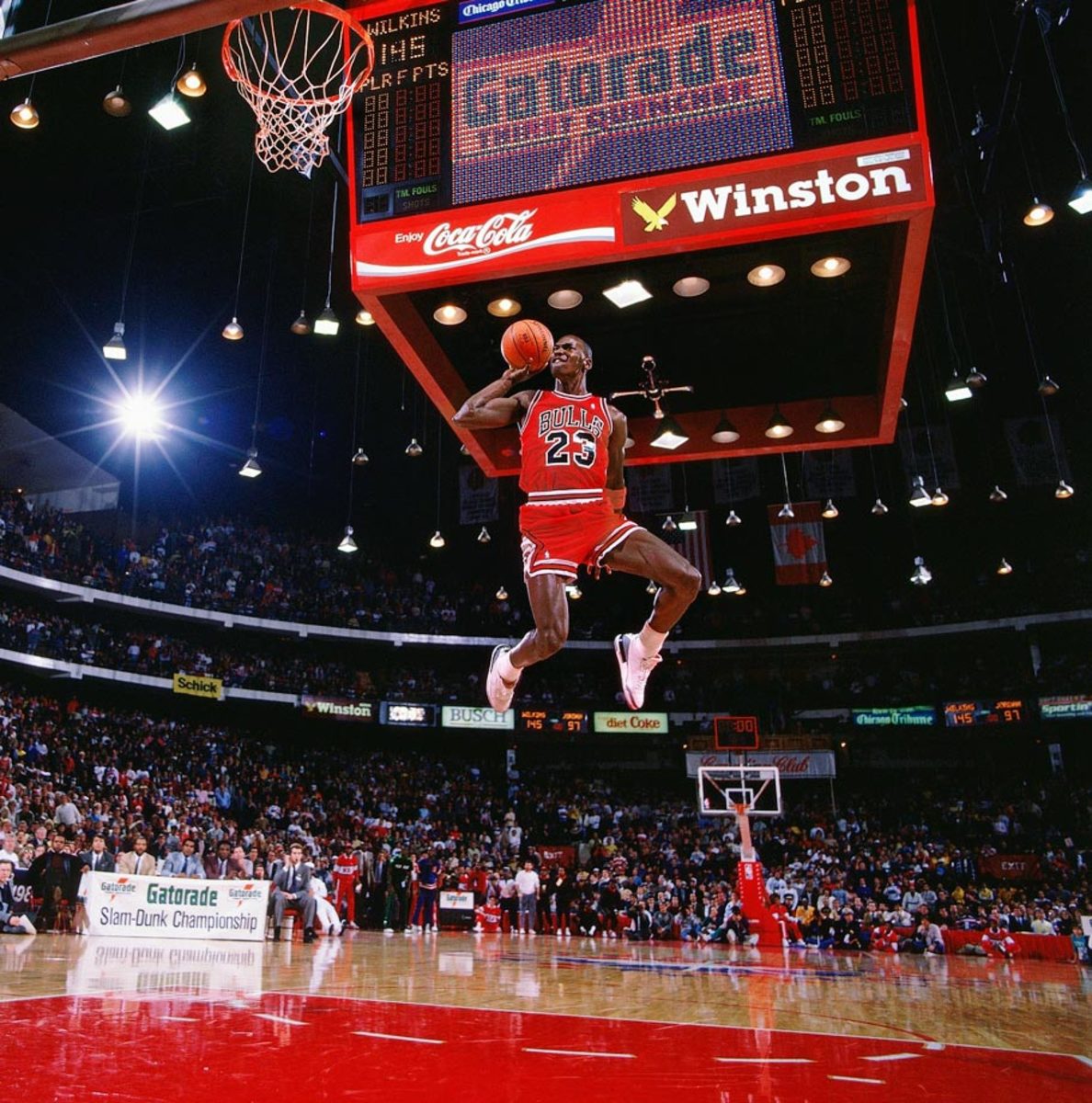
Six championships. Five regular season MVPs. Countless All-NBA and All-NBA defensive selections. The most famous sneaker line in history. Gravity-defying dunk contest victories. The list goes on and on and on and on for the current majority owner of the Charlotte Hornets. Michael Jordan is the G.O.A.T., friends. — Runner-up: LeBron James
24 — Rick Barry
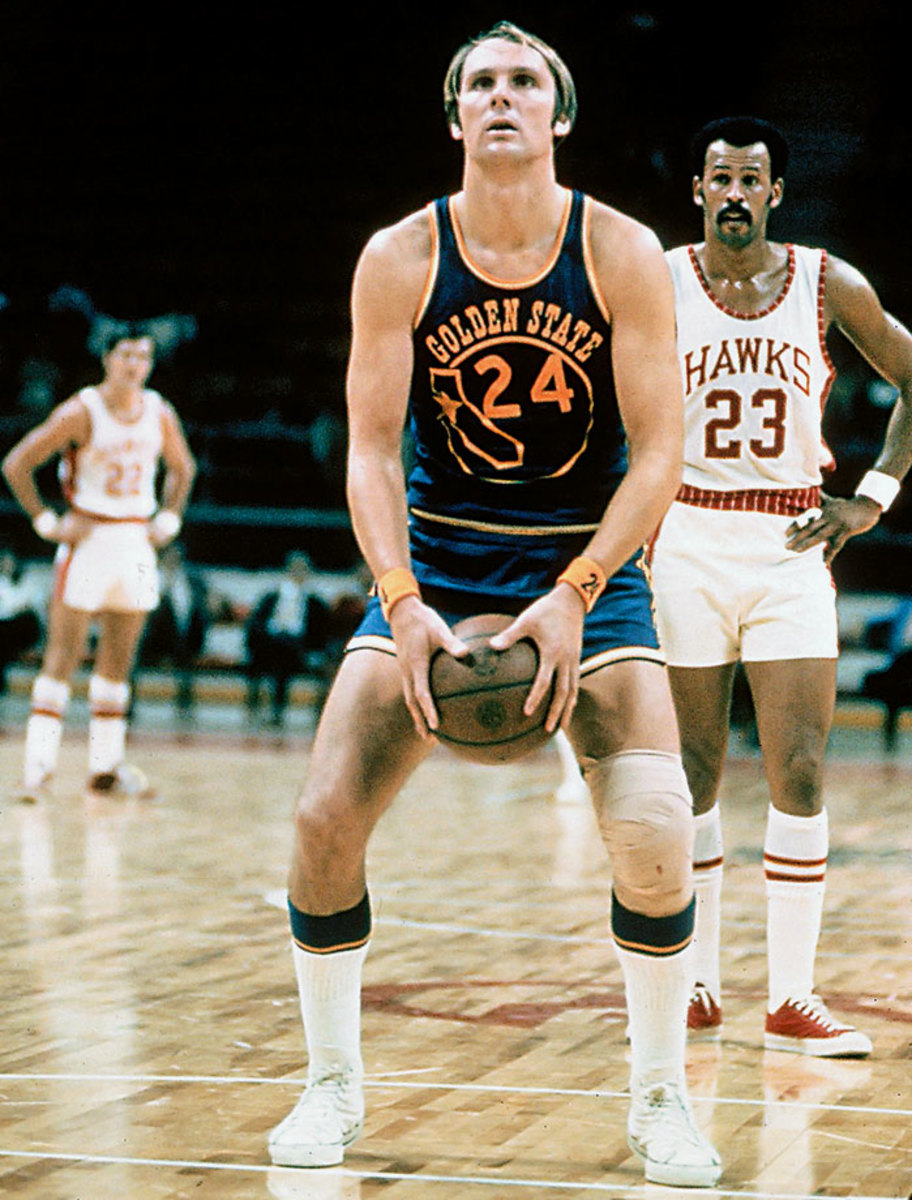
Beyond pioneering the granny-style free throw, Barry was one of the league’s most dominant scorers of all-time, an eight-time All-Star and the 1975 Finals MVP. He spent four seasons from 1968-1972 playing in the ABA (over which he averaged 30.5 points), which places a hit on his all-time totals, but he retired with NBA averages of 23.2 points, 6.5 rebounds and 5.1 assists (and 90% from the foul line). — Runners-up: Bobby Jones, Sam Jones
25 — Mark Price
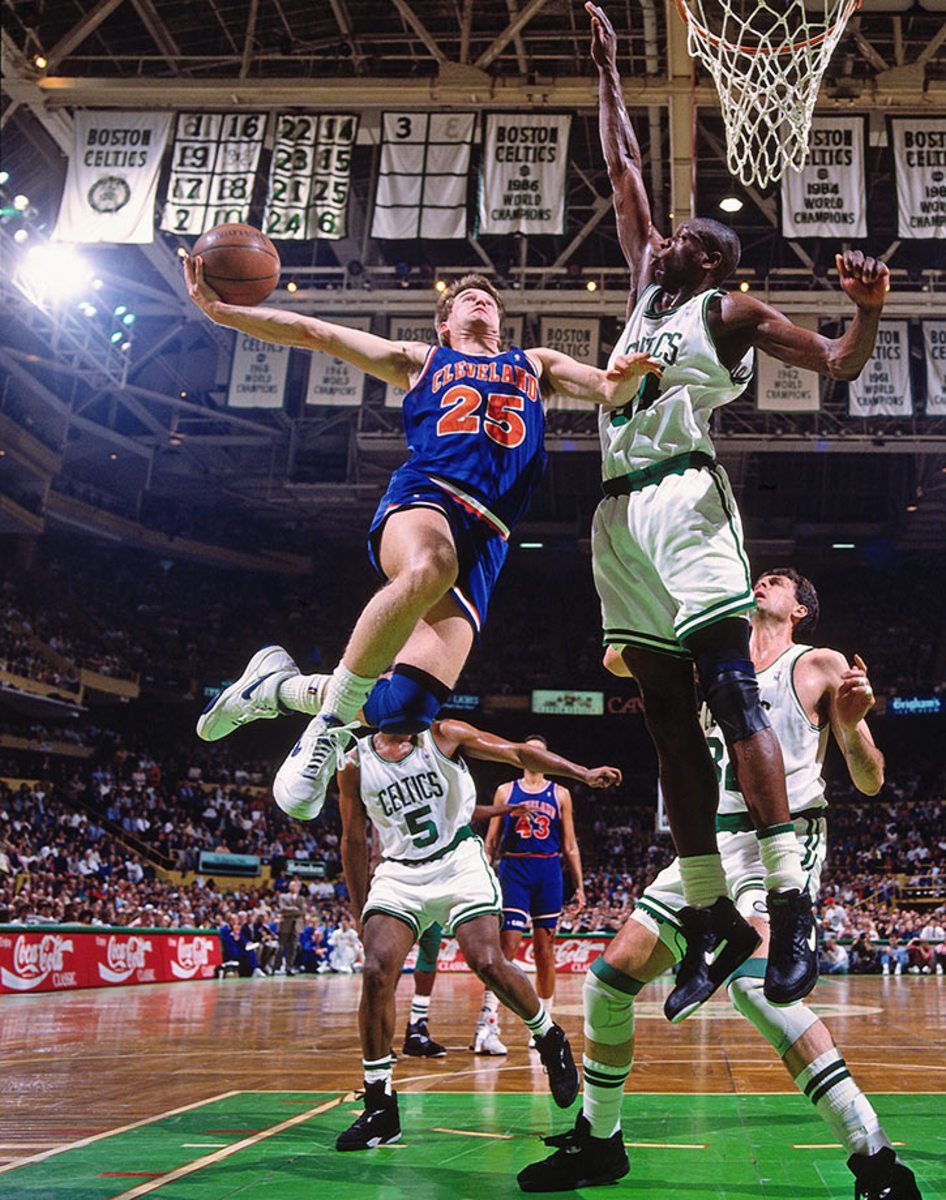
One of the greatest free throw shooters in NBA history (a 90.4% career mark), Price doesn’t get enough credit for his overall game. A four-time All-Star, Price led the Cleveland Cavaliers for nearly a decade, running an efficient offense and posting a double-double, 16.9 points and 10.4 assists per game in the 1990-91 season. — Runners-up: Gail Goodrich, Doc Rivers
26 — Kyle Korver
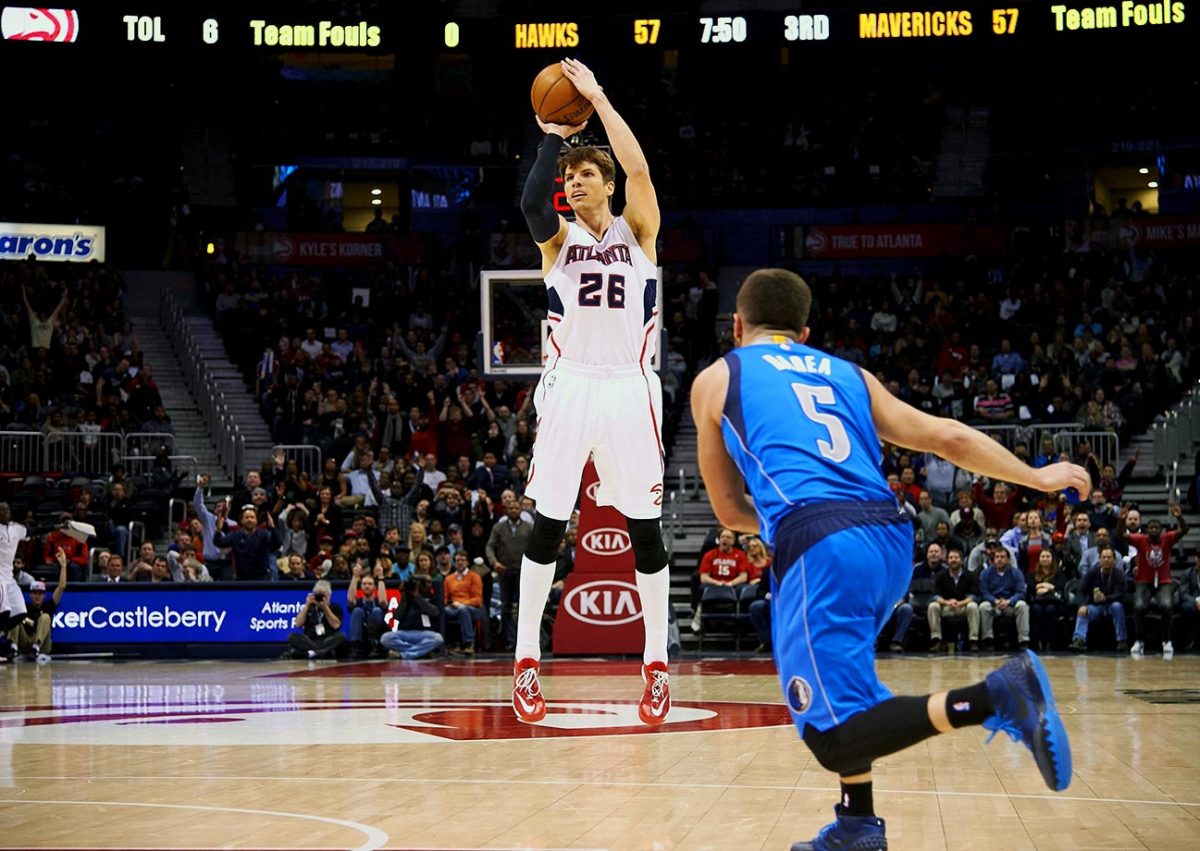
One of the league’s top three-point snipers, Korver just completed an incredible All-Star campaign with Atlanta, shooting 49.2% from deep as a key cog in a diverse offense. His acumen from outside gives him the nod here at No. 26.
27 — Jack Twyman
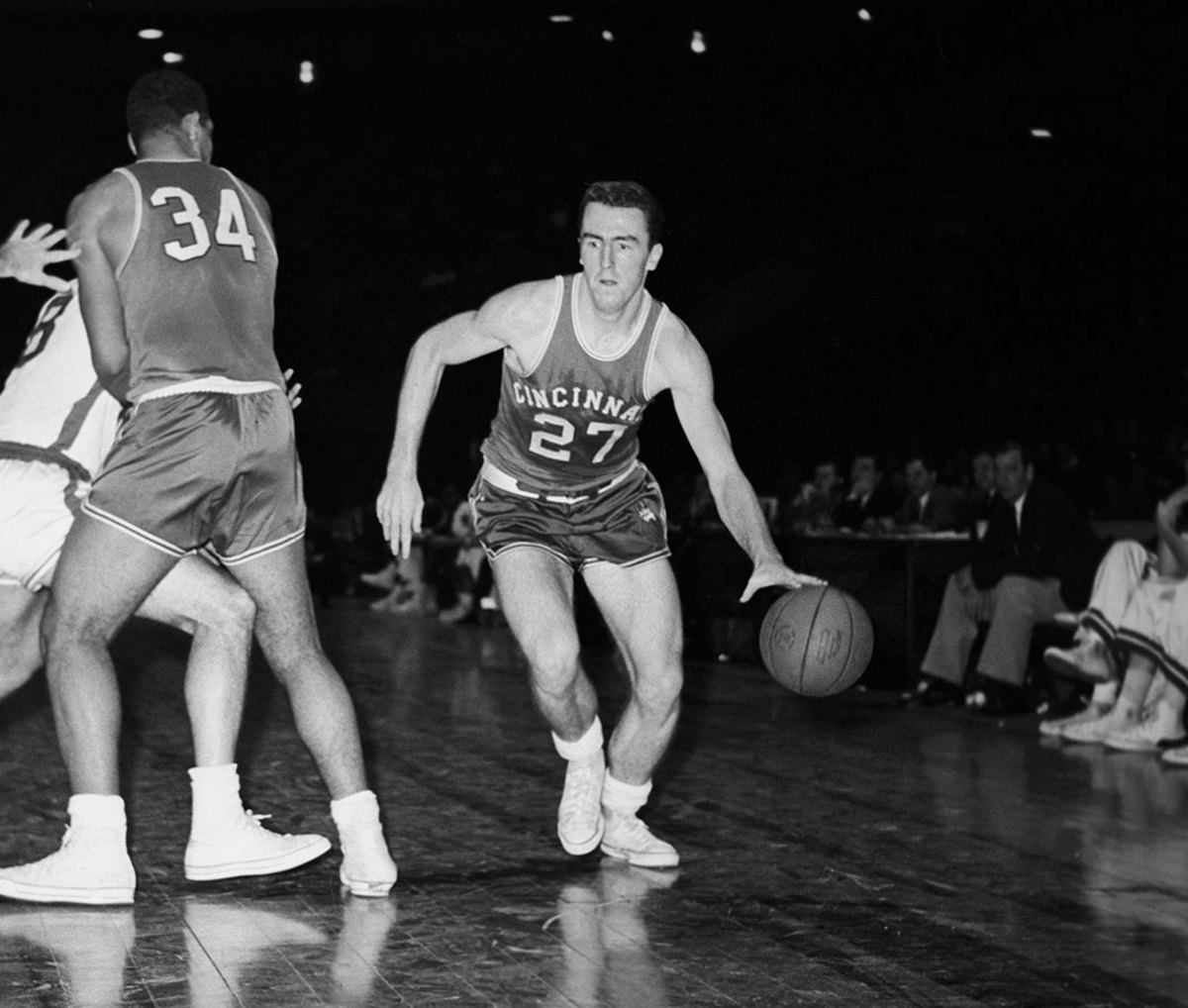
A six-time All-Star, Twyman scorched opponents in the late 1950s and early 1960s, averaging 19.2 points per game during his 11-year career. He hung 31.2 points per game in the 1959-60 season. Twyman trails only Oscar Robertson for most career points in franchise history. The Royals are now the Sacramento Kings. — Runners-up: John Johnson, Joe Caldwell
28 — Arron Afflalo
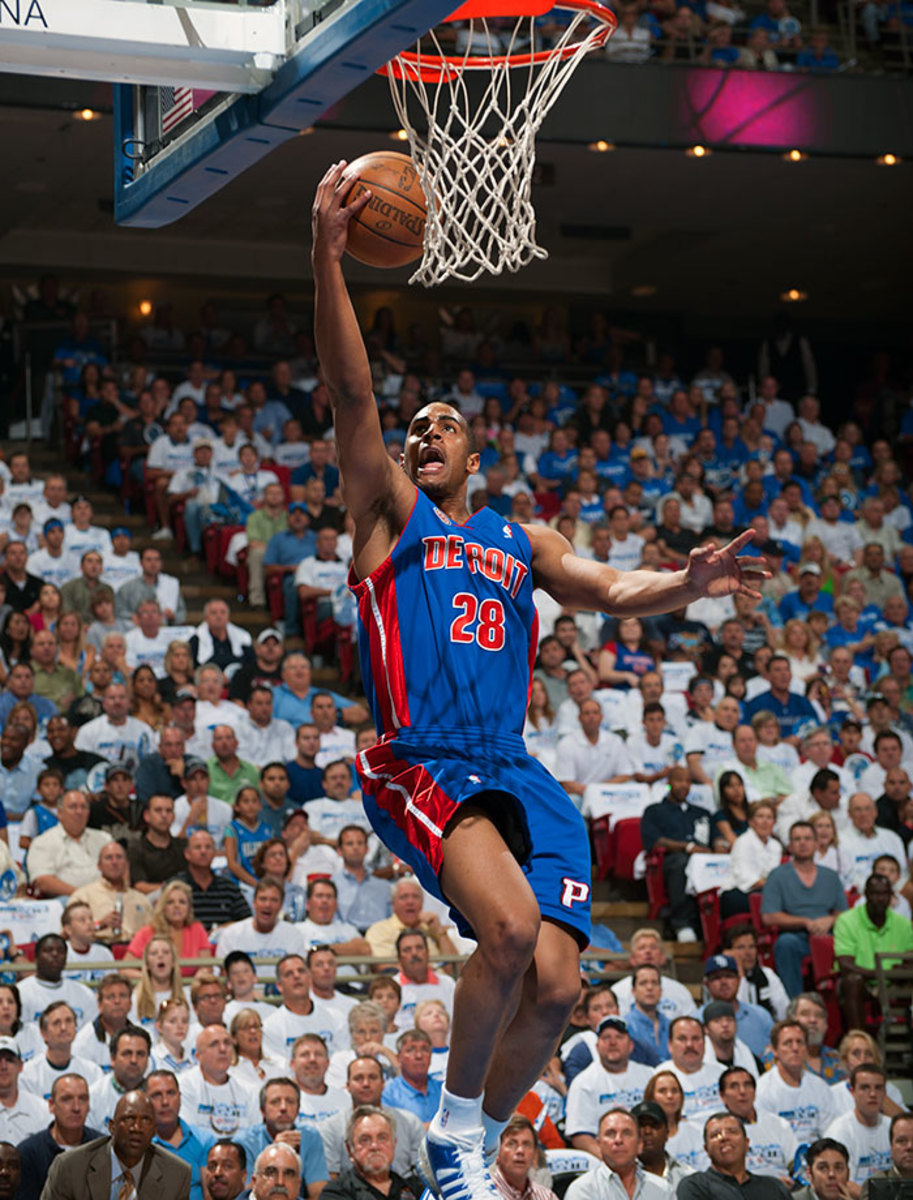
Afflalo has been a steady, useful two-way player eight seasons into his career, peaking in 2013-14 with Orlando where he put up 18.2 points and shot 42.7% from three. The UCLA product and Compton native also famously inspired a song by rapper Kendrick Lamar. He begins next season as a Knick.
29 — Paul Silas
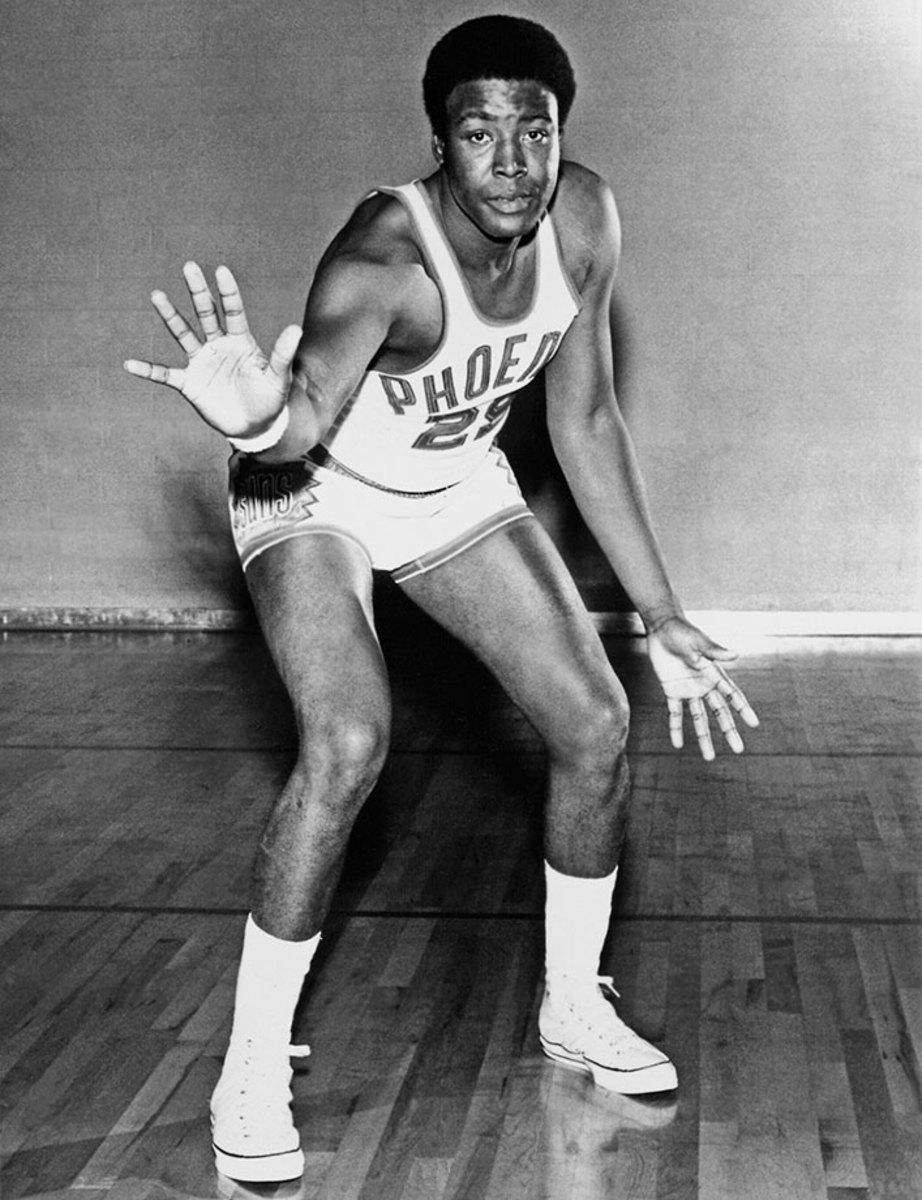
A two-time All-Star, Paul Silas played in three different decades and won three NBA championships (two with the Boston Celtics and one with the Seattle Supersonics). At just 6’7”, Silas was one of the best rebounders of his era, leading the NBA in offensive boards per game in the 1975-76 season. — Runner-up: Pervis Ellison
30 — Bernard King
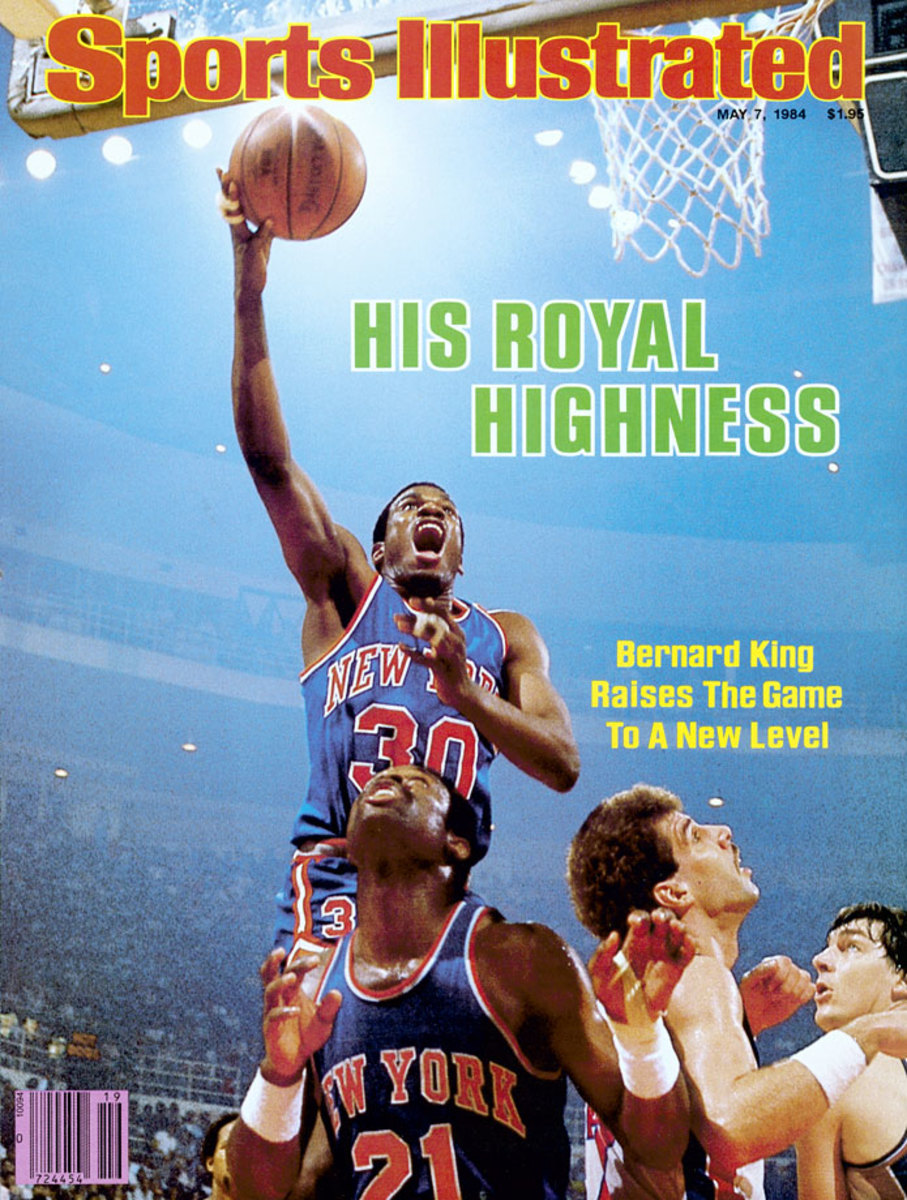
A tremendous athlete and gifted scorer, King came into the league averaging 24.2 points per game as a rookie and went on to become one of the most dominant offensive forwards of the ‘80s. A torn ACL in 1985 sidelined him for more than a year, and he was never quite the same—although he put together a strong comeback at the end of his career, with an impressive 28.4 points at age 34 in his second-to-last season. — Runner-up: Stephen Curry
31 — Reggie Miller
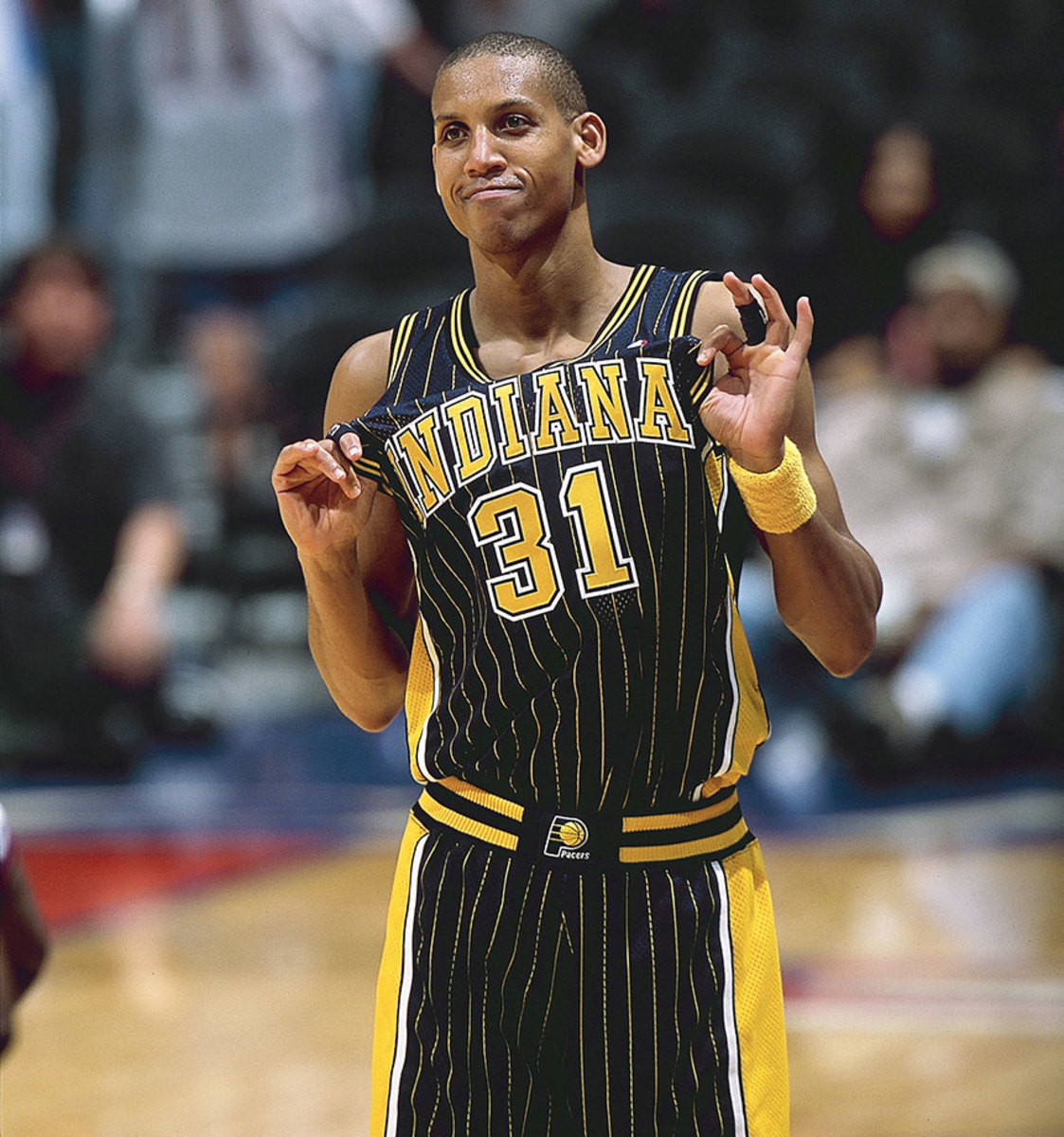
For several years, Reggie Miller was the NBA’s all-time leader in career three-pointers drained. Miller still ranks second, only behind Ray Allen. A five-time All-Star, Miller brought it in the postseason as well, most notably his clutch eight points in nine seconds to beat the New York Knicks in 1995. He led the Pacers to the 2000 NBA Finals as well. — Runner-up: Shawn Marion
32 — Magic Johnson
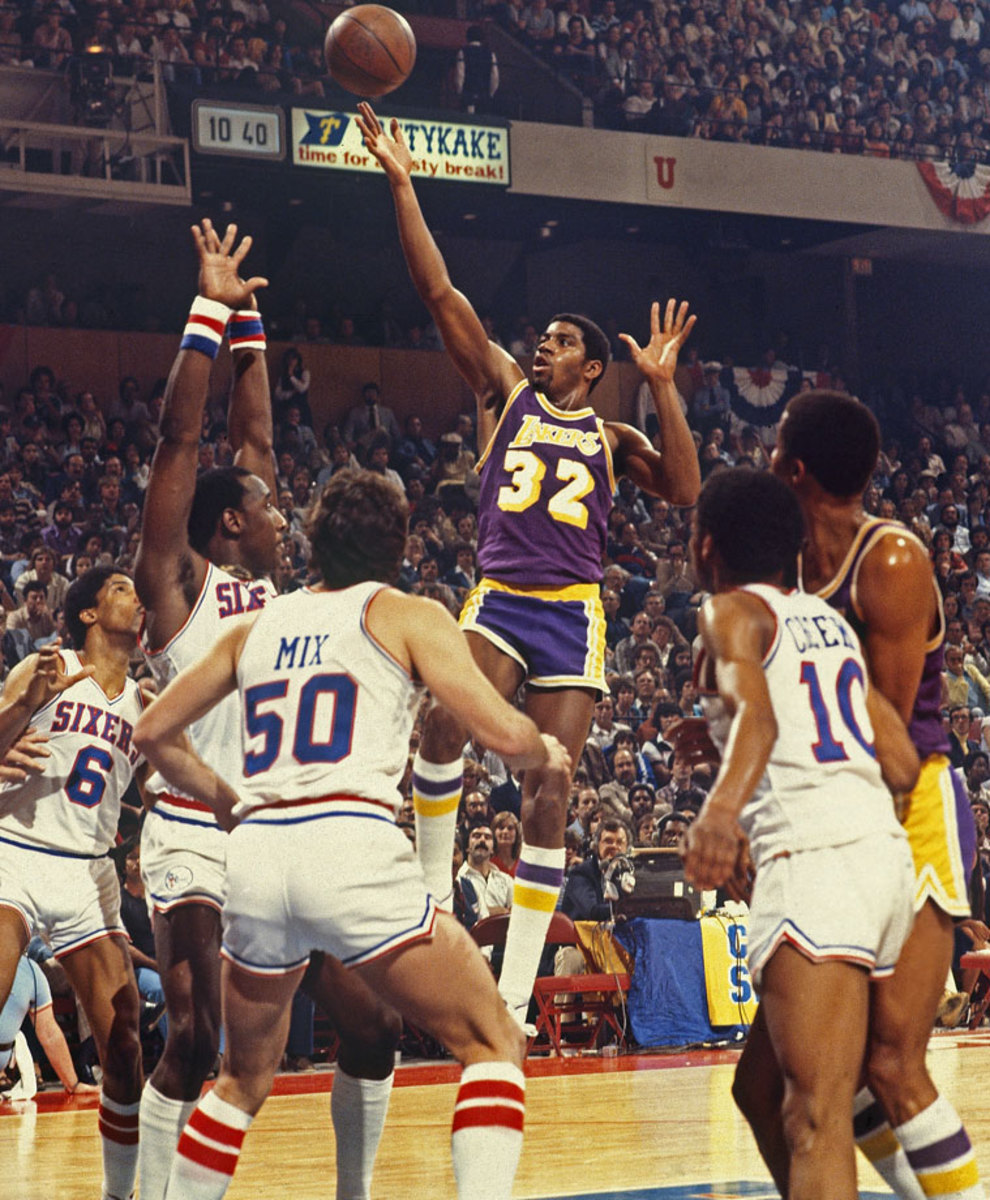
It’s hard to say enough about Magic, who changed perceptions of what a point guard could be, won multiple titles and became one of the NBA’s most engaging personalities all at once. A five-time NBA champ, three-time MVP, nine-time first-team All-NBA and 12-time All-Star, Johnson, with his playoff hardware and impact on the game, edges out Malone for this spot in a tight one. — Runners-up: Karl Malone, Kevin McHale
33 — Kareem Abdul-Jabbar
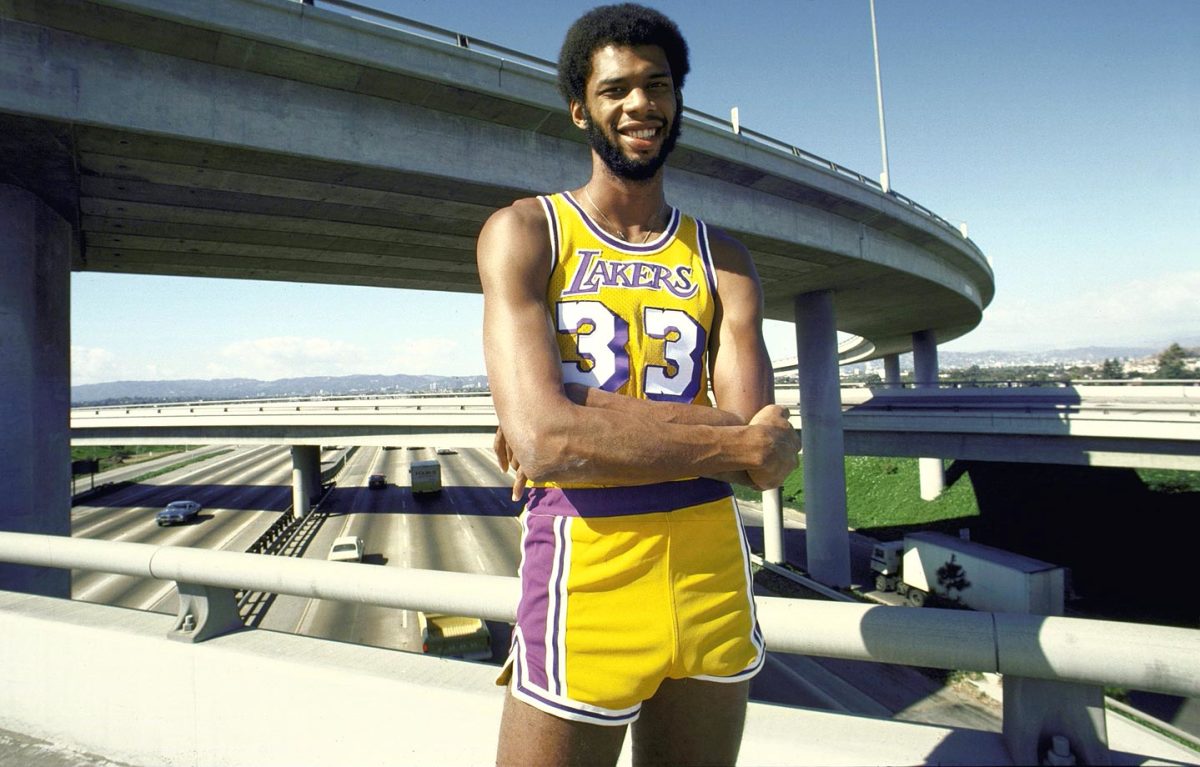
Clearly one of the greatest players ever, Abdul-Jabbar is the NBA’s all-time leading scorer by a mile and played in the second-most games of any player in history behind only Robert Parish. Kareem was an All-Star in 19 of his 20 seasons and claimed six championships. His skyhook will, of course, forever be legendary. — Runners-up: Larry Bird, Scottie Pippen
34 — Shaquille O’Neal
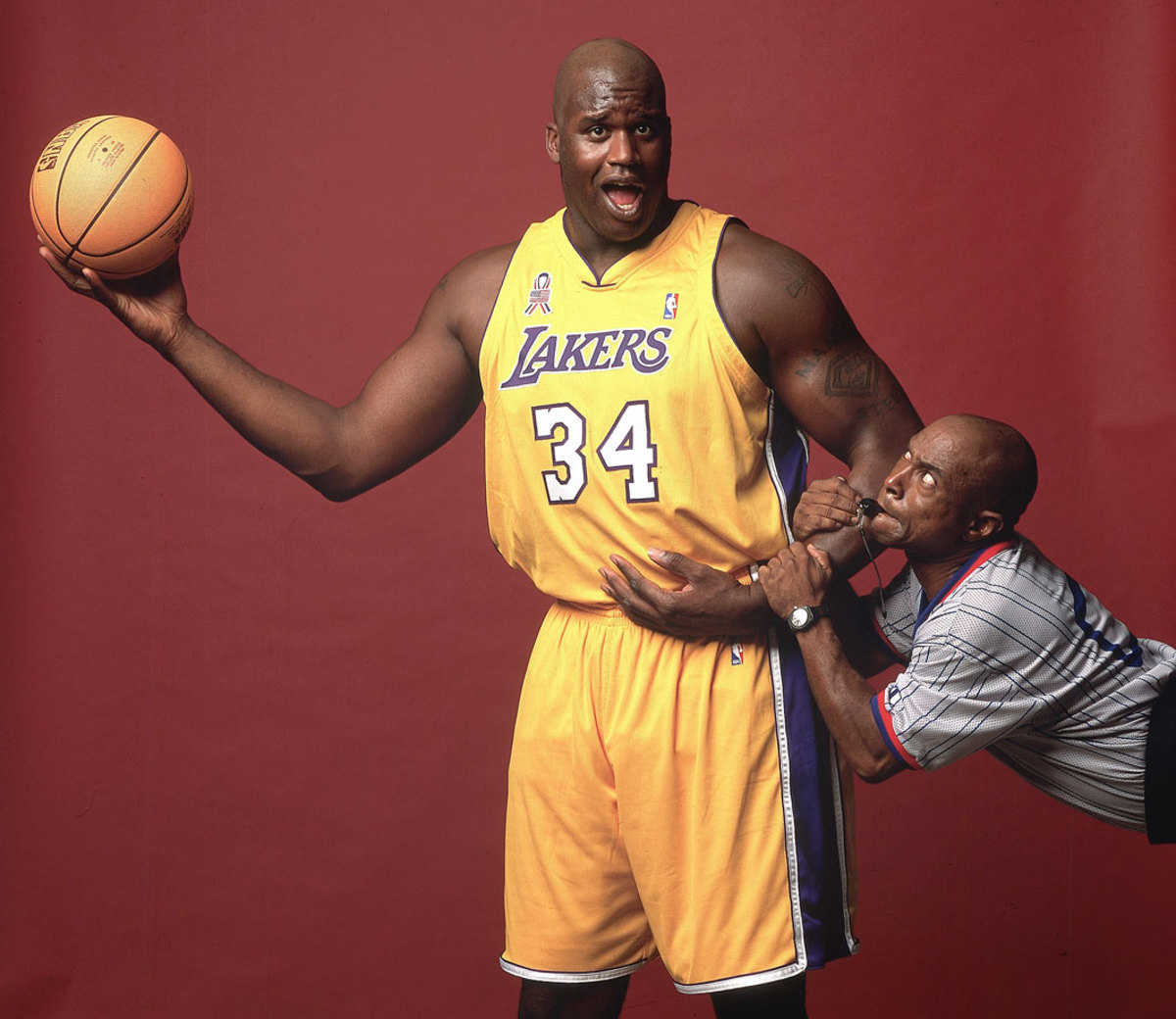
Prime Shaq has a case as the most singularly dominant individual player ever, with his blend of power and quickness, soft touch and ability to impose his will on the court. Four titles, three Finals MVPs and 15 All-Star appearances help Shaq’s résumé edge out the competition in one of the more difficult jersey number debates. — Runners-up: Hakeem Olajuwon, Charles Barkley, Ray Allen
35 — Kevin Durant
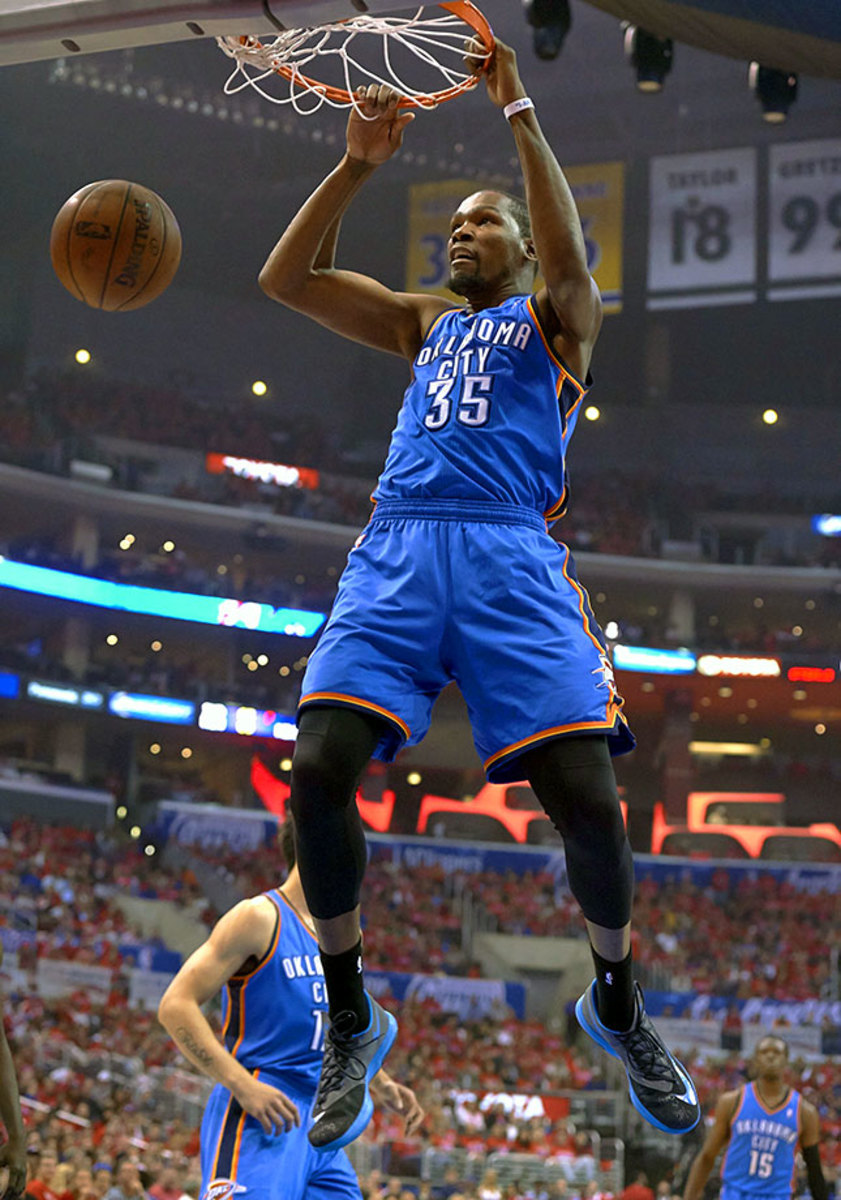
There’s a reason the entire NBA is holding its collective breath awaiting the 2016 offseason. Durant will be the biggest potential free agent since LeBron James in 2010. He’s a six-time All-Star, a four-time scoring leader and has an MVP to his name. Here’s to hoping he can return seamlessly after three foot surgeries. — Runner-up: Rudy LaRusso
36 — Rasheed Wallace
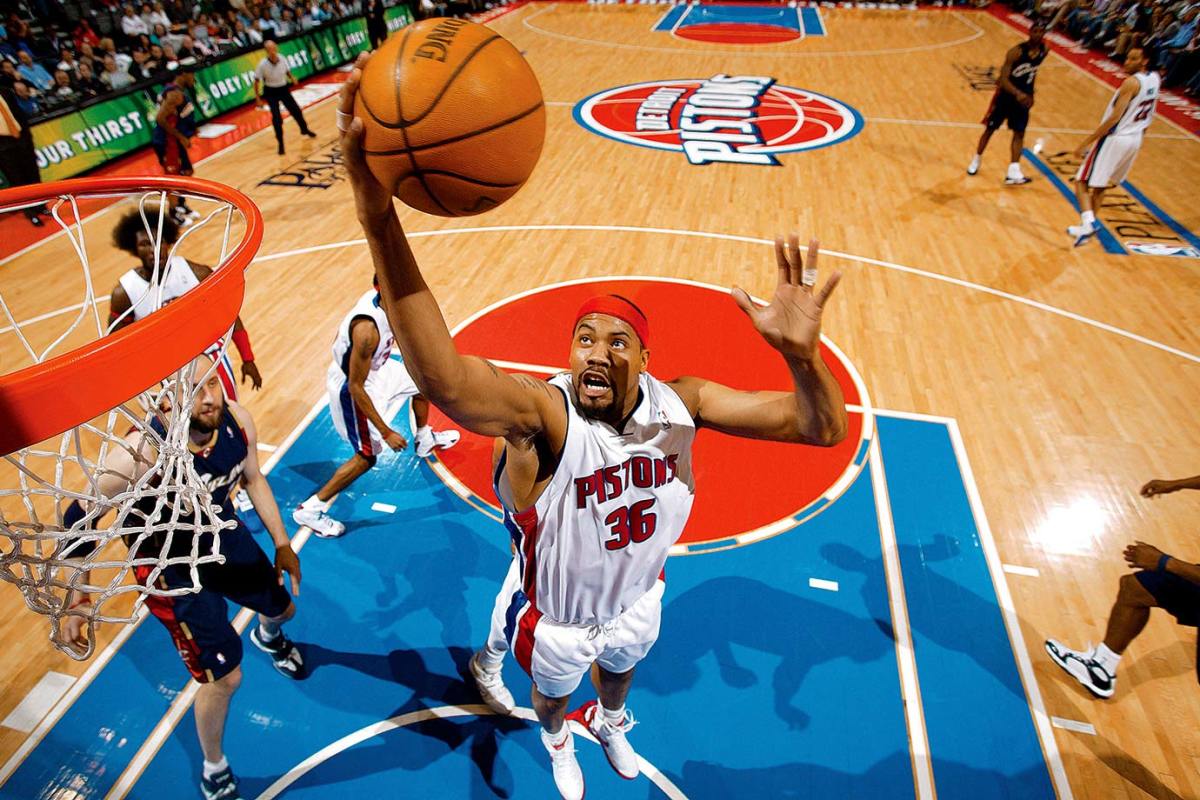
‘Sheed wore No. 30 for a large portion of his career, too, but he’s by far the most talented to don No. 36 (save for Shaq, briefly — and we aren’t repeating players here). Wallace led Detroit’s ensemble cast to the 2005 title and was a major player in the emergence of the modern stretch-four position. Often controversial, at times transcendent...well, ball don’t lie.
37 — Nick Van Exel
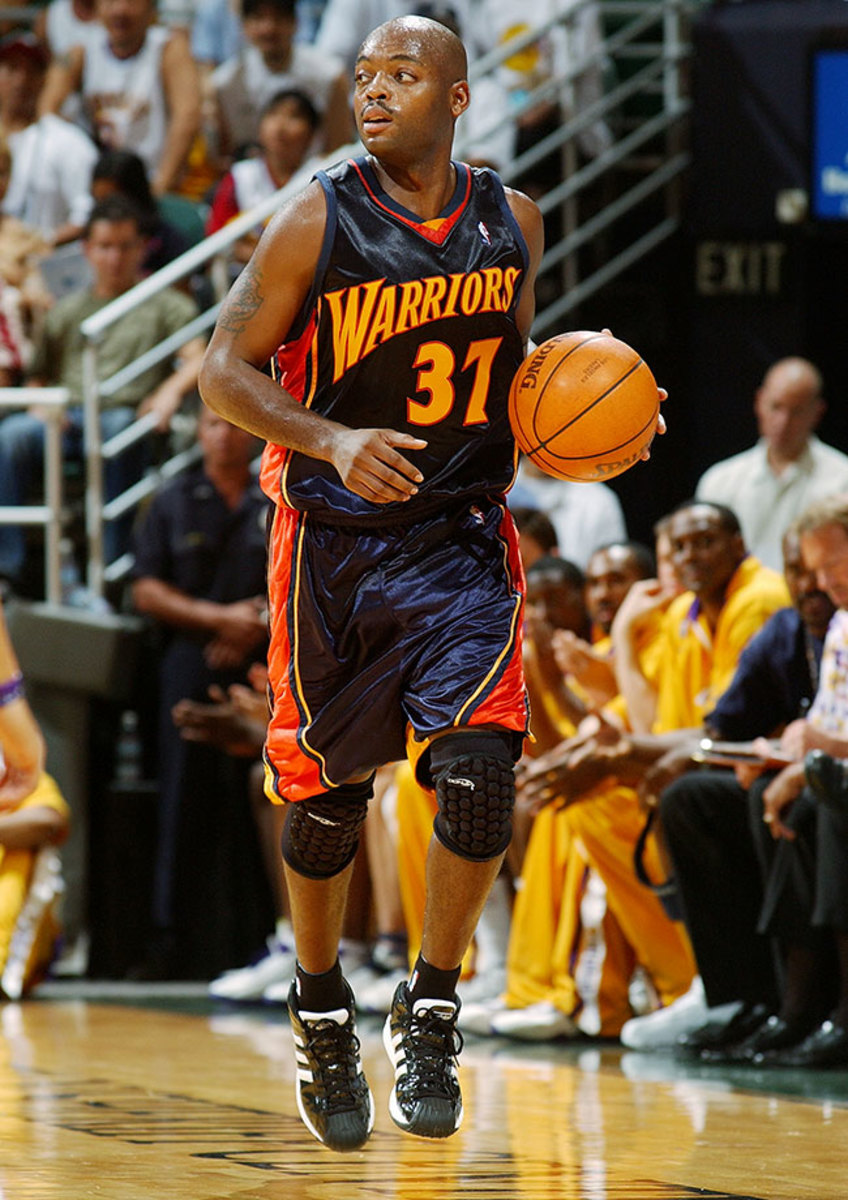
Nick Van Exel never quite found a home in the NBA, but he was far from a journeyman bouncing around from team to team. He played in one All-Star game, having always shown poise running the offense and performing in pick-and-roll sets. He ranks 22nd all-time in career three-pointers made. — Runner-up: Metta World Peace
38 — Viktor Khryapa
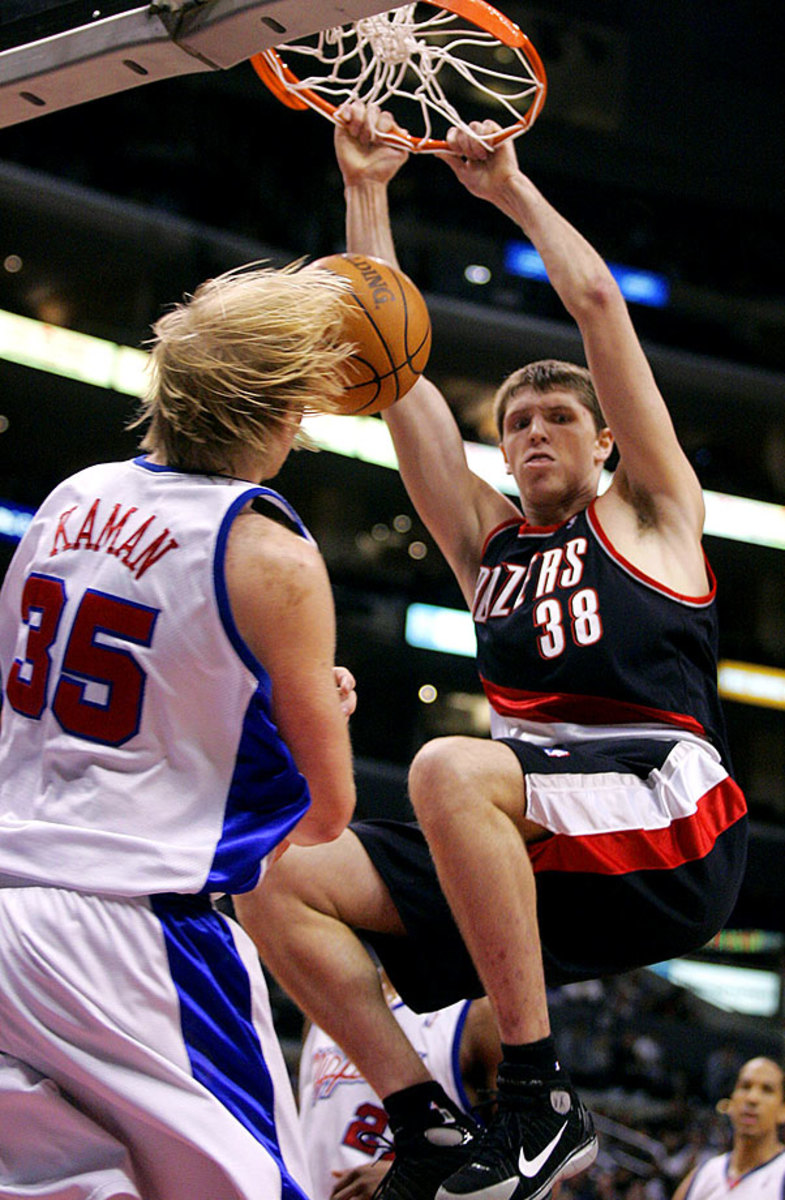
Khryapa struggled to find a home in the NBA and was done after four years, but has been a top player back in his native Russia before and after his American stint. He averaged 5.8 points and 4.4 rebounds for Portland in his best season.
39 — Jerami Grant
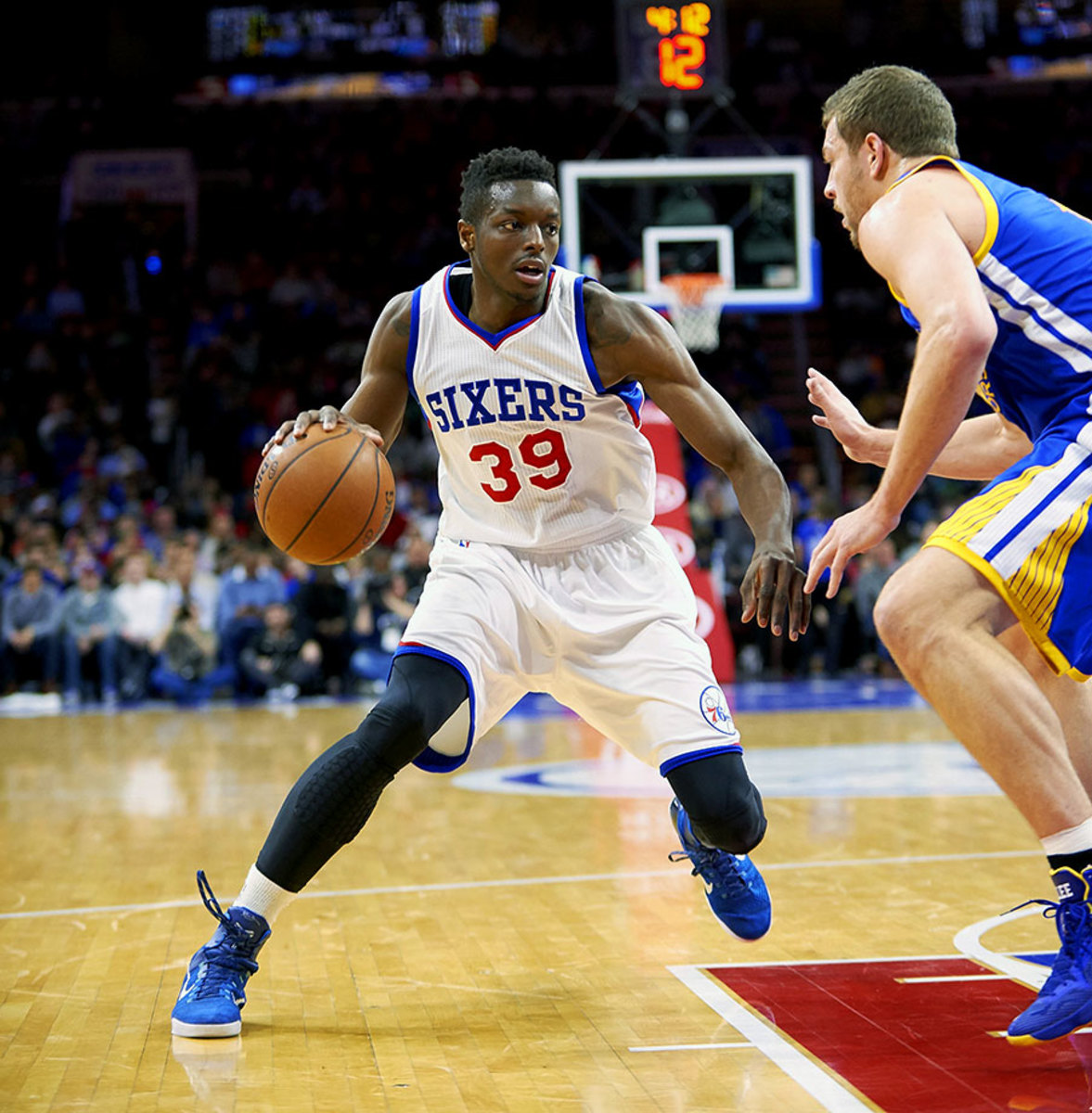
In just one NBA season, Grant posted the best statistical year of any player to don a No. 39 jersey. Grant settled on No. 39 after the Sixers made him the 39th pick in the 2014 NBA draft. He showed tremendous strides in his first season, draining 31.4% of his three-pointers on 156 attempts after hoisting just 20 triples in his two years at Syracuse. — Runner-up: Greg Ostertag
40 — Shawn Kemp
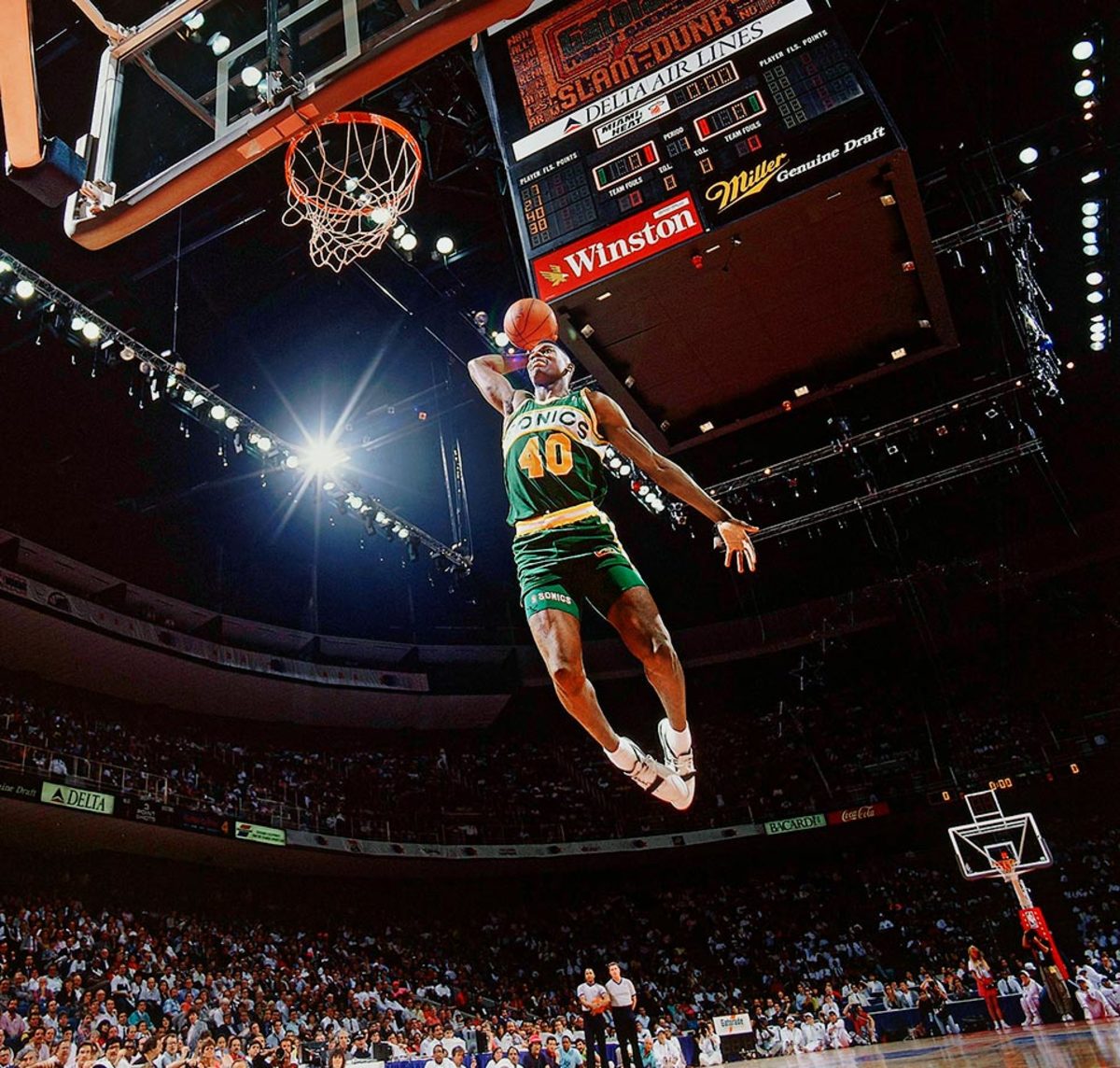
Kemp quickly became one of the NBA’s most exciting players and finished a six-time All-Star, his one-two punch with Gary Payton remaining one of the league’s more iconic pairings. At his best, he was a double-double machine and effective shot-blocker, threat to dunk on his defender and anchor for the Sonics on the way to the ‘96 NBA Finals, where they’d fall to Jordan, Pippen and the Bulls. —Runner-up: Bill Laimbeer
41 — Dirk Nowitzki
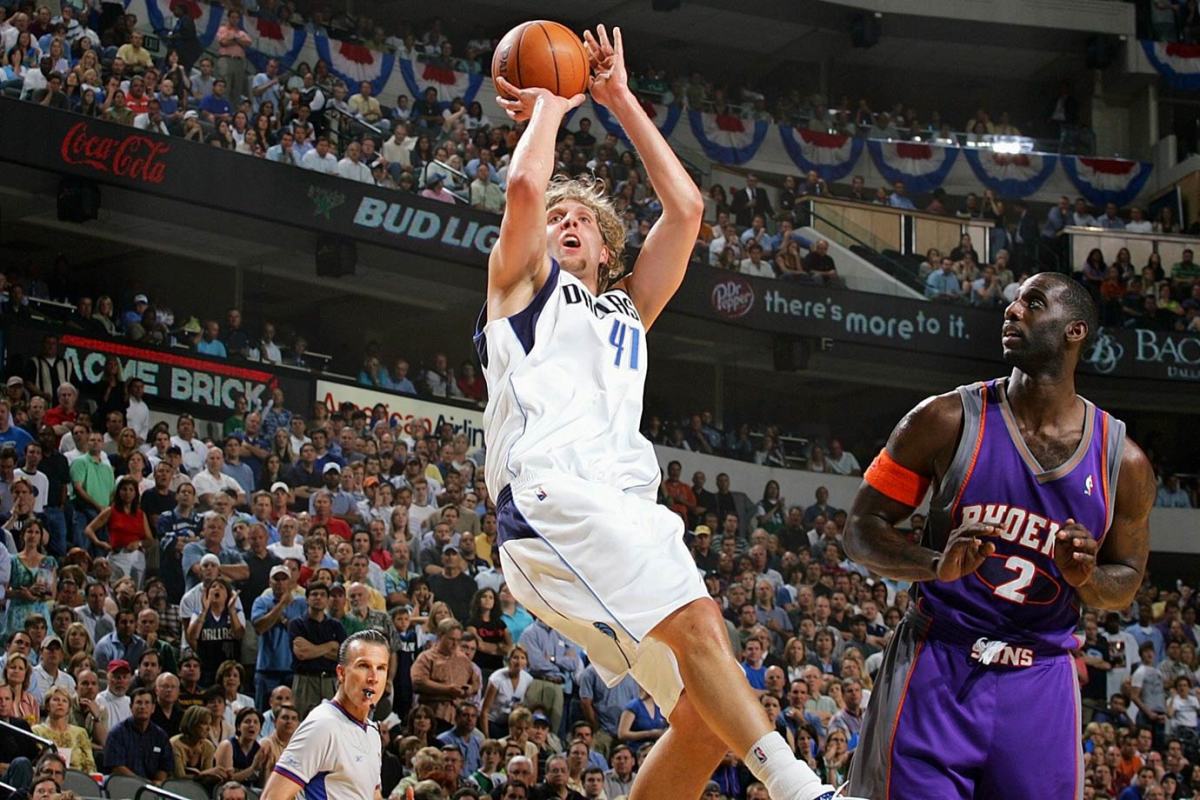
Arguably the greatest shooting big man of all-time, Nowitzki cemented his legacy after leading the Mavericks to a come-from-behind championship against the Heat in 2011. Nowitzki claimed the 2006 regular season MVP and has appeared in 13 All-Star Games. — Runners-up: Wes Unseld, Glen Rice
42 — James Worthy
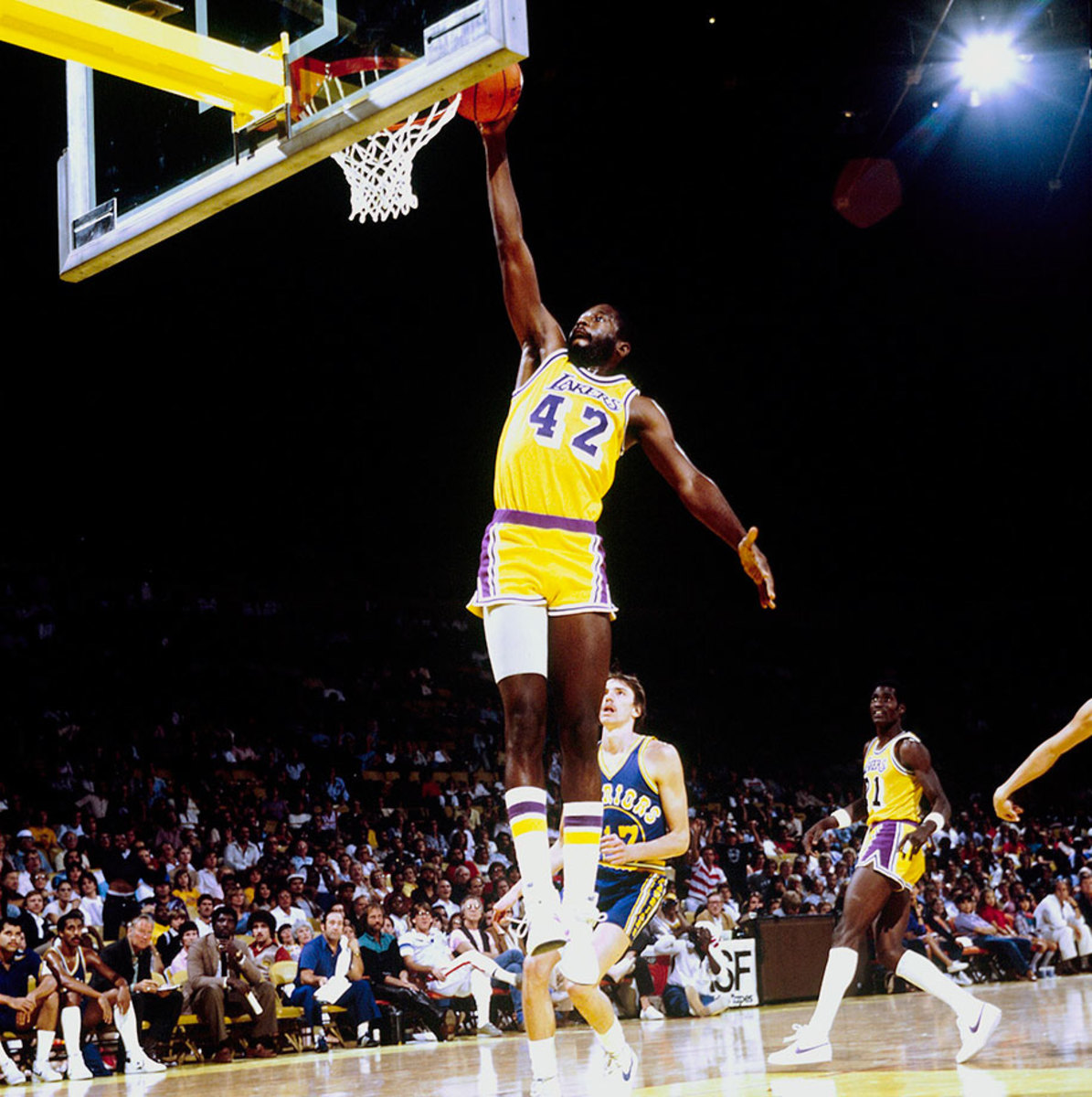
Worthy spent much of his career as the third banana on the Lakers alongside Kareem and Magic, but became an all-time great one in the process, getting his numbers and playing a critical role throughout. He averaged 17.6 points on 52.1% shooting in his 12 years as a Laker and came away a three-time NBA champion and seven-time All-Star. — Runners-up: Elton Brand, Kevin Love, Connie Hawkins
43 — Jack Sikma
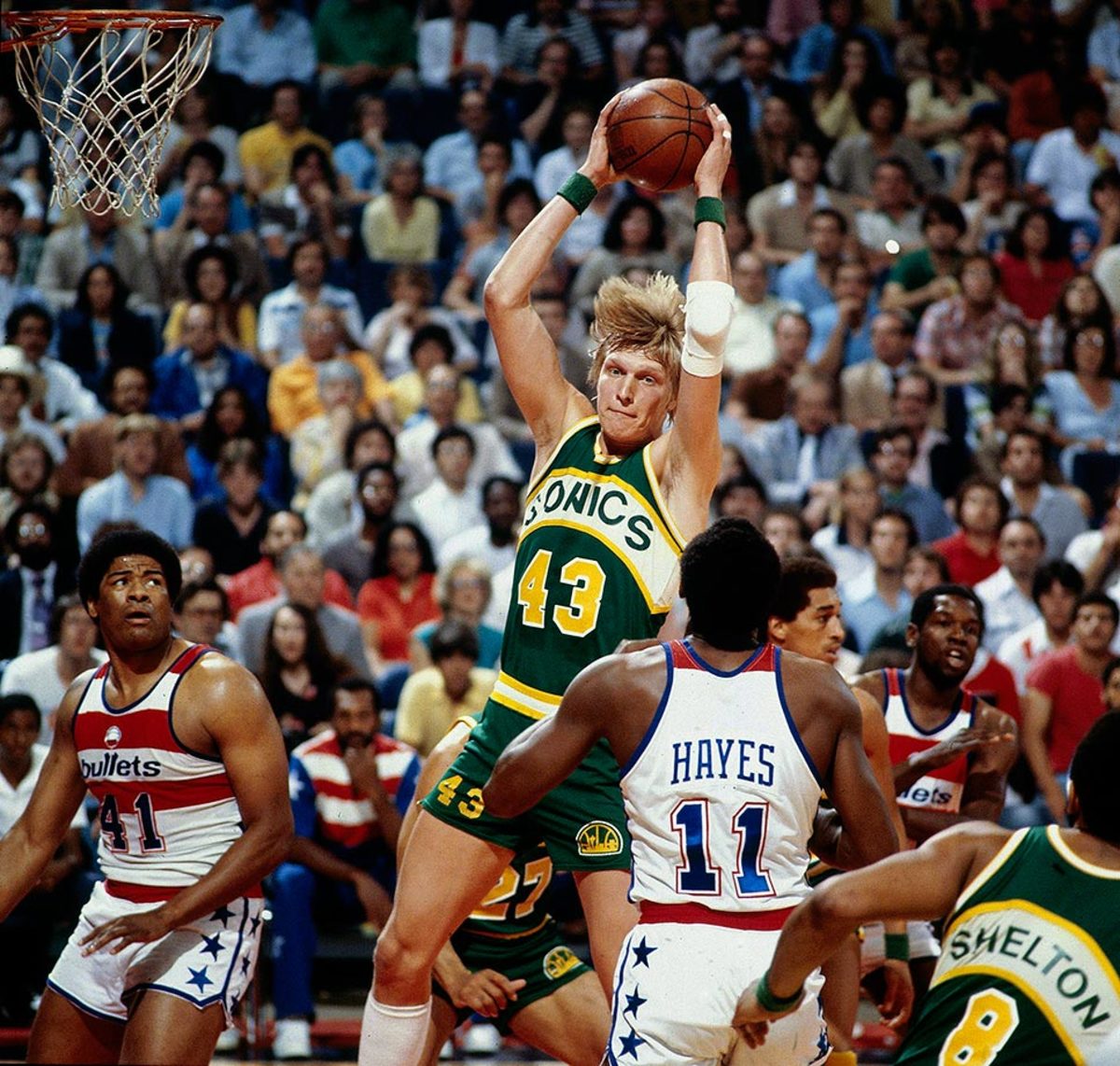
At just 23 years old, Sikma helped the Seattle Supersonics claim their only championship in franchise history, averaging 14.8 points and 11.7 rebounds per game in the 1979 postseason. A seven-time All-Star, Sikma ranks 30th all-time in NBA history in career total rebounds. — Runner-up: Brad Daugherty
44 — Jerry West
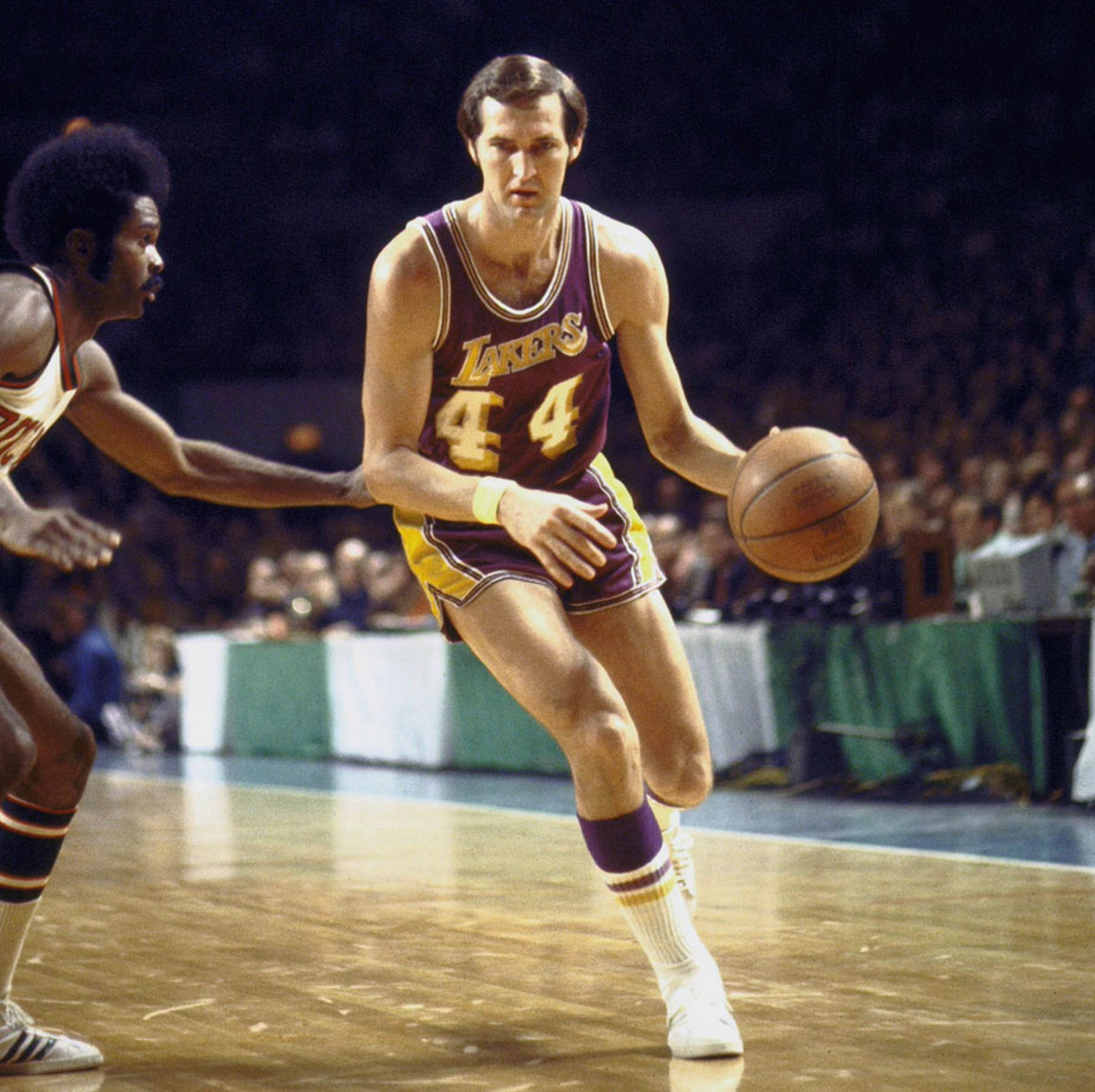
He’s on the NBA logo and forever etched into its history as a player and executive. Jerry West was a 14-time All-Star and 1972 NBA champion, and lost in the historic romanticism and his efforts in the Lakers’ front office is the fact that he straight up put the ball in the basket. With an average of 27 points per game over 14 seasons, all before the advent of the three point line, West’s transcendence as a player is tough to argue against. — Runner-up: George Gervin
45 — Rudy Tomjanovic
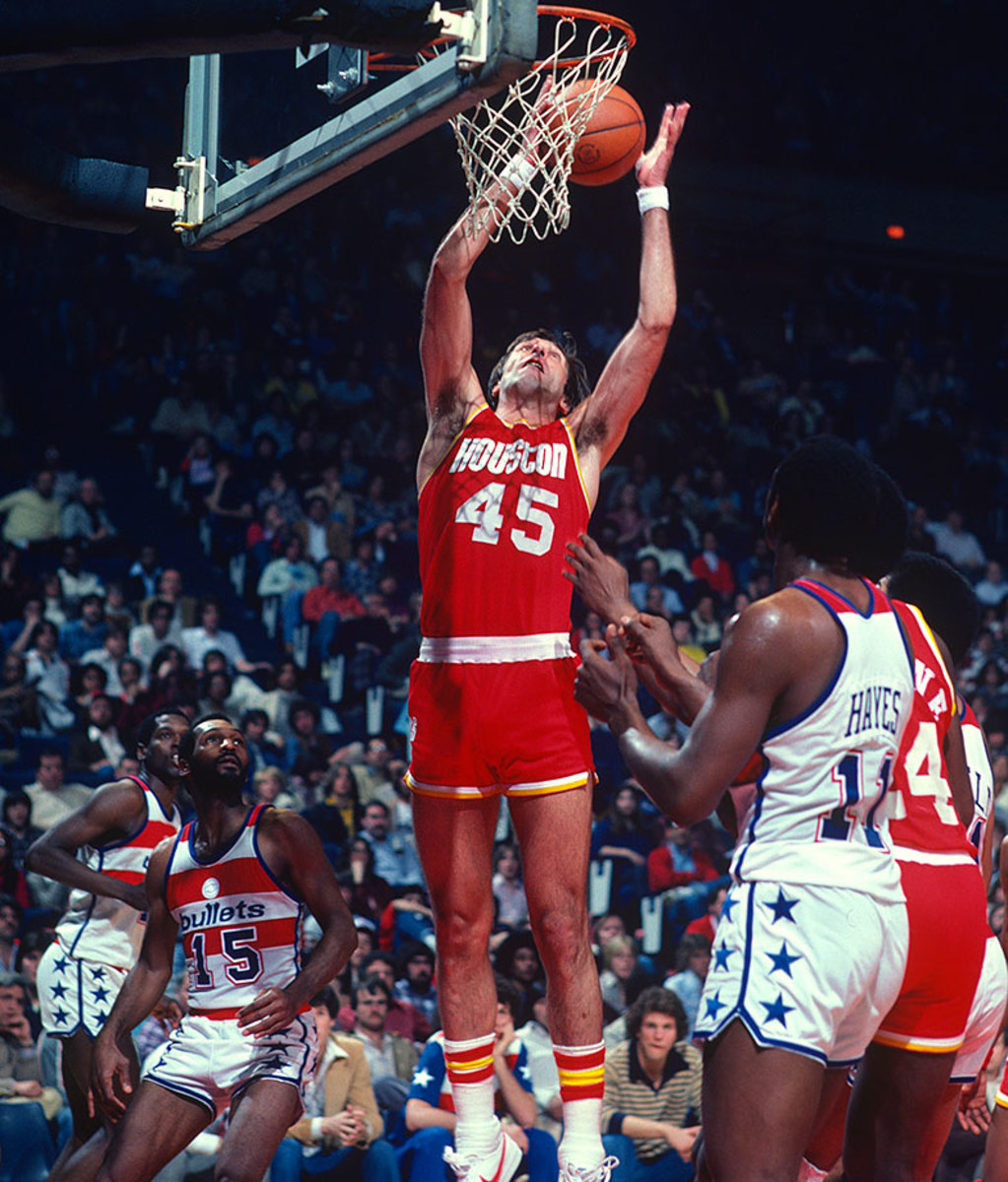
The No. 2 overall pick in the 1970 NBA draft, Rudy Tomjanovic is the third leading scorer in Rockets franchise history behind only Calvin Murphy and Hakeem Olajuwon. A five-time All-Star, Tomjanovic’s last name was so long, the back of his jersey often read, “Rudy T.” — Runner-up: A.C. Green
46 — Bo Outlaw
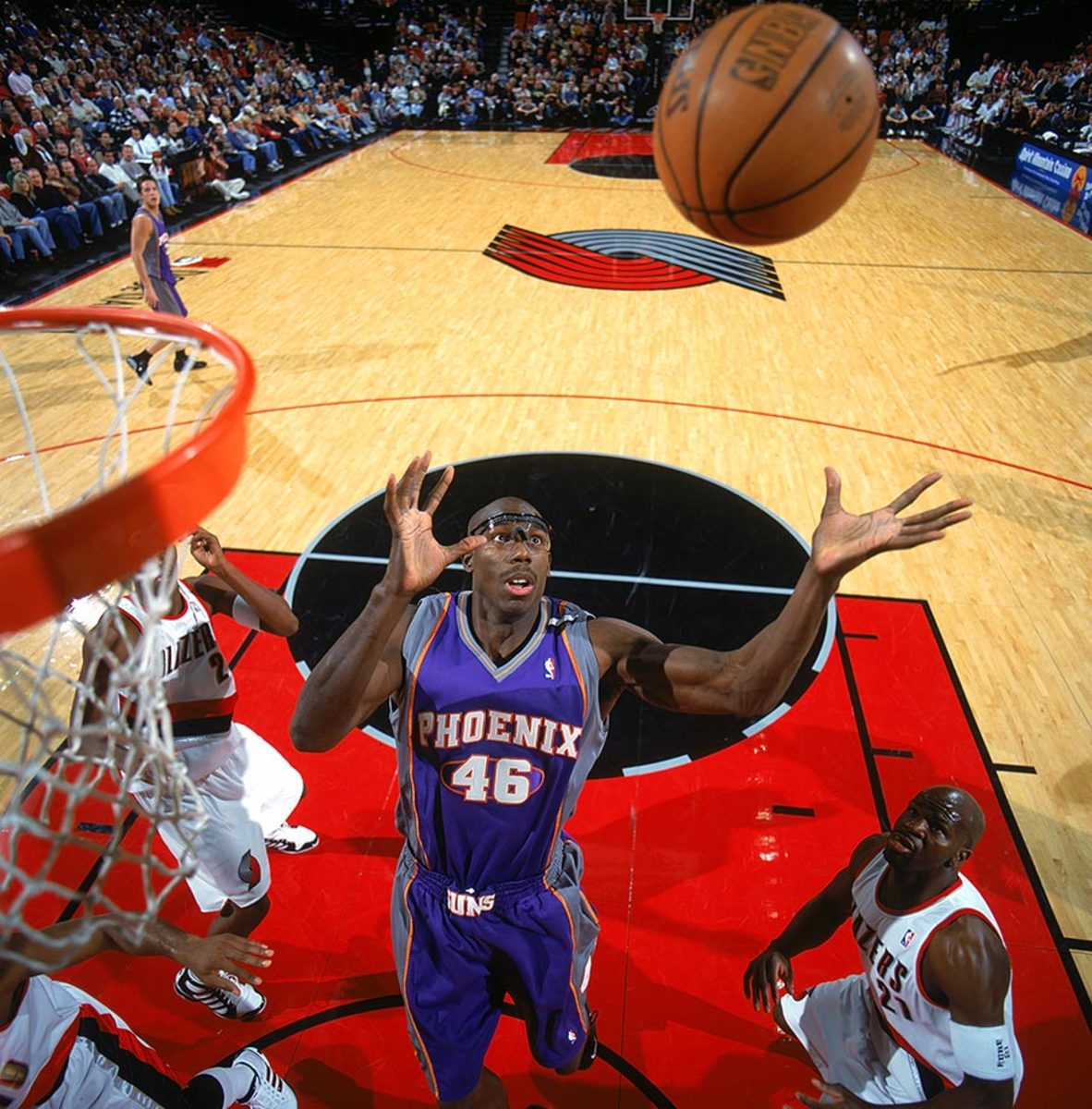
A terrific athlete, tough defender and abysmal free-throw shooter, Outlaw carved out a long career for himself despite an uninspiring statistical profile. His game peaked in 1998, with 25 points, 13 rebounds and 10 assists in a win as a member of the Magic. A reporter asked him how he felt about his triple-double, which led to Outlaw’s famous reply: “What’s that? Some kind of hamburger?”
47 — Andrei Kirilenko
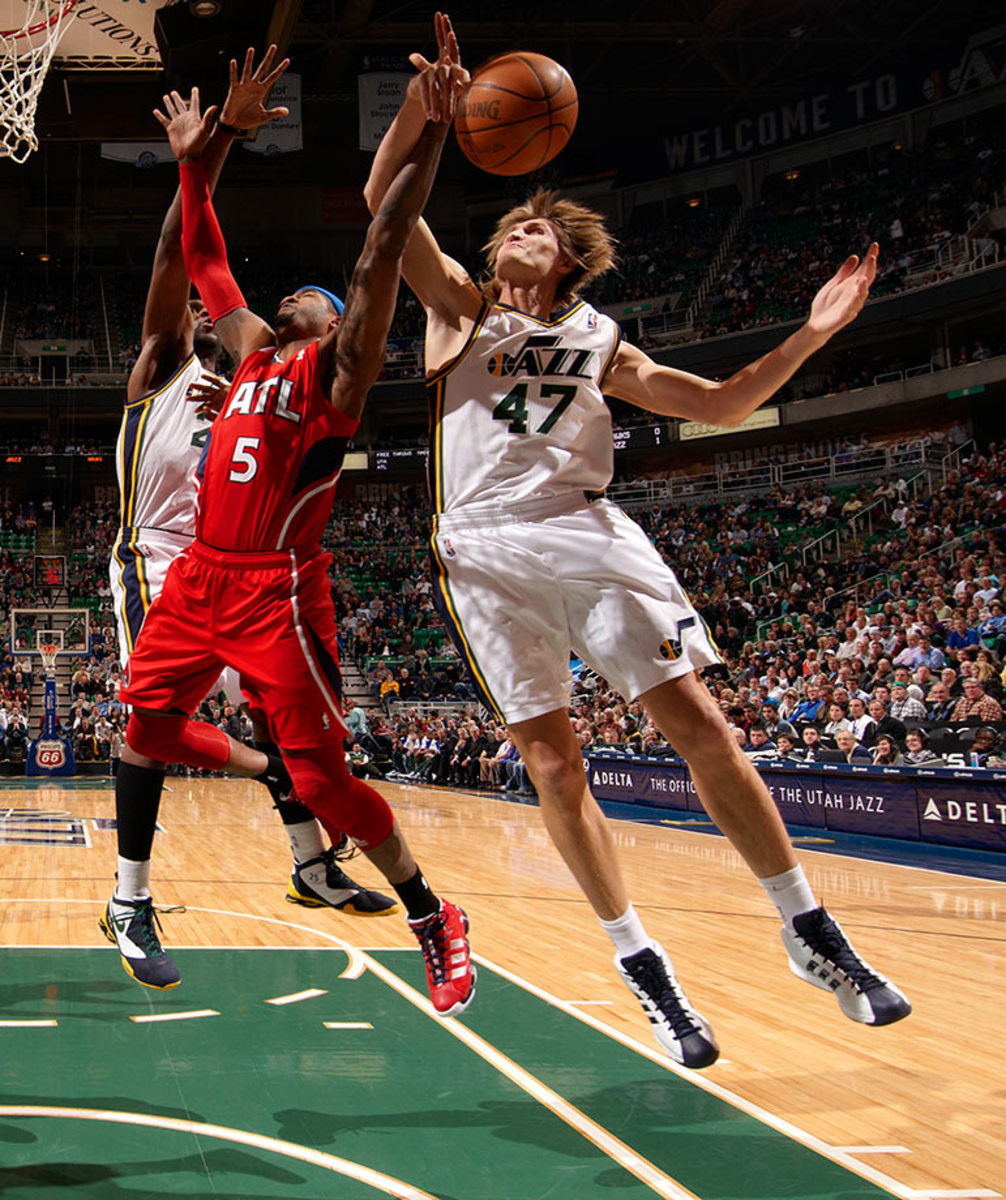
In 2001, Kirilenko joined the Jazz after Utah made him the first Russian player drafted in NBA history in 1999. Kirilenko was named an All-Star in 2004 and was a three-time first-team All-Defense selection. Kirilenko was instrumental in Utah’s transition from John Stockton and Karl Malone to the Deron Williams and Carlos Boozer era. — Runner-up: Scott Williams
48 — Nazr Mohammed
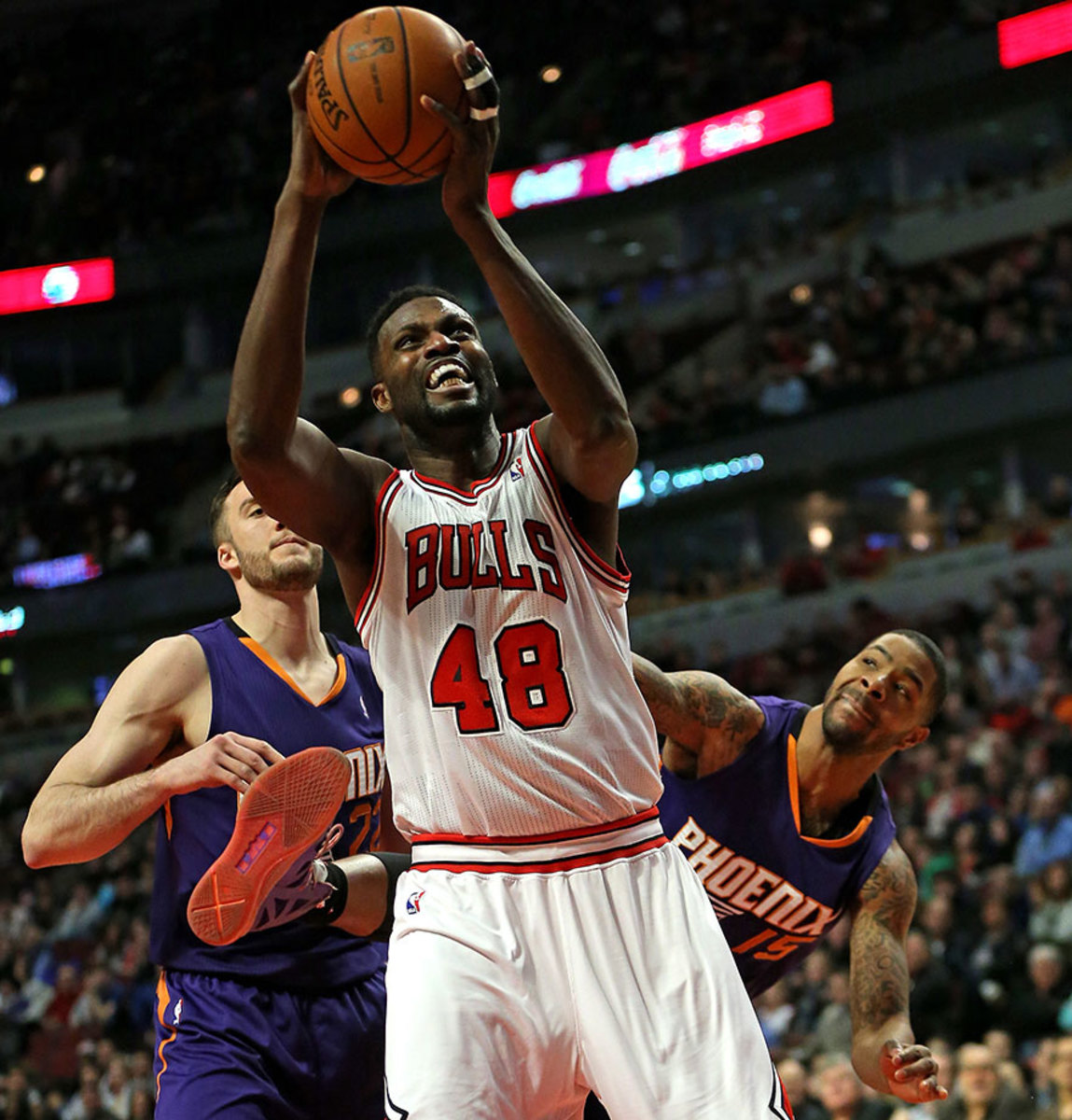
A career journeyman, Mohammed had serviceable years earlier in his career before seeing his playing time dwindle with age in Oklahoma City and now Chicago. He won a title in 2005 as a backup with the Spurs but peaked statistically as a Hawk in 2001-02, with 9.1 points and 7.9 boards per game.
49 — Shandon Anderson
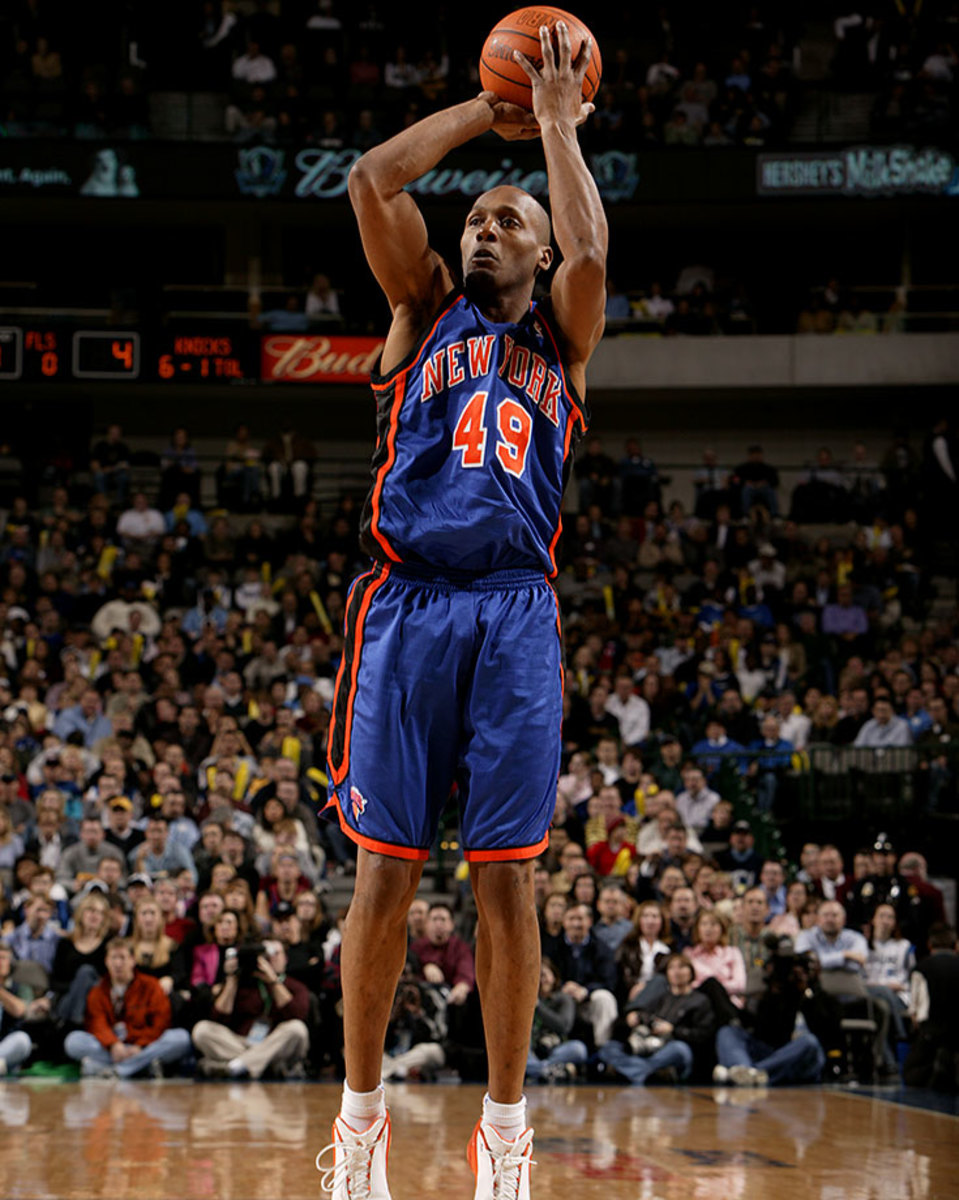
Anderson far exceeded expectations throughout his career after being drafted with the 54th pick in the 1996 NBA draft. In his 10-year career, Anderson’s best season came in 1999-2000, when he averaged 12.3 points, 4.7 rebounds and 2.9 assists per game for the Rockets. He was a reserve on the Heat’s 2006 championship team. — Runner-up: Mel McCants
50 — David Robinson

The Admiral was an incredible talent whose individual greatness occasionally gets lost because of the team-first nature of the Spurs’ dynasty and Tim Duncan’s sustained quality. Robinson was part of the Spurs’ first two championships (1999 and 2003), teaming with Tim Duncan to lay the groundwork for what was to come. But a young Robinson could carry a team, make no mistake about it: he averaged 29.8 points and 10.7 rebounds in 1994 and averaged 21.1 points for his career. — Runners-up: Steve Mix, Ralph Sampson, Zach Randolph
51 — Reggie King
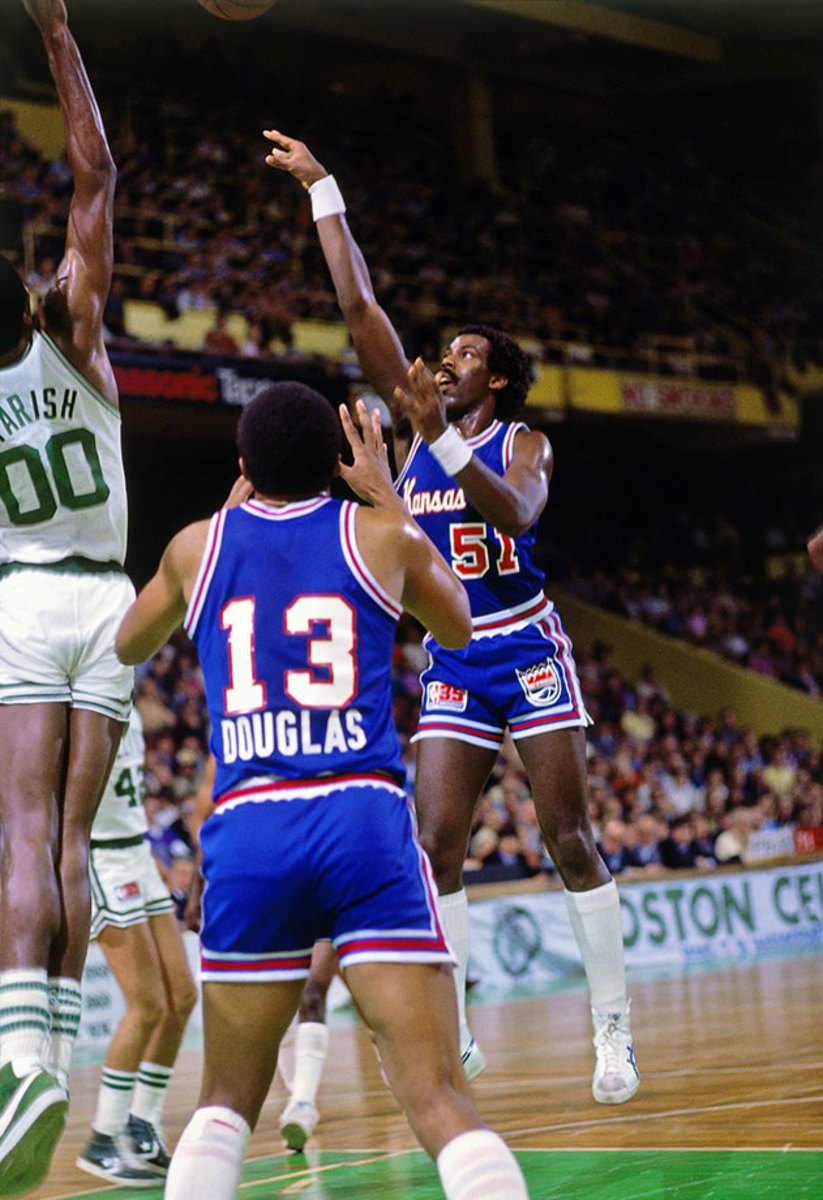
The 18th overall pick in the 1979 NBA draft, King played four seasons for Kansas City before finishing his career for two years in Seattle. During his second year with the Kings, in 1980-81, King posted his best season, averaging 14.9 points and 9.7 rebounds and shot 54.% from the field. — Runner-up: Lawrence Funderburke
52 — Jamaal Wilkes
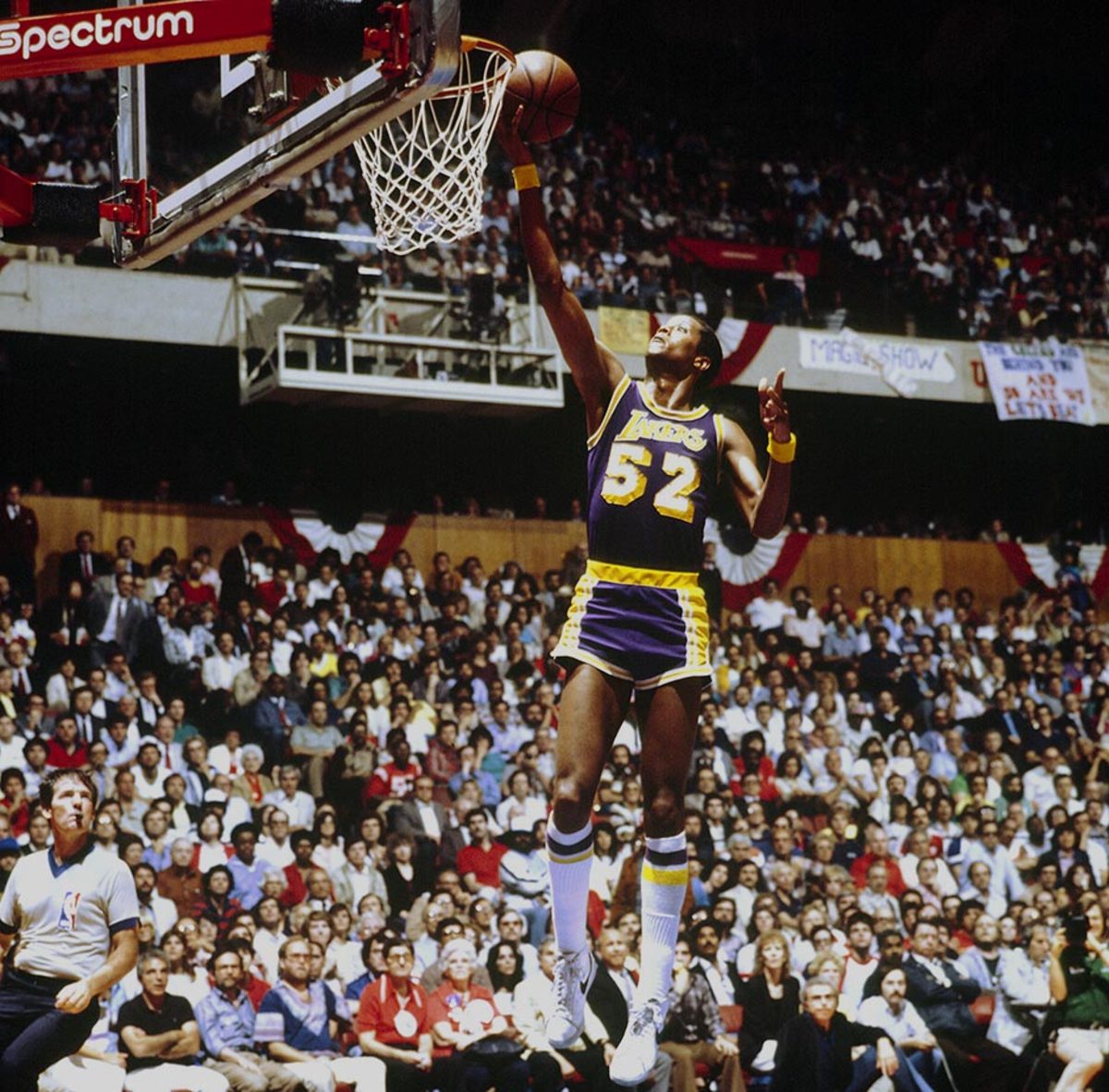
Overshadowed by star teammates but statistically impressive, Wilkes was a key player in the Lakers’ incredible run of success. He won Rookie of the Year as part of Golden State’s title team in 176, captured three titles with the “Showtime” Lakers and averaged 17.7 points and 6.2 rebounds for his career. There may not be a better metaphor for his career than this: he scored 37 points and 10 rebounds in 1980’s Game 6 to clinch the Finals, which happened to be the same game Magic famously started for Kareem at center and finished with 42 points, 15 rebounds and seven assists.
53 — Artis Gilmore
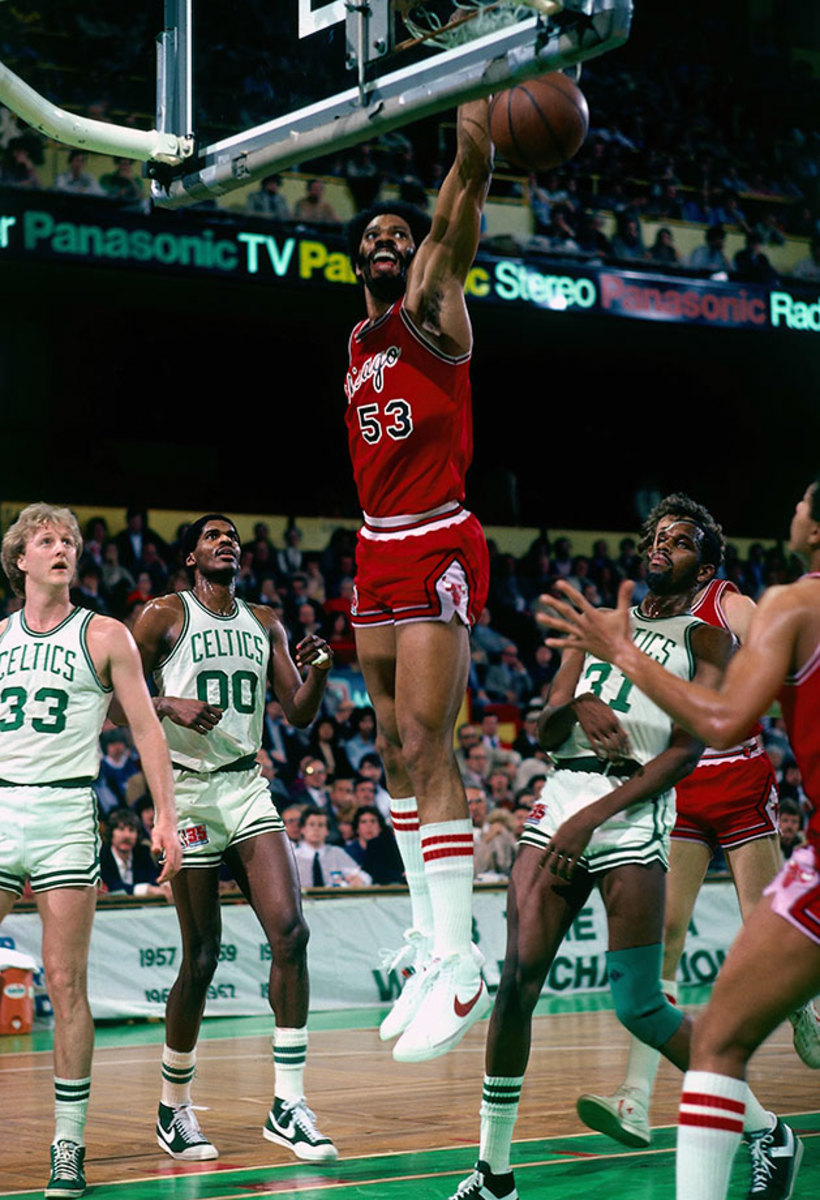
Still the NCAA’s all-time leader in rebounds per game, Gilmore made five All-Star appearances in the ABA. The Chicago Bulls made Gilmore the No. 1 overall pick in the 1976 dispersal draft as part of the NBA-ABA merger. Gilmore appeared in six NBA All-Star games. He is still the NBA’s career leader in field goal percentage at 59.9%. — Runner-up: Darryl Dawkins
54 — Horace Grant
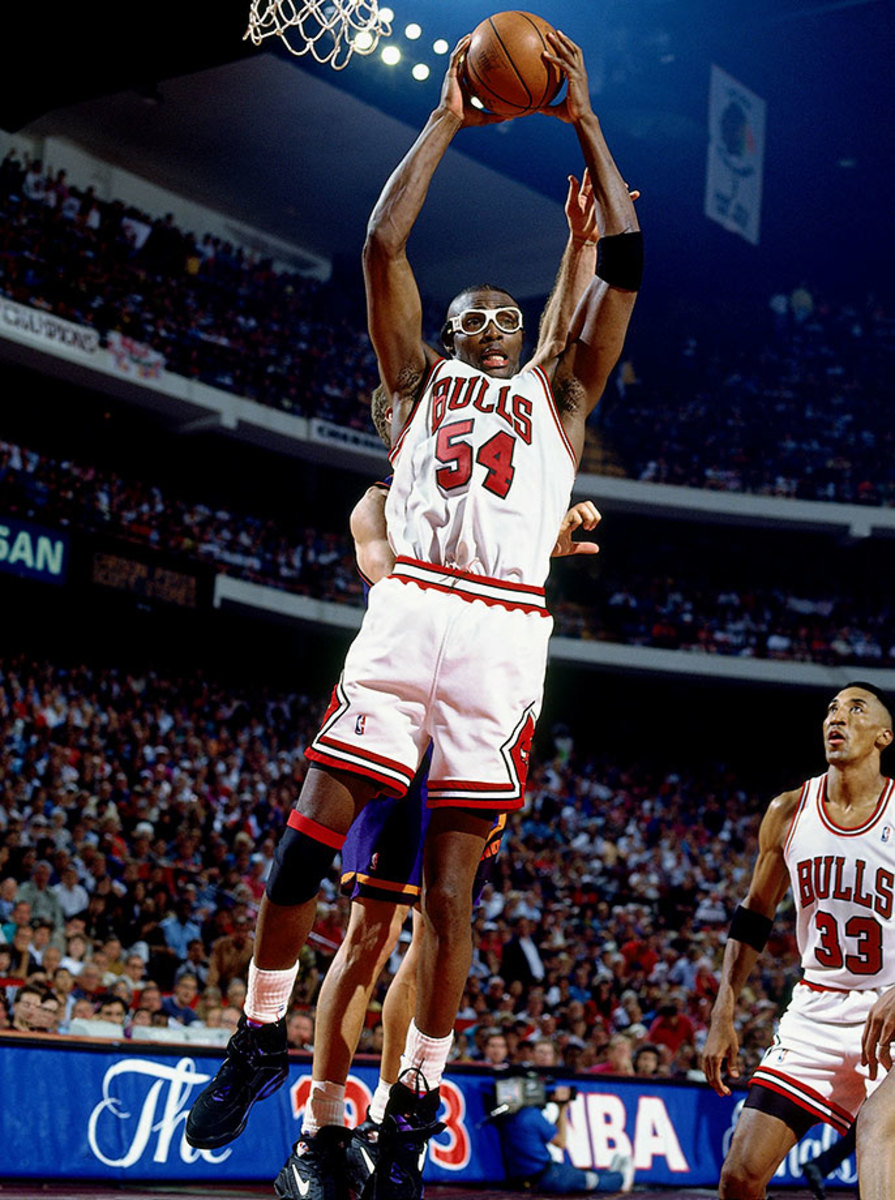
The Bulls drafted Grant five picks after Scottie Pippen in 1987, two moves that would greatly add to the cast around Michael Jordan and lead to Chicago’s first three-peat. Grant left the Bulls after an All-Star season in 1994. He never quite hit that peak again, but Grant was an effective two-way player and would earn another ring with the Lakers in 2001.
55 — Dikembe Mutombo
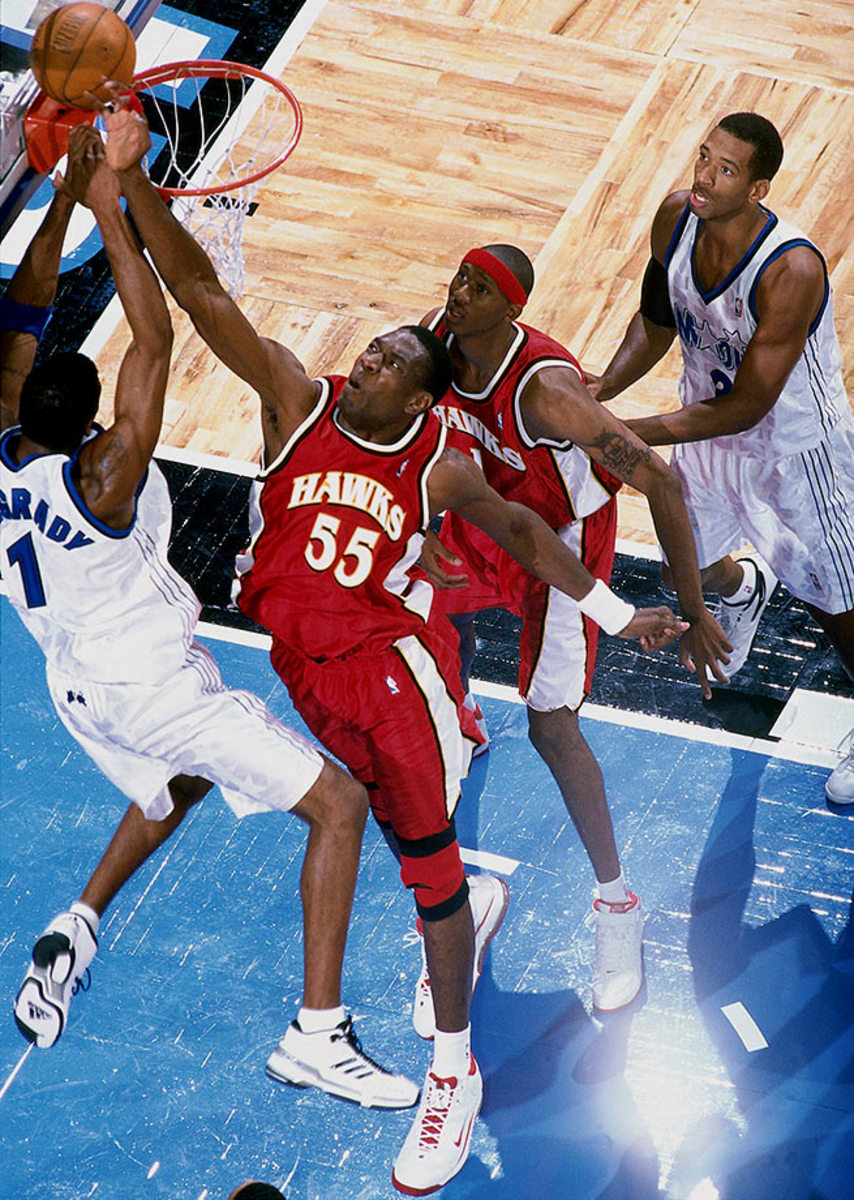
His full name, Dikembe Mutombo Mpolondo Mukamba Jean-Jacques Wamutombo, is almost as long as his stellar 18-year career. Mutombo ranks second all-time in NBA history in career blocks, was an eight-time All-Star and earned Defensive Player of the Year honors four times. He reached the playoffs in 13 seasons. — Runner-up: Kiki Vandeweghe
56 — Francisco Elson
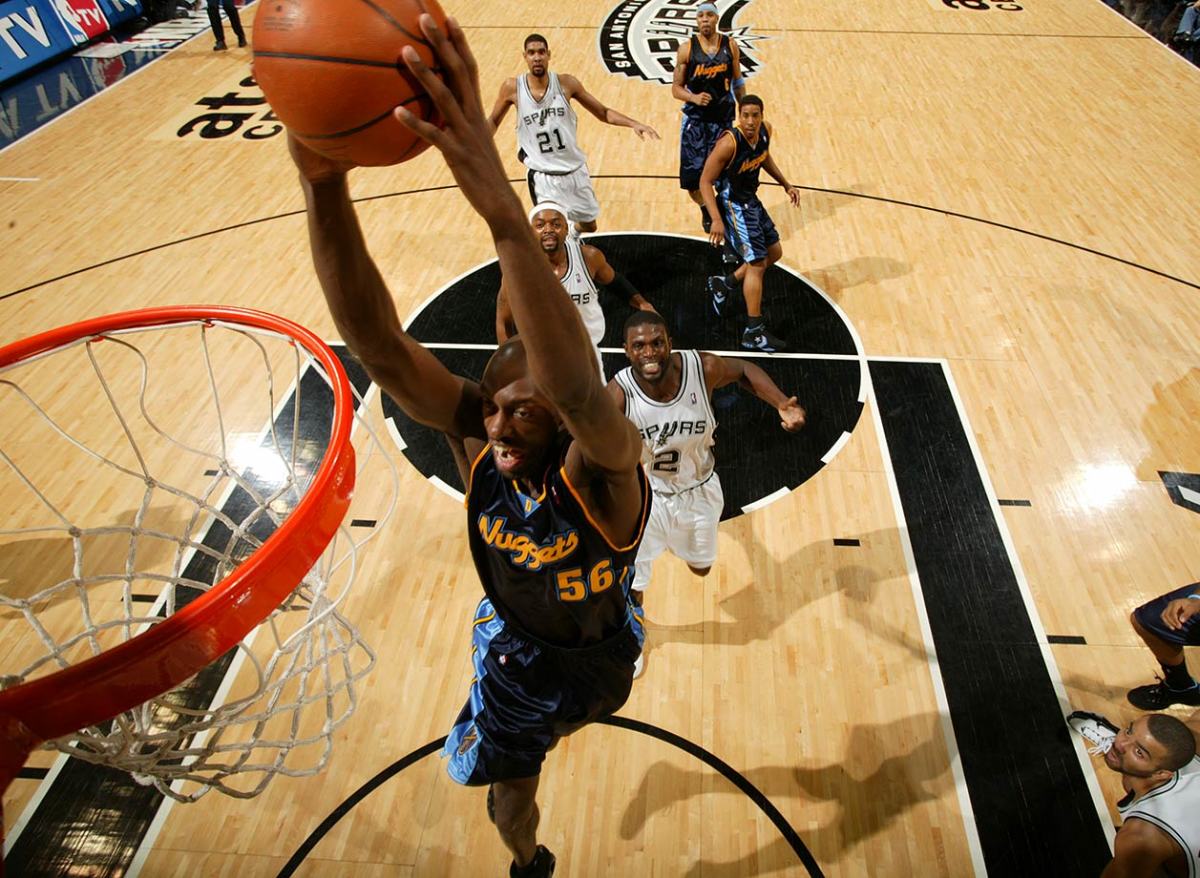
Hailing from the Netherlands, Elson was a second-round pick who would never make a major impact at the NBA level. He did start 54 games for Denver in 2006 and gain some fame for scuffling with Kevin Garnett in the playoffs that year. He won a title with San Antonio in 2007, starting 41 games that season.
57 — Hilton Armstrong
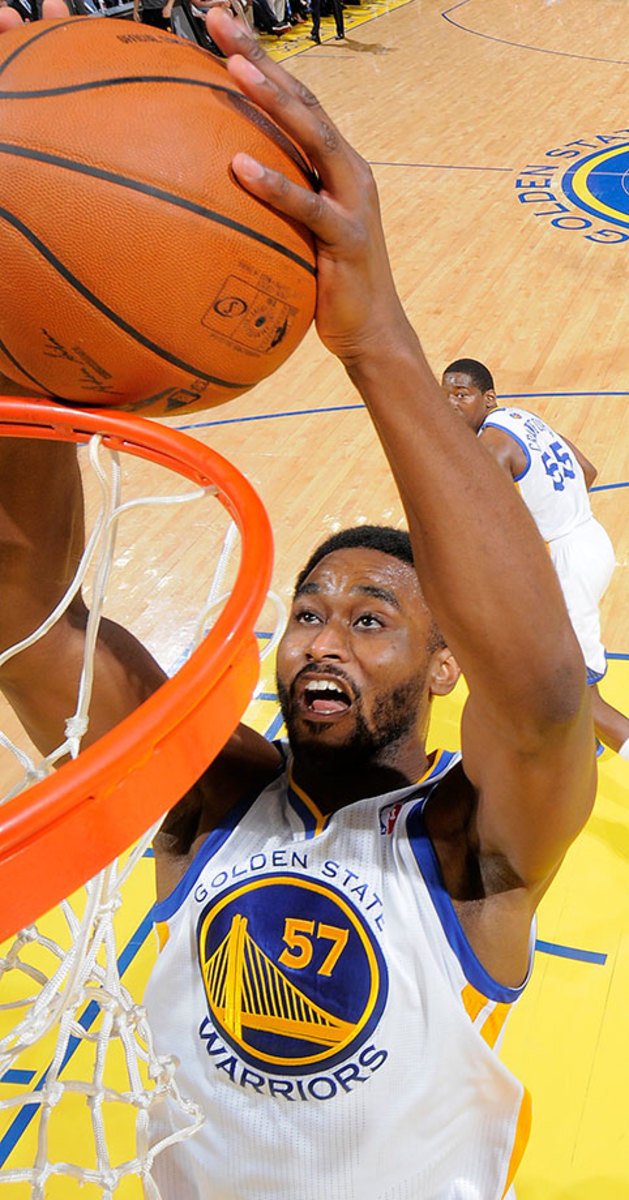
The UConn product and 12th overall pick in the 2006 NBA draft, Armstrong is the only player in NBA history to have worn #57. Armstrong donned the number in the 2013-14 season, in which he appeared in 15 games for the Golden State Warriors. Armstrong’s best year came in 2008-09, when he averaged 4.8 points and 2.8 rebounds for the New Orleans Hornets.
61 — Bevo Nordmann
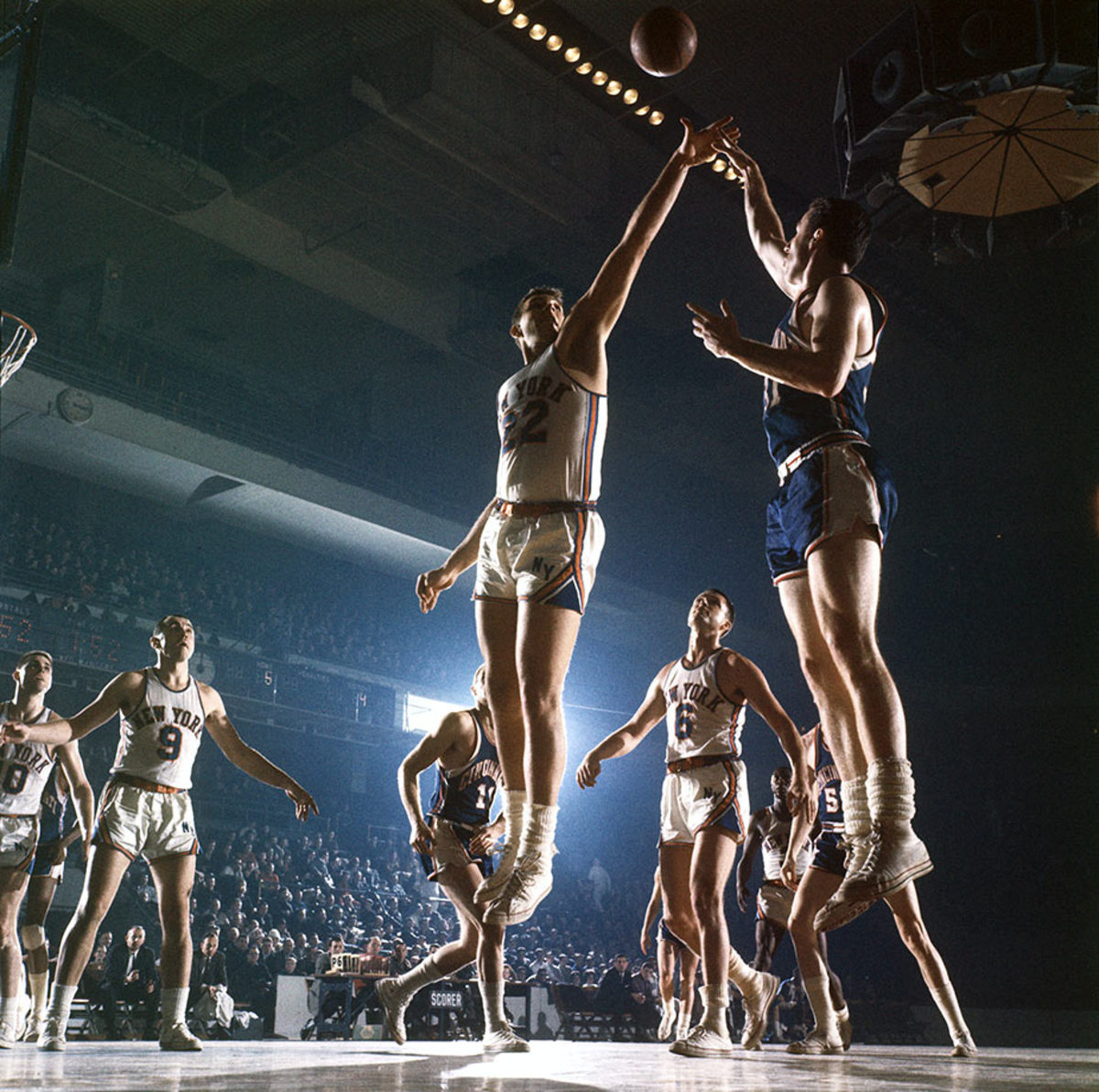
After the Cincinnati Royals selected him with the second pick in the third round of the 1961 NBA draft, Nordmann played just four seasons in the NBA. He wore No. 61 in his rookie season in 1961-62. Nordmann averaged 7 points and 6 rebounds for the St. Louis Hawks and New York Knicks (pictured here wearing No. 22) in the 1962-63 season. — Runner-up: Dave Piontek
62 — Scot Pollard
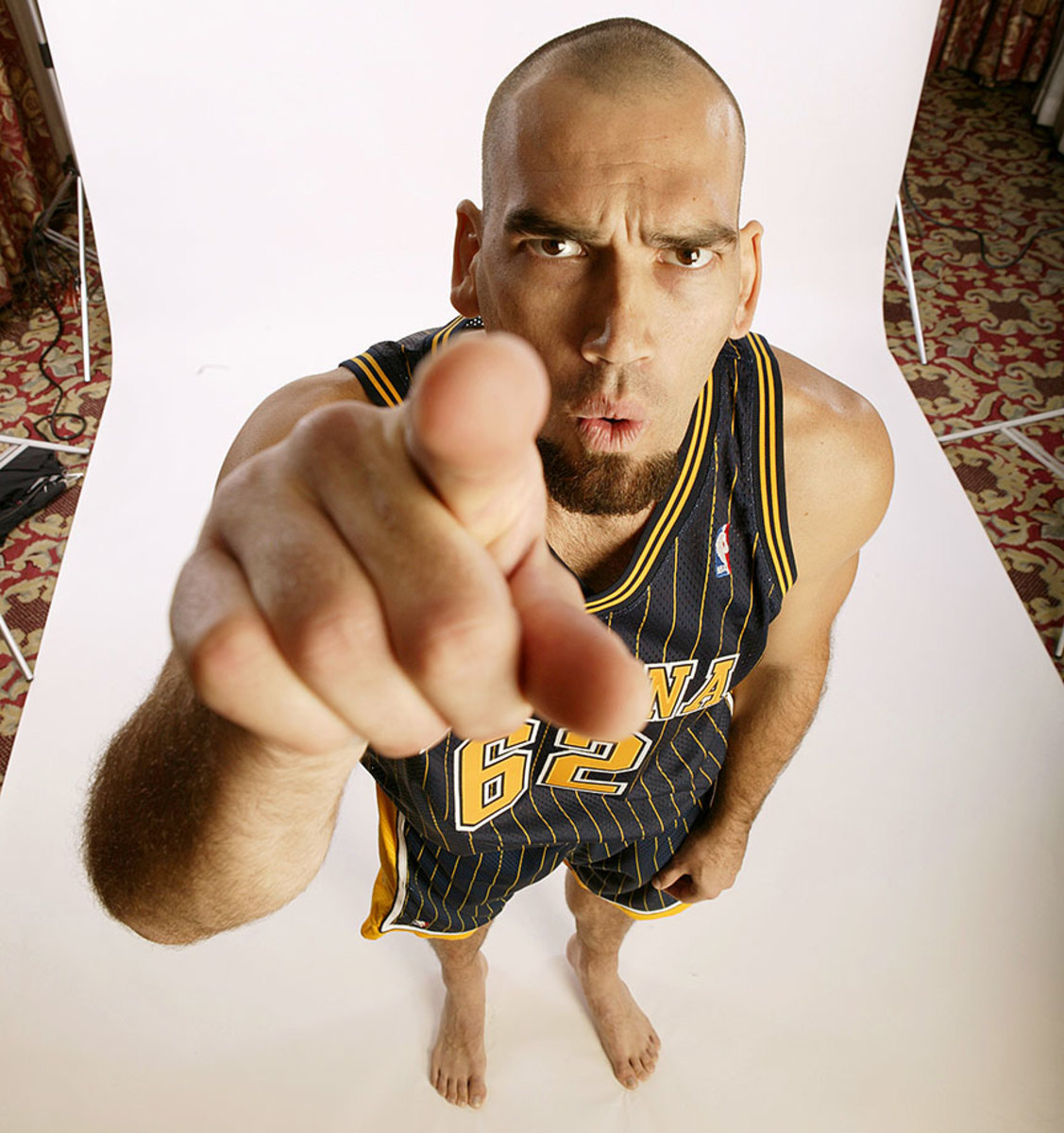
Pollard was notorious for his tough defensive play and variety of wild hairstyles, and not necessarily in that order. Still, he appeared in the playoffs in nine of his 11 seasons and made his greatest impact backing up Vlade Divac with the Kings in the early 2000s, occasionally filling in at power forward when Chris Webber was hurt.
70 — Frank Selvy
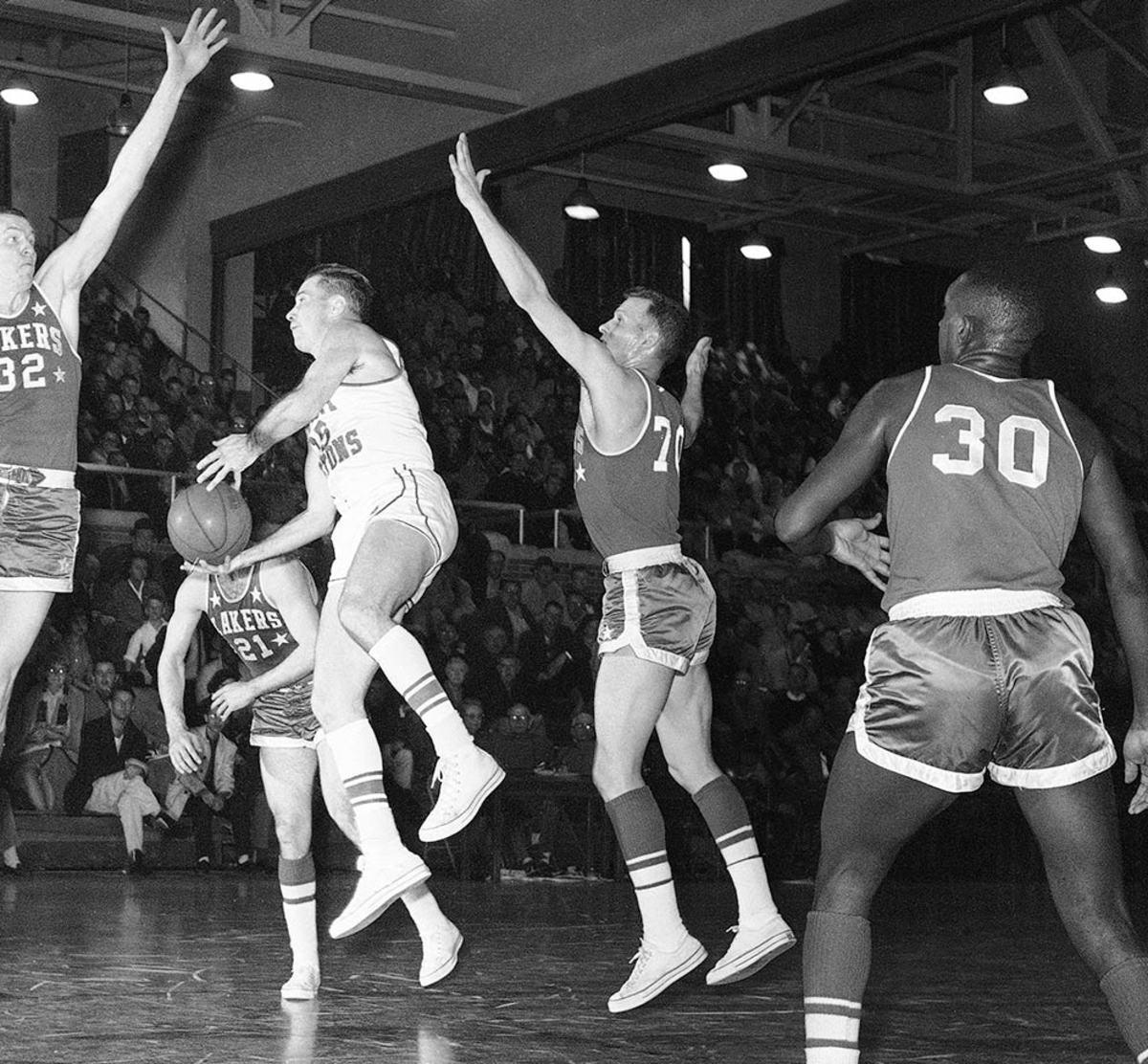
Selvy holds the NCAA Division I record for points in a game with 100 (yes, you read that right). He was the first overall pick in the 1954 NBA draft and averaged 10.8 points per game in ten seasons. Selvy was a two-time NBA All-Star and a teammate to Elgin Baylor and Jerry West with the Lakers.
71 — Willie Naulls
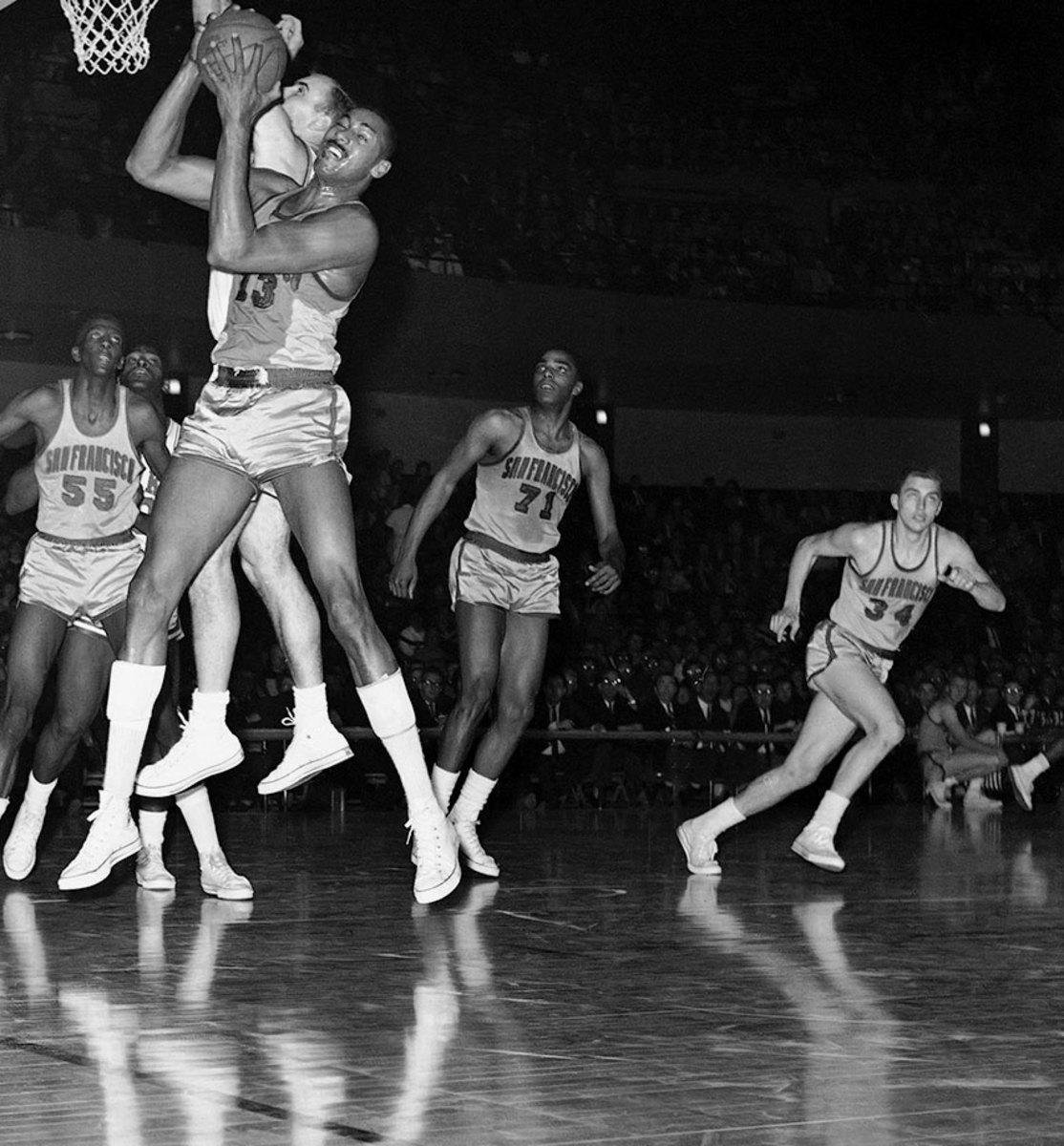
A four-time All-Star, Willie Naulls starred for the New York Knicks during the late 1950s and early 1960s. From 1959 to 1962, Naulls averaged over 20 points and 10 rebounds before game. He wore No. 71 for the Golden State Warriors for 47 games in the 1962-93 season after the Knicks traded him for Tom Gola. — Runners-up: McCoy McLemore, Bob Wiesenhahn
72 — Jason Kapono
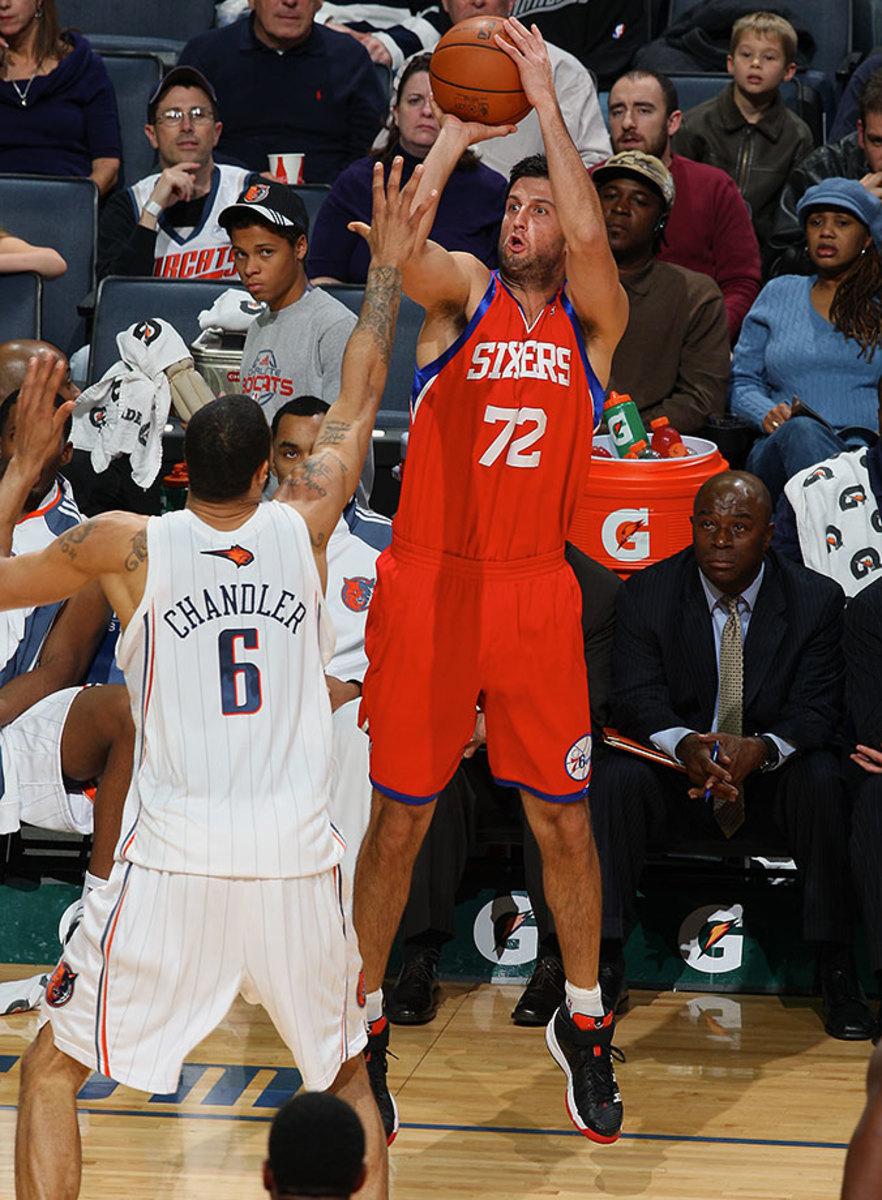
Kapono was the second-to-last pick of the 2003 NBA draft and had a relatively nice nine-year career as a role player known for his shooting ability. He led the league in three-point percentage with a 51.4% clip in 2006-07 as a member of the Heat, the year following Miami’s title win. He also outshot Dirk Nowitzki and Gilbert Arenas to win the shootout at All-Star weekend that year and would successfully defend that title in ‘08.. Kapono holds the distinction of blocking the first shot in Bobcats history as a member of Charlotte’s expansion roster.
73 — Dennis Rodman
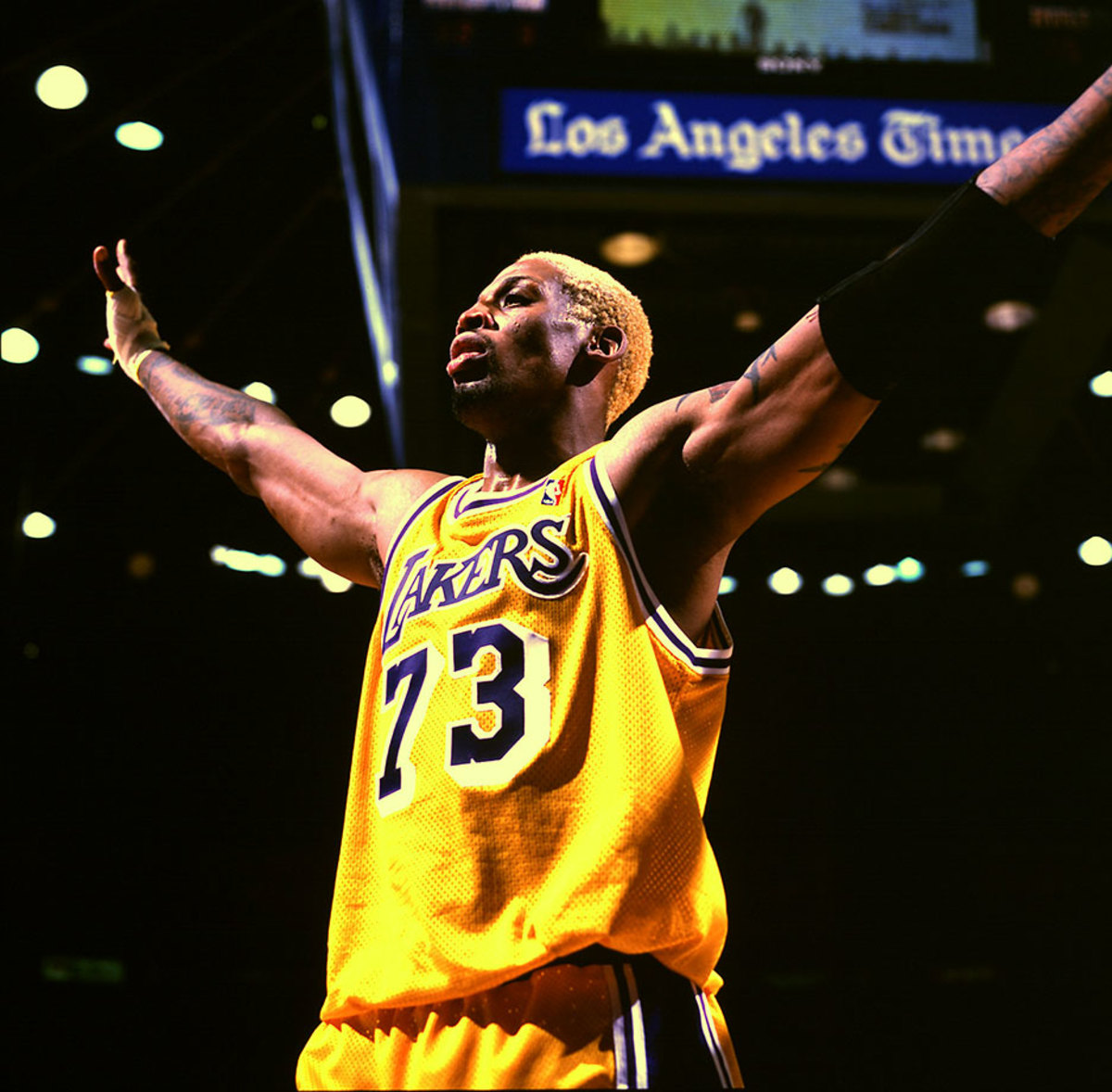
Rodman’s most famous for wearing No. 91, and is the only player to make this list twice, given he became the only player in NBA history to wear No. 73 when he suited up for the Los Angeles Lakers in the 1998-99 season. He’s a five-time NBA champion, winning two as a “Bad Boy” Piston and three with Jordan’s Bulls, and set an NBA record by leading the league in rebounding for seven straight seasons (1991-98).
76 — Shawn Bradley
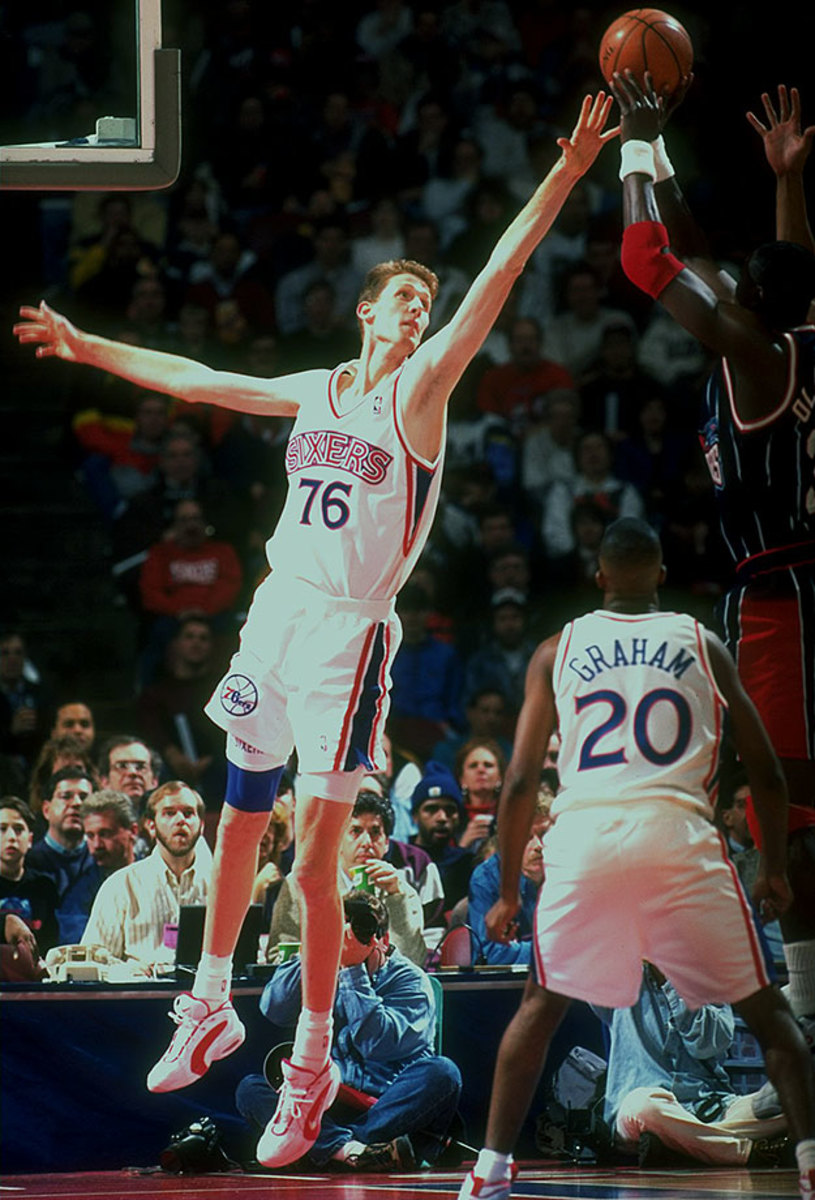
Standing 7’6”, Bradley’s height made him an NBA commodity and he enjoyed a solid career functioning primarily as one of the league’s best shot-blockers. He averaged three or more blocks per game in each of his first six seasons while also rebounding effectively and scoring when needed. Bradley also took a memorable turn as a supporting character in Space Jam.
77 — Gheorghe Muresan
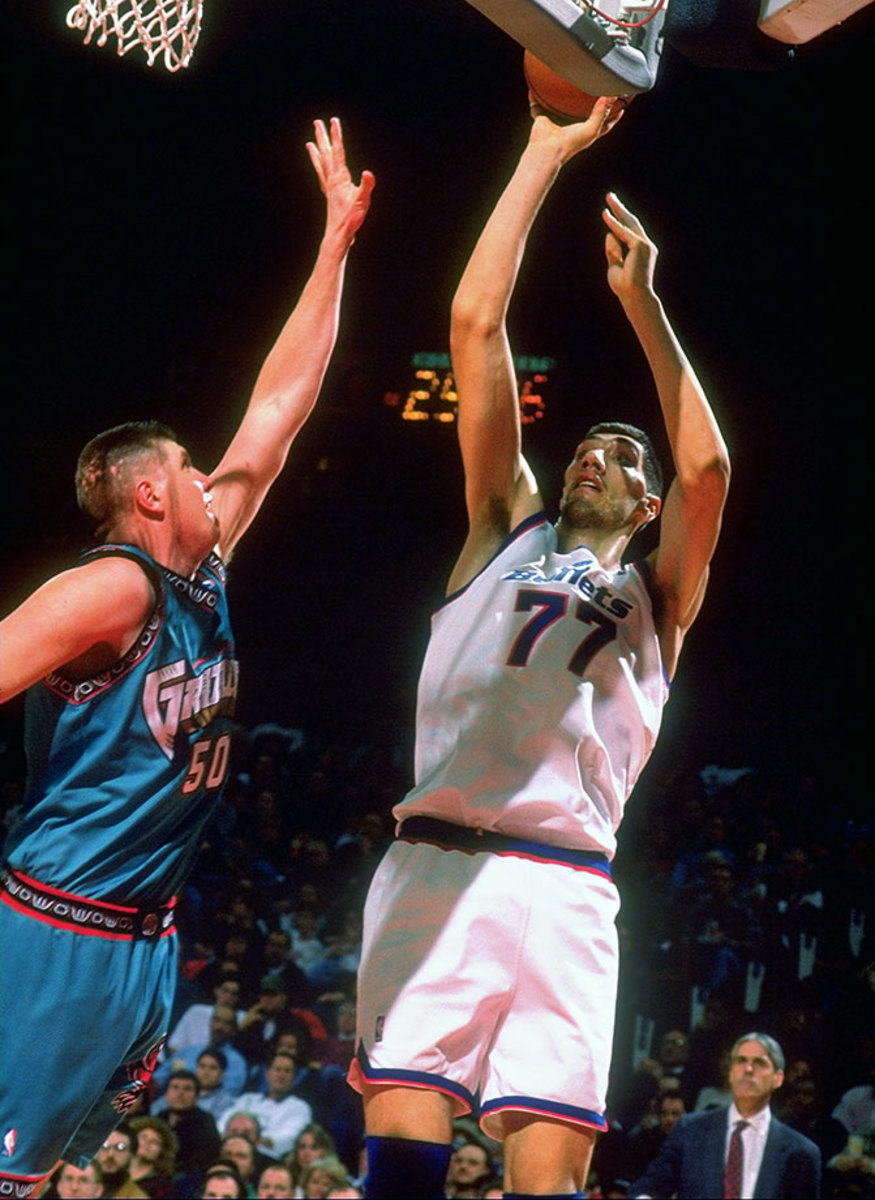
At 7’7”, Muresan is the tallest player in the NBA history, along with the late, great Manute Bol. Muresan earned the 1995-96 Most Improved Player award after averaging 14.5 points, 9.6 rebounds, 2.2 blocks per game while making a league-leading 58.4% of his field goals. — Runners-up: Vladimir Radmanovic, Jake Voskuhl
83 — Craig Smith
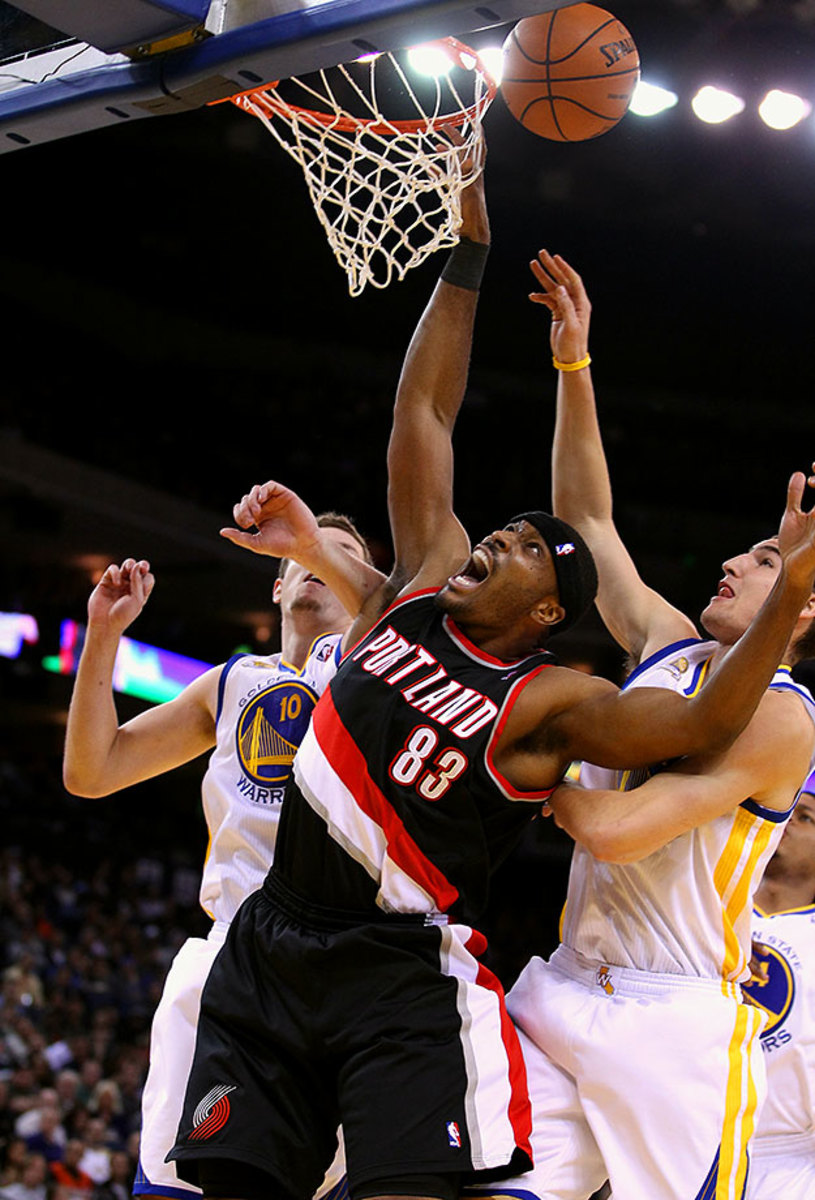
The 36th overall pick in the 2006 NBA draft, Smith is the only player to wear No. 83 in league history. Smith wore the number when he appeared in 47 games for Portland in the 2011-12 season. His best season came in 2008-09, when he averaged 10.1 points and 3.8 rebounds per game for Minnesota.
84 — Chris Webber
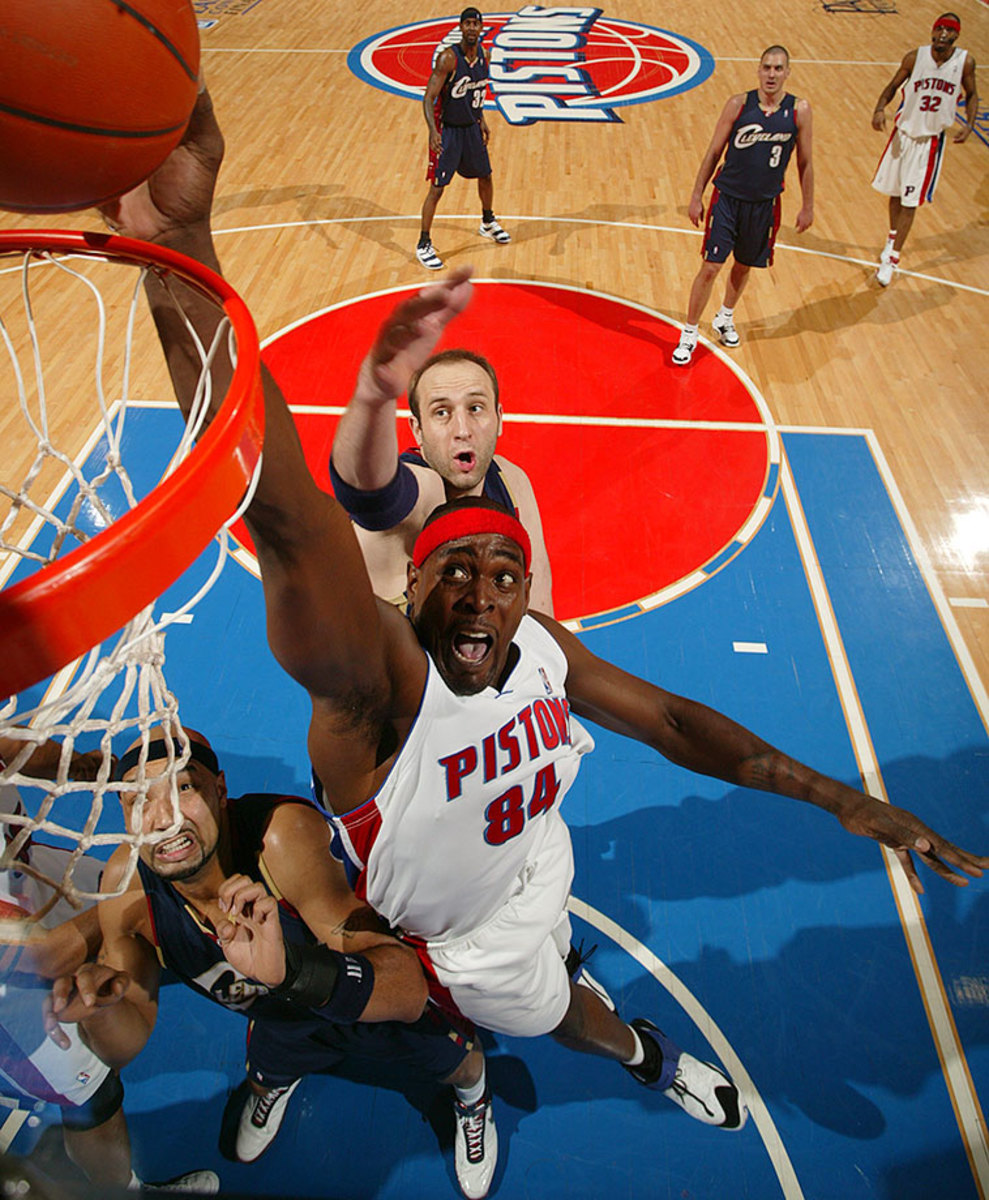
C-Webb only donned No. 84 after his prime, in his lone part of a season with Detroit after being traded in 2007. But Chris Webber was a dominant force before a serious knee injury in the 2003 playoffs, one of the NBA’s best post passers and dynamic power forwards. He was a five-time All-Star, averaging 20.7 points and 9.8 rebounds in 15 seasons. But the hopes of the entertaining Kings teams of the early 2000s went down when Webber did, and he would retire without a title to his name.
85 — Baron Davis
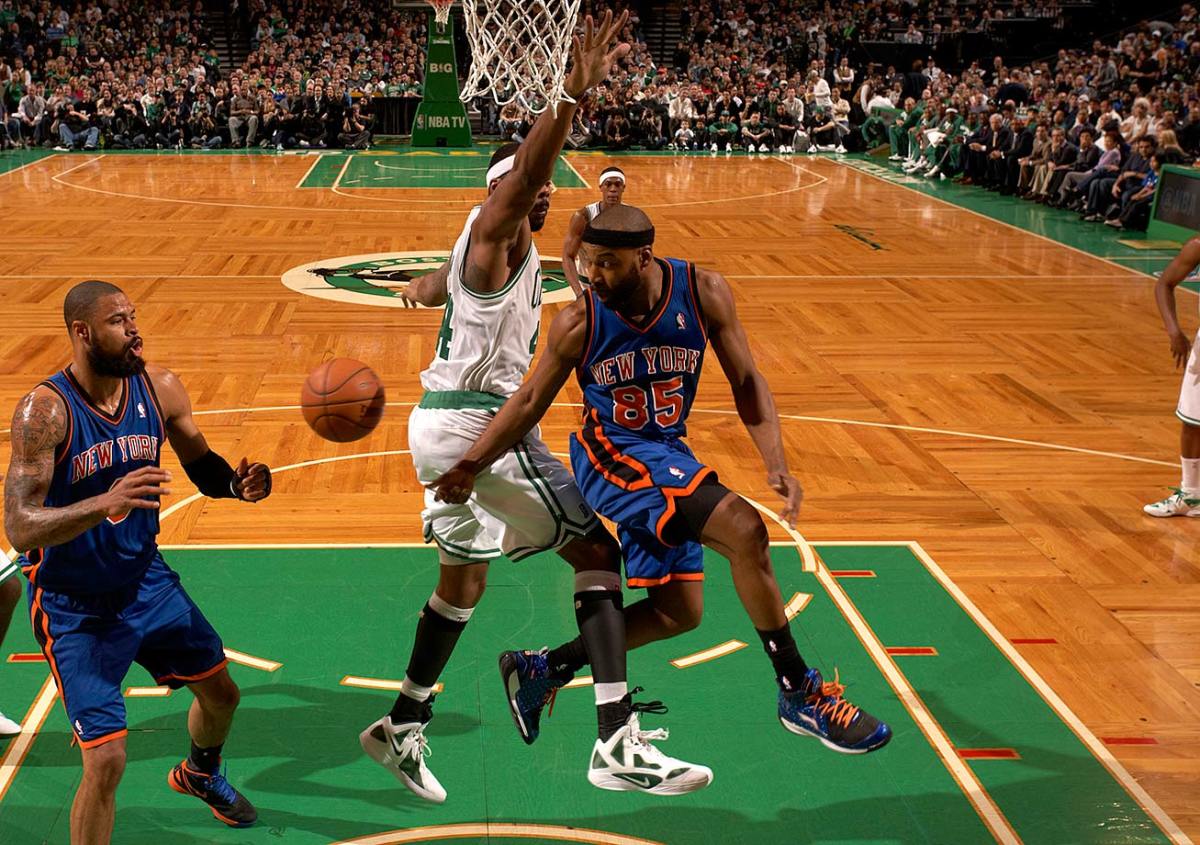
After the Hornets selected him third overall in the 1999 NBA draft, Davis became a two-time All-Star. He most notably led the eight-seeded Warriors to a 4-2 first round upset of the top-seeded Mavericks. He’s the only player in NBA history to wear No. 85, doing so for both the Cavaliers and Knicks.
86 — Semih Erden
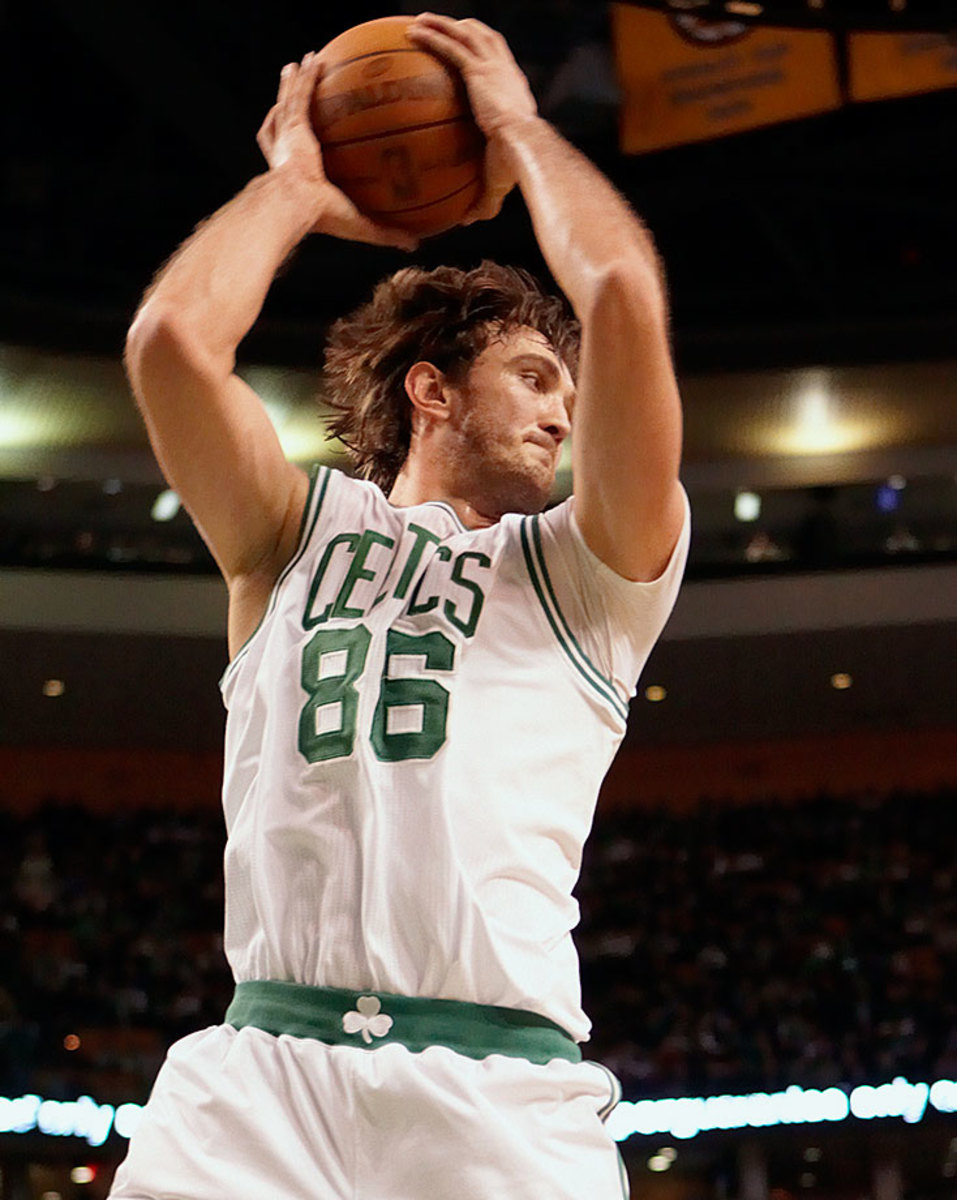
Erden, a 7-foot Turkish center, played three NBA seasons and played in just 69 games. He started nine games for the Cavaliers in 2011-12 and headed back overseas the next season, playing in his native country ever since. — Runner-up: Chris Johnson
88 — Nicolas Batum
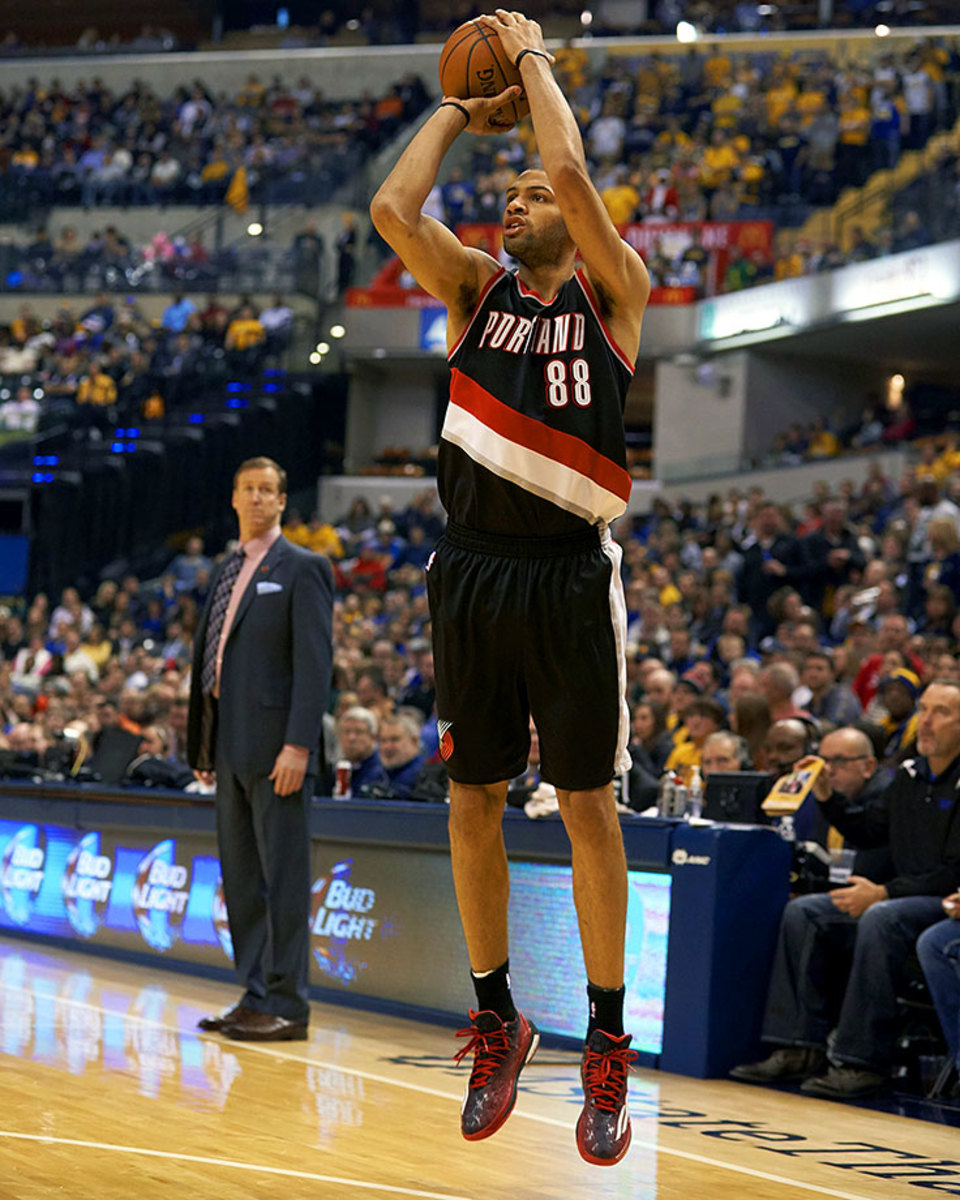
Batum, a late first-round pick, was traded to Portland from Houston for the rights to Darrell Arthur and Joey Dorsey on draft day 2008. His career’s been solid, with a well-rounded game and good size and ball skills. But 2012-13 was a highlight year for Batum, when he averaged 14.3 points, 5.6 rebounds and 4.9 assists. The Frenchman was traded to Charlotte in the off-season and will start fresh as a Hornet this fall. — Runner-up: Antoine Walker
89 — Clyde Lovellette
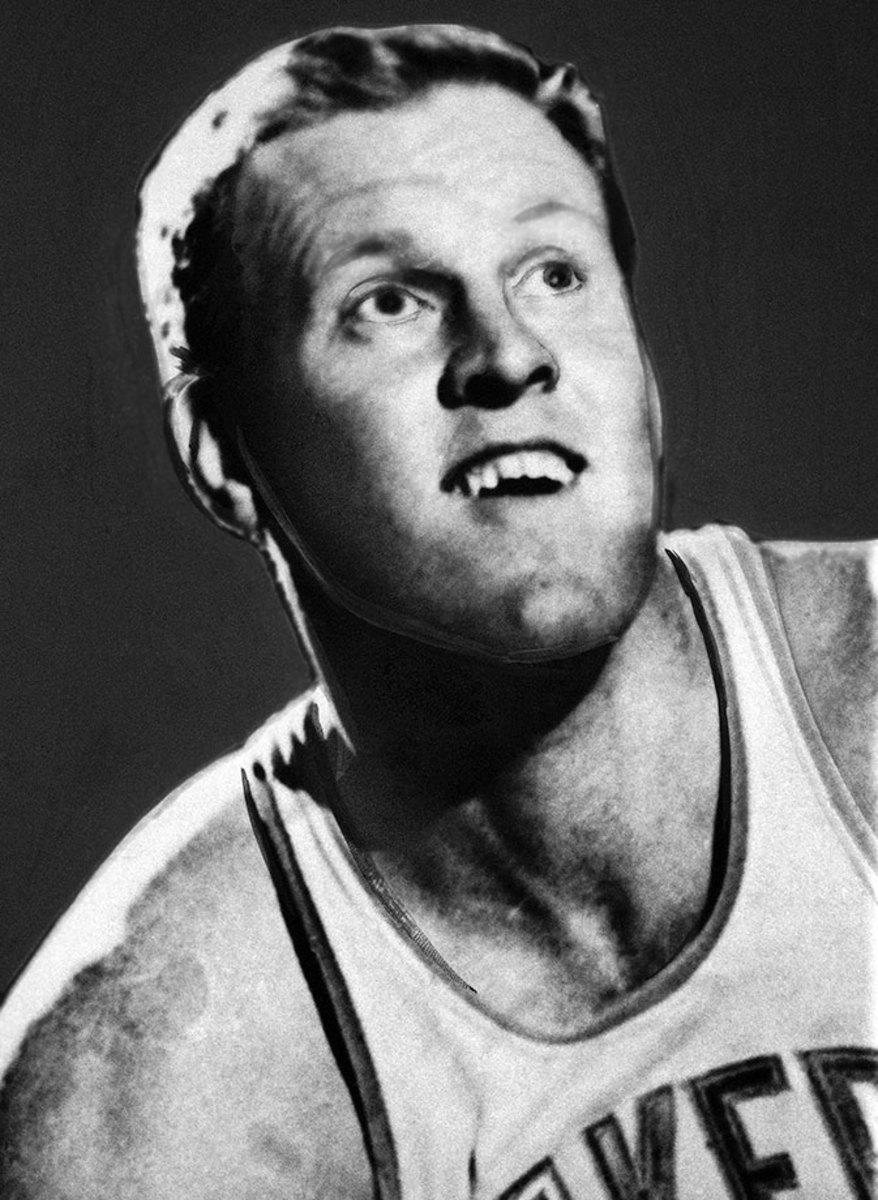
The ninth overall pick in the 1952 NBA draft, Lovellette wore No. 89 in his rookie season for the Minneapolis Lakers. A four-time All-Star, Lovellette averaged 17 points and 9.5 rebounds per game during his 11-year career. Lovellette was part of three NBA championship teams. — Runner-up: Louis Amundson
90 — Drew Gooden
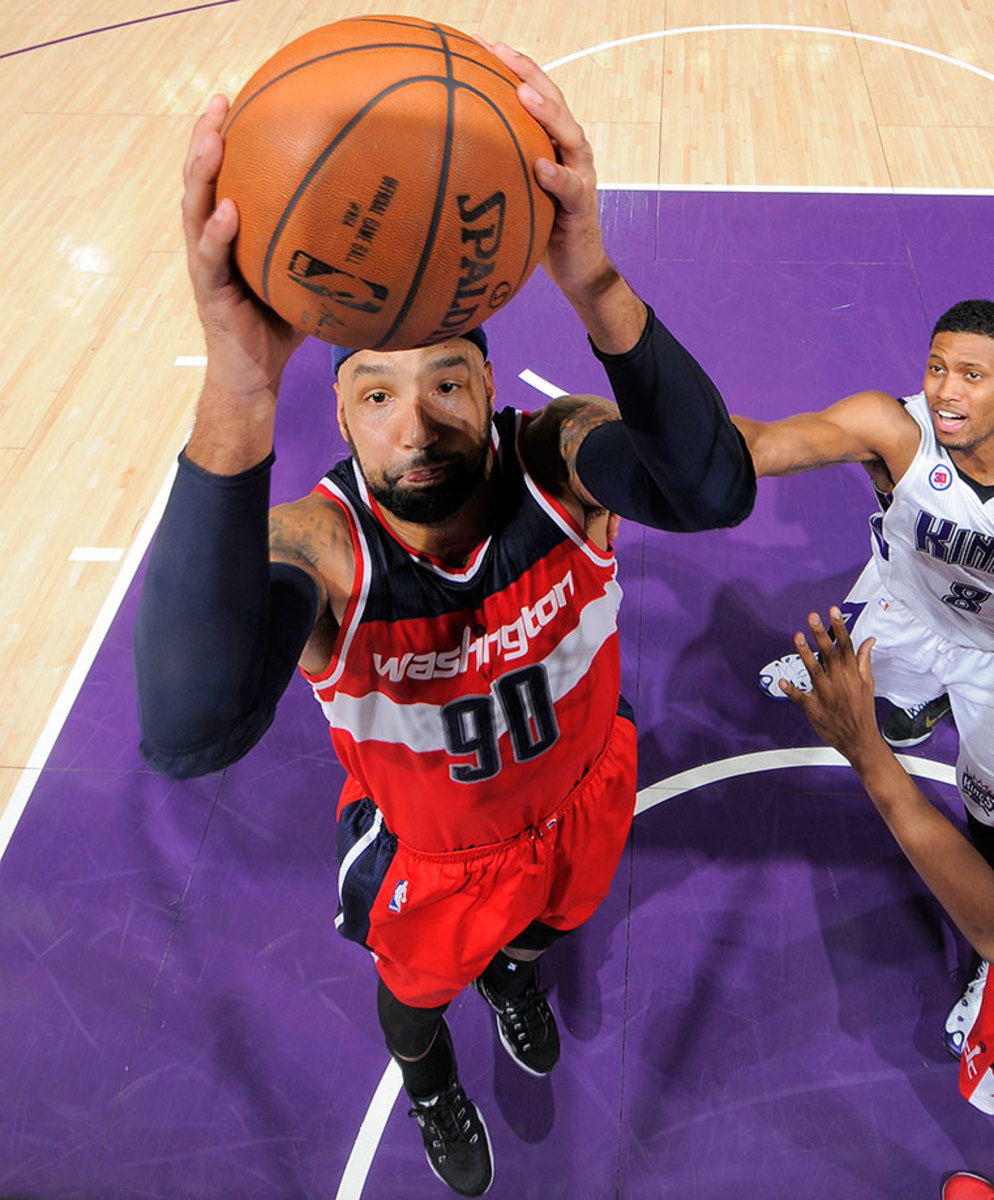
A number of NBA stops haven’t kept Gooden from posting decent production, though he has not quite justified his fourth overall selection in 2001. He came into a role with the Wizards last season and averaged double figures in scoring every season up until 2012.
91 — Dennis Rodman
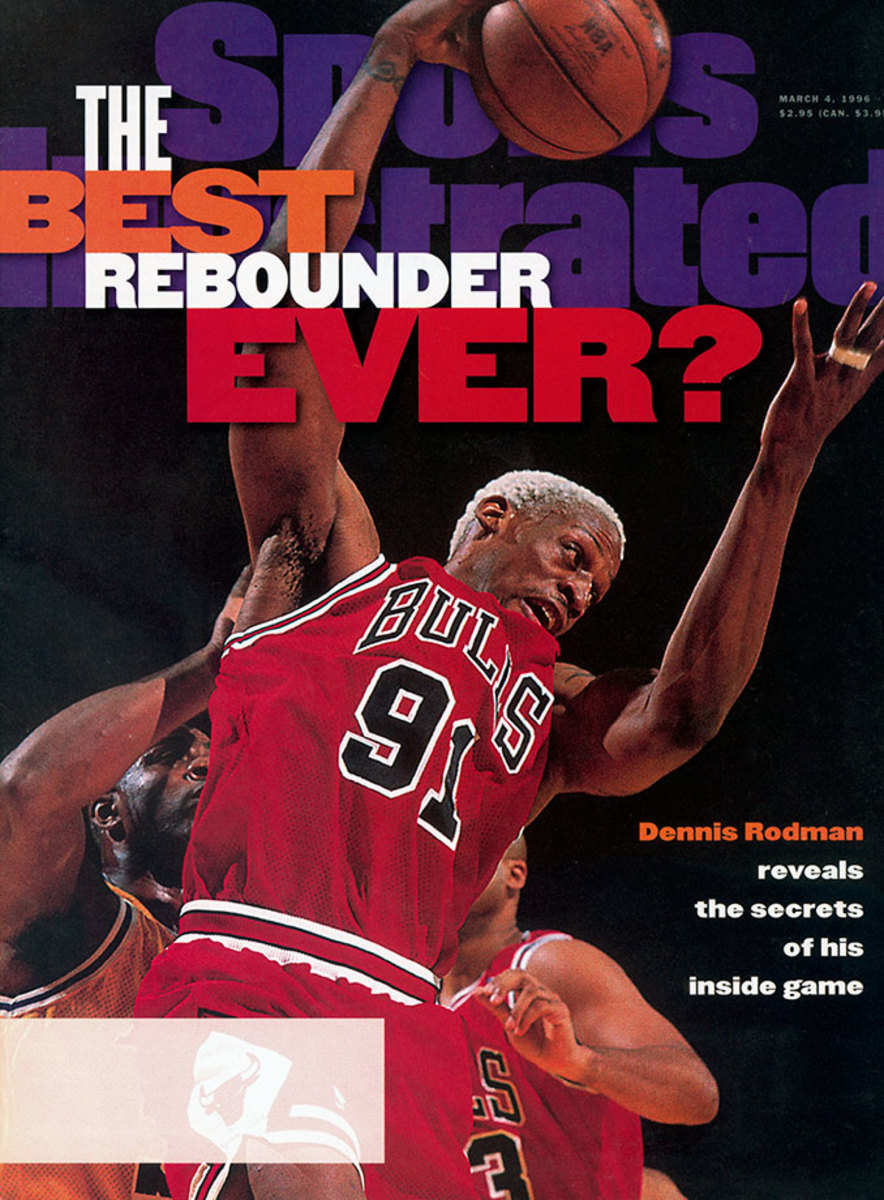
Rodman, appearing for the second time on this list, retired with a reputation as one of the NBA’s greatest rebounders ever, not to mention a strong defender and enormous off-court presence with a penchant for dying his hair on the regular. He won five titles, was Defensive Player of the Year twice, made seven All-Defensive first teams and two All-Star teams, and became one of America’s most polarizing athletes in the process.
92 — DeShawn Stevenson
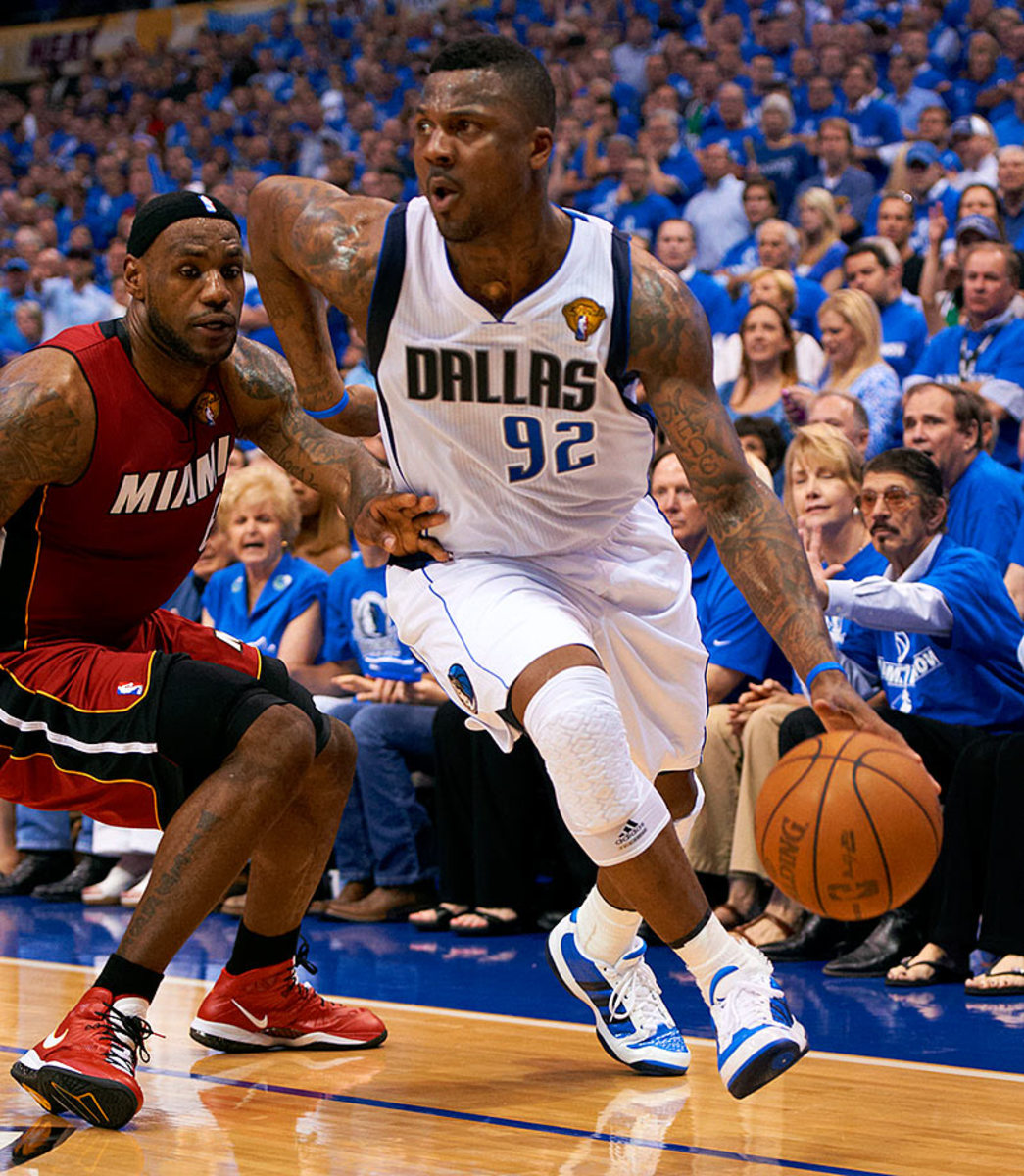
Stevenson never came close to his prep-star hype, but bounced around supplying average production much of his career. He had a moment for the Mavericks during their 2011 title run, famously proclaiming himself the “LeBron stopper.” And hey, Dallas topped Miami. For all we know, he still holds that title.
93 — Metta World Peace (Ron Artest)
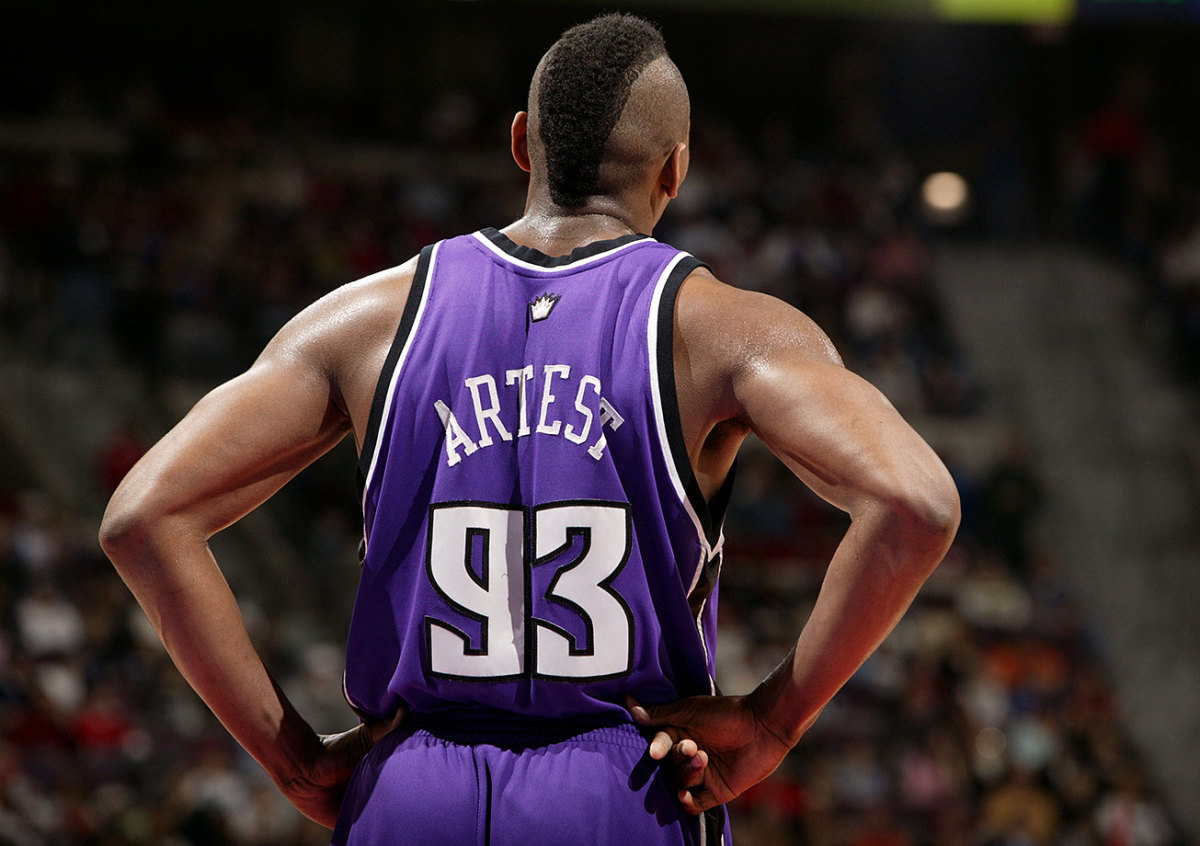
Before changing his name to Metta World Peace, Ron Artest wore No. 93 from 2006-08 with the Sacramento Kings. Artest donned seven different numbers in his career, and his personality and antics both on and off the court have overshadowed just how good he was in his prime. An elite, versatile defender for many years, Artest was averaging 24.6 points per game in 2005 before being suspended for the “Malice at the Palace” incident and missing the entire season.
94 — Evan Fournier
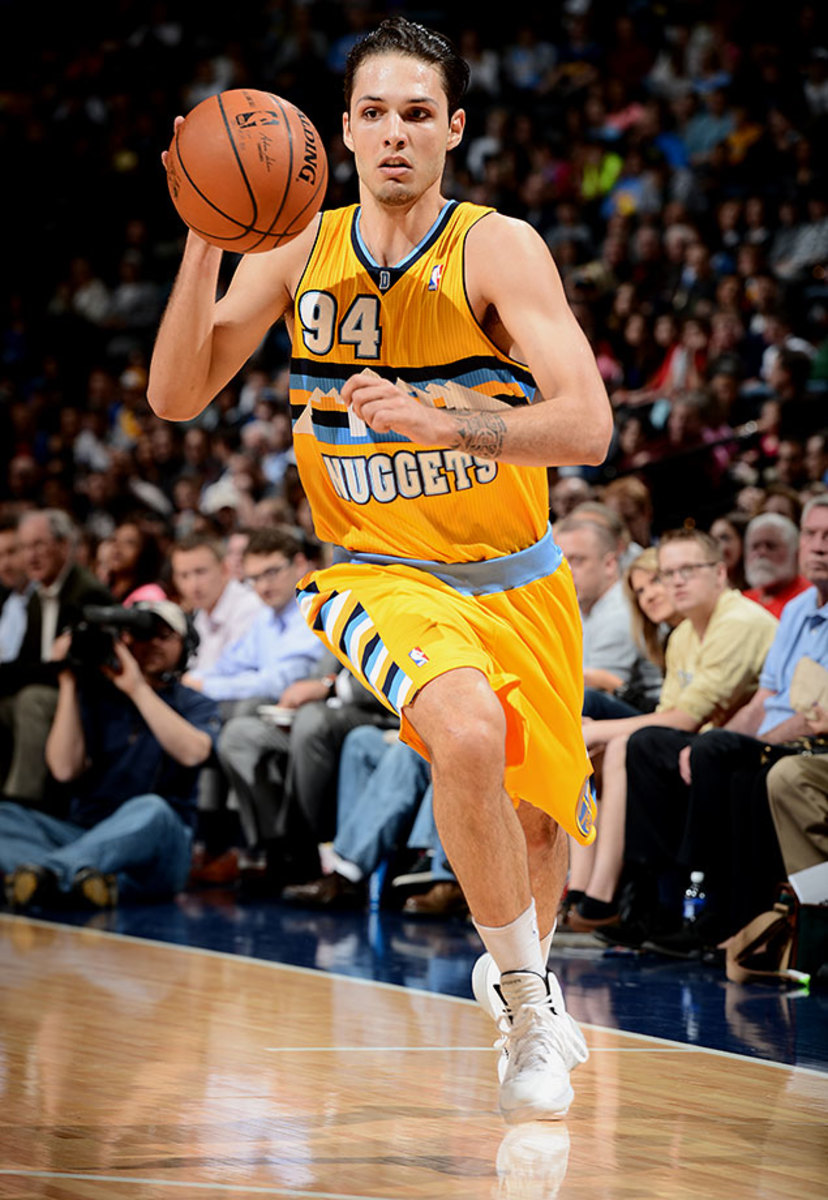
The French guard took a step forward last year at age 22, averaging 12 points per game for the Magic. He’s become a member of the French national team as well. The best may still be to come.
96 — Metta World Peace (Ron Artest)
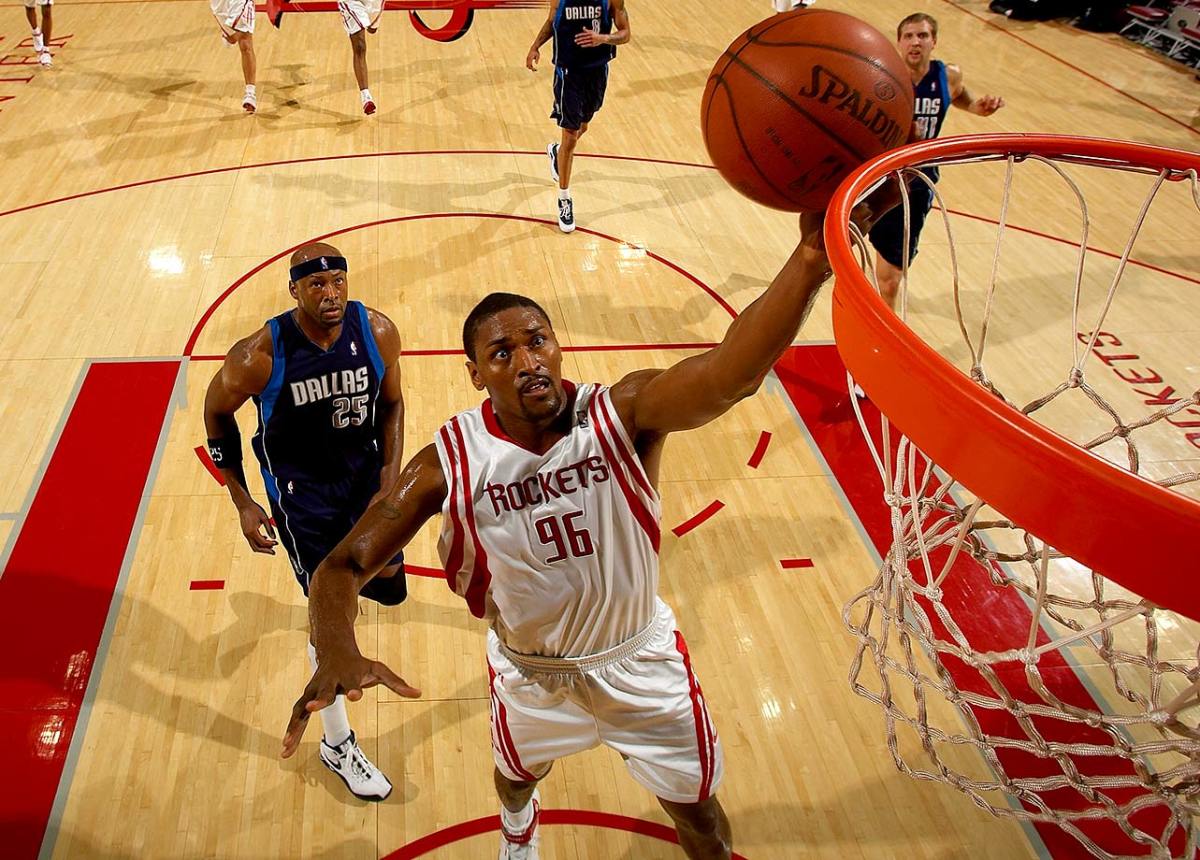
Not surpisingly, a player who donned seven different numbers in his career would appear twice on this list. Metta World Peace, then Ron Artest, wore No. 96 in the 2008-09 season with the Houston Rockets. He led the team in three-pointers and steals, finishing second in scoring behind Yao Ming. He won a title with the Los Angeles Lakers the following season.
98 — Jason Collins
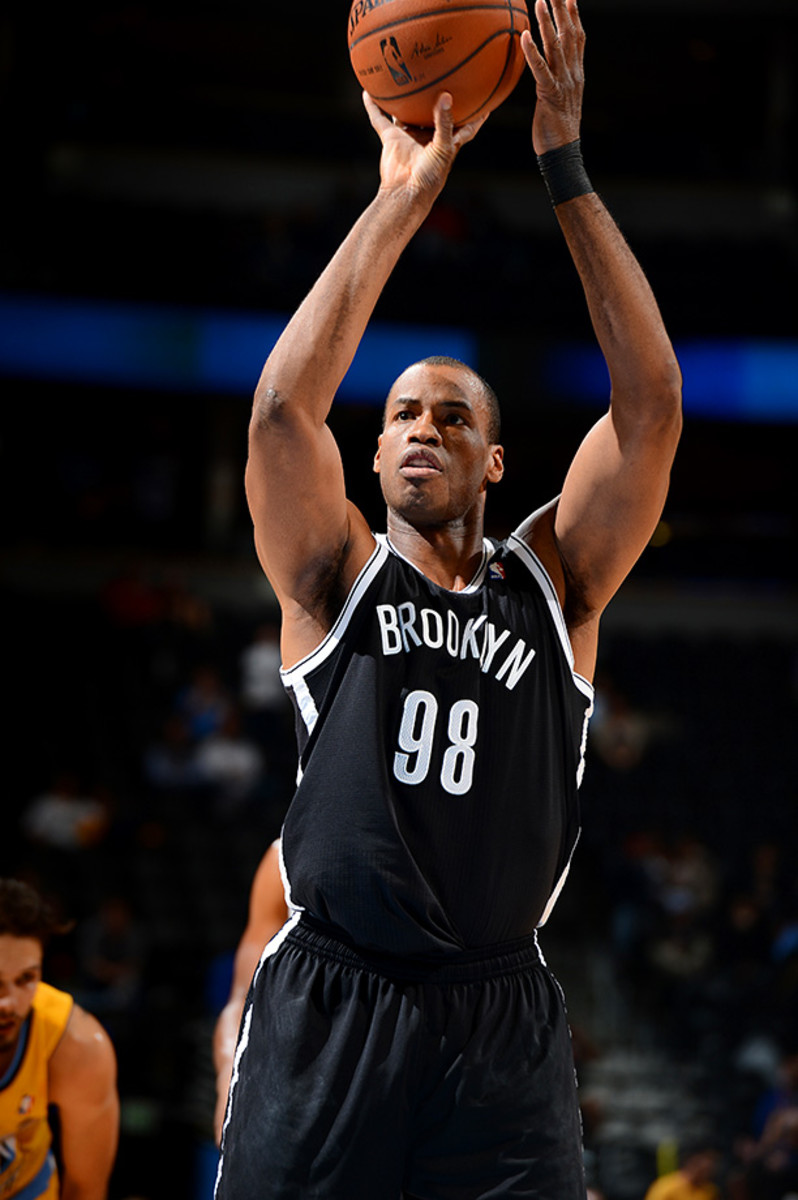
Collins never lived up to his first-round selection, but carved out a niche as a defensive-minded reserve center and hung around for 13 seasons. He averaged 3.6 points and 3.7 rebounds for his career. Collins became the first openly gay NBA player in 2014 and chose number 98 to honor Matthew Shepard, who was murdered in a 1998 hate crime.
99 — George Mikan
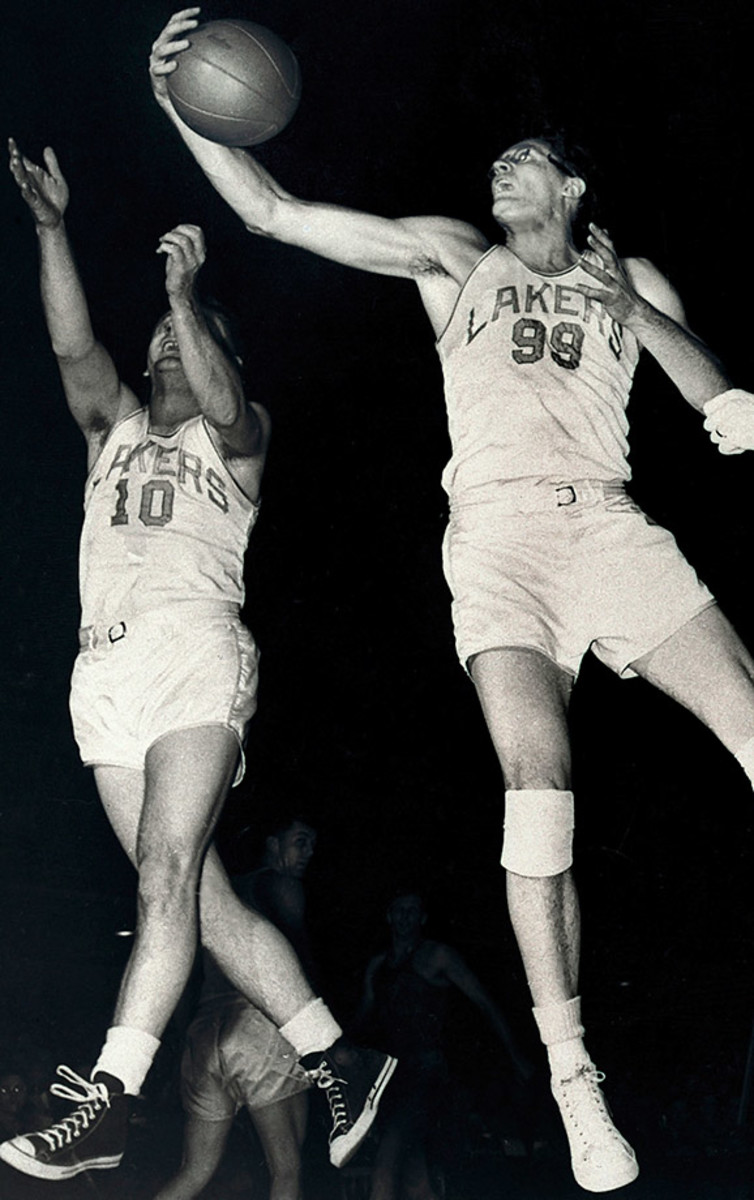
One of the game’s original superstars, Mikan was quite literally a giant among men at 6’10” in the 1940s and 1950s. He led the Lakers to four NBA championships and one BAA title before becoming an NBA franchise. Mikan was a four-time All-Star and was named one of the 50 greatest players in NBA history in 1996.
